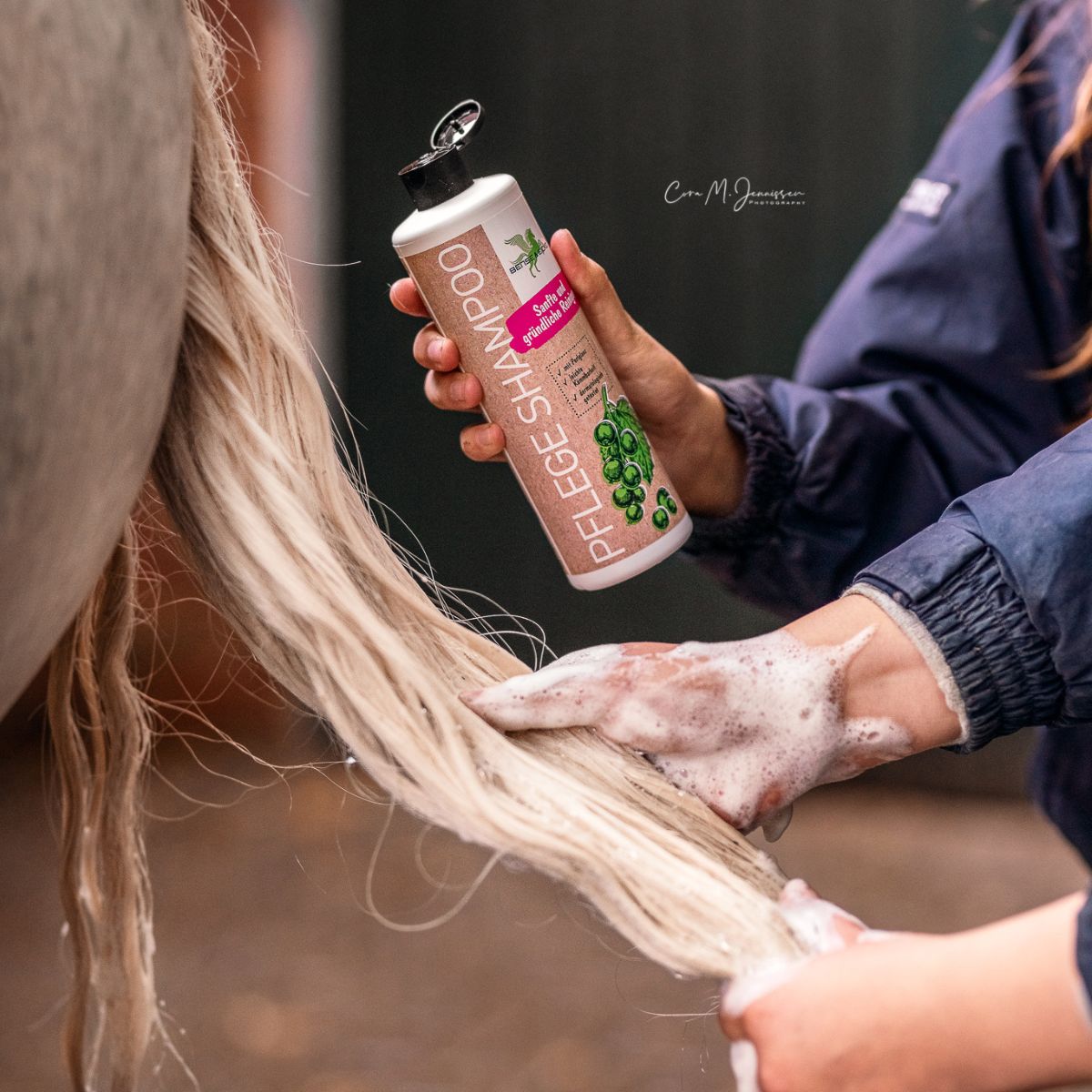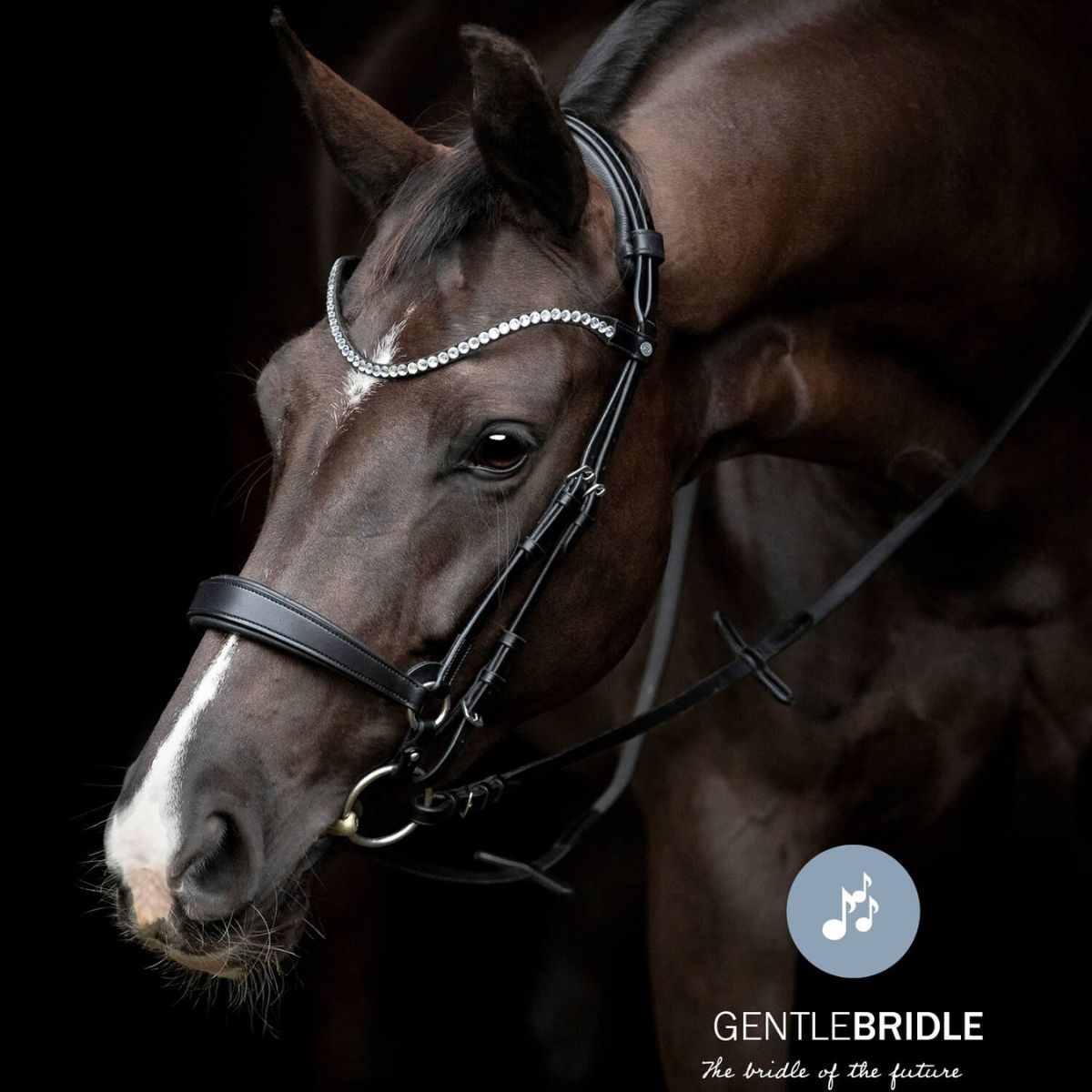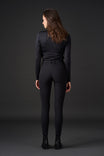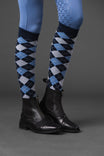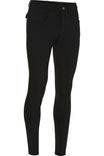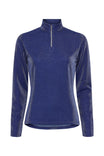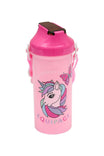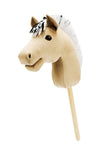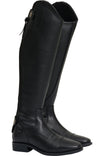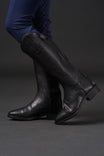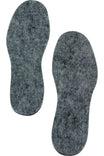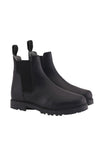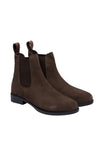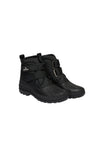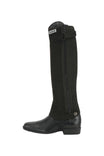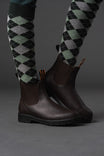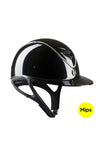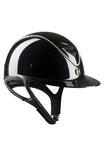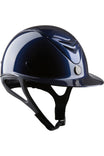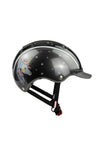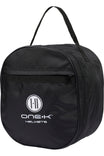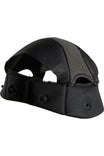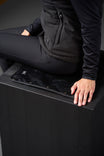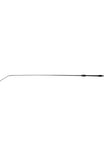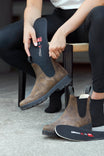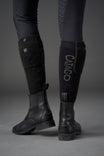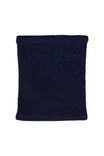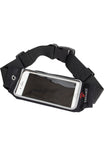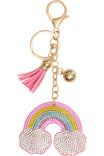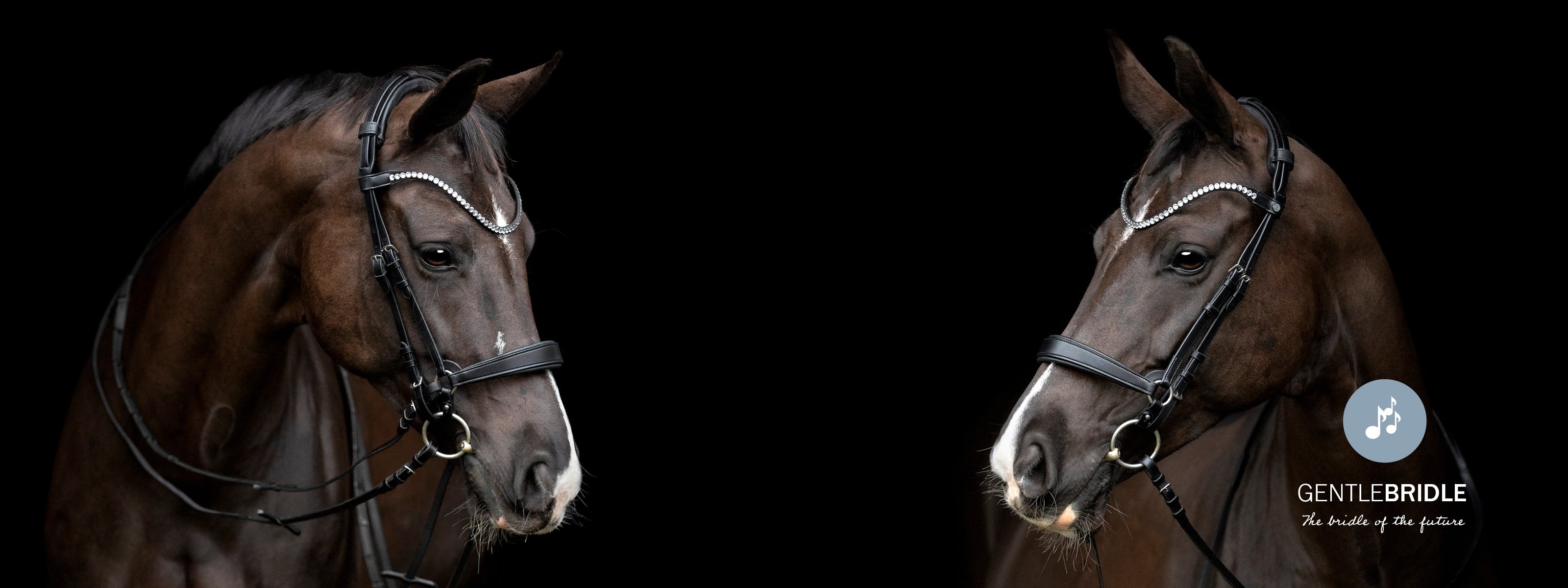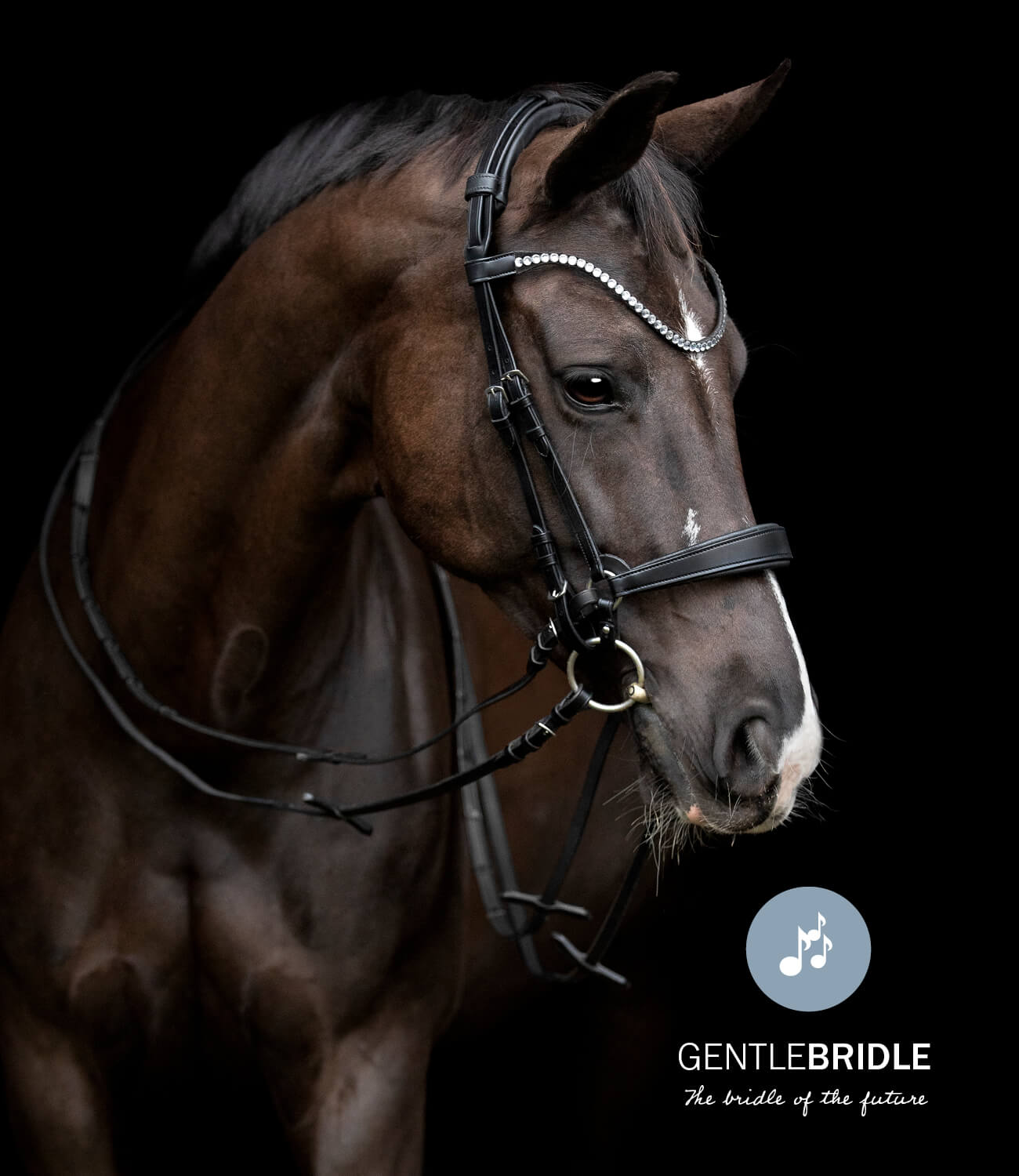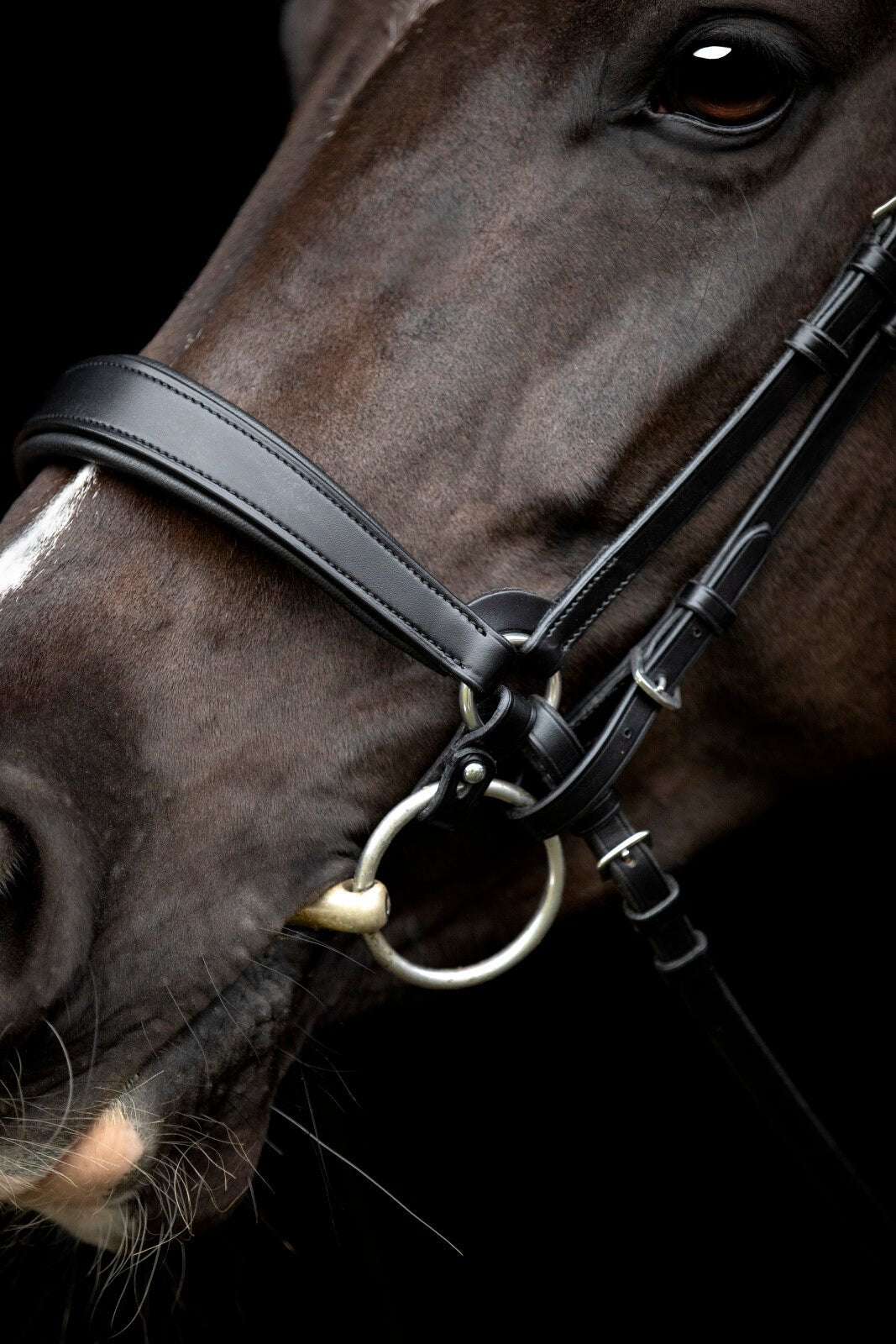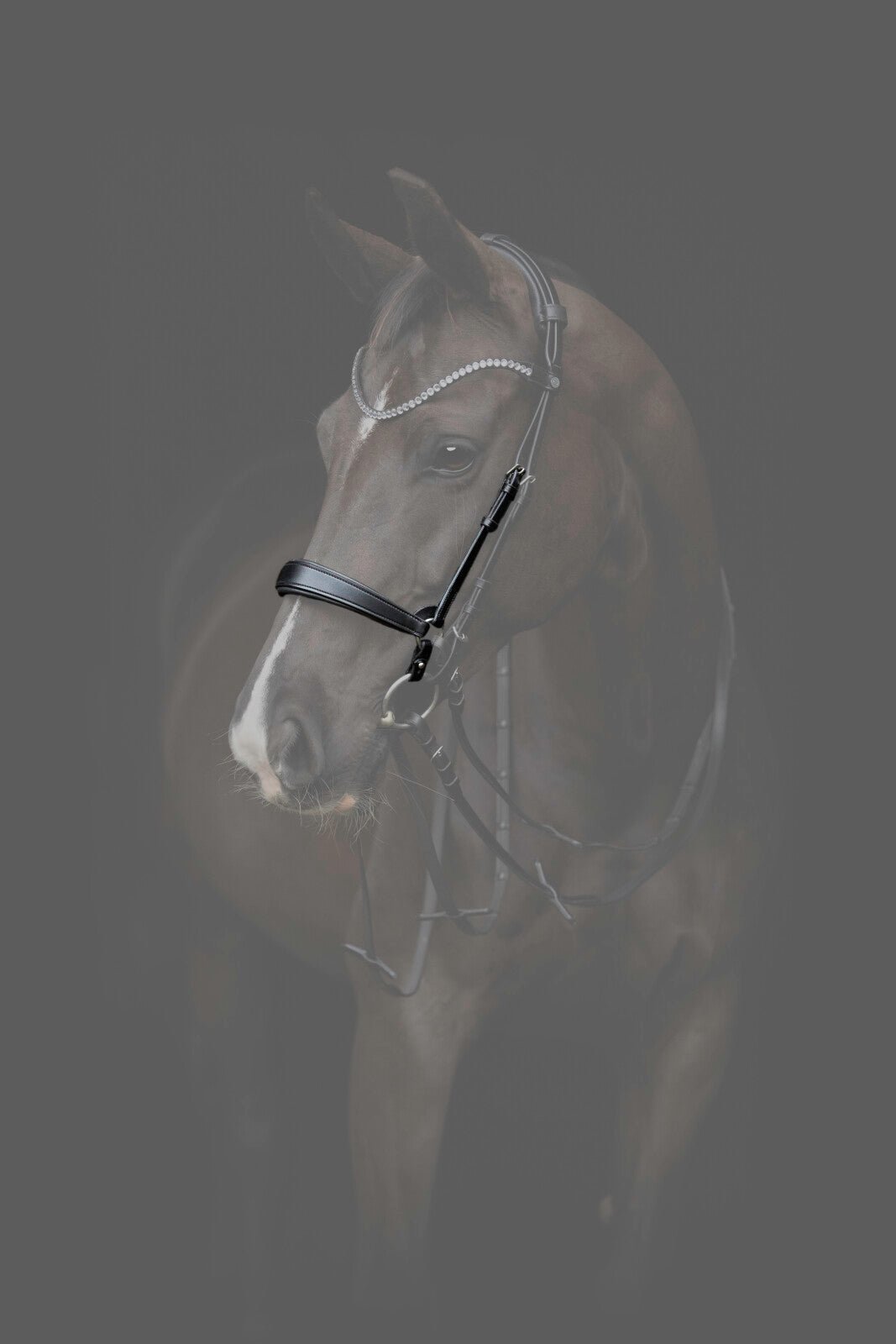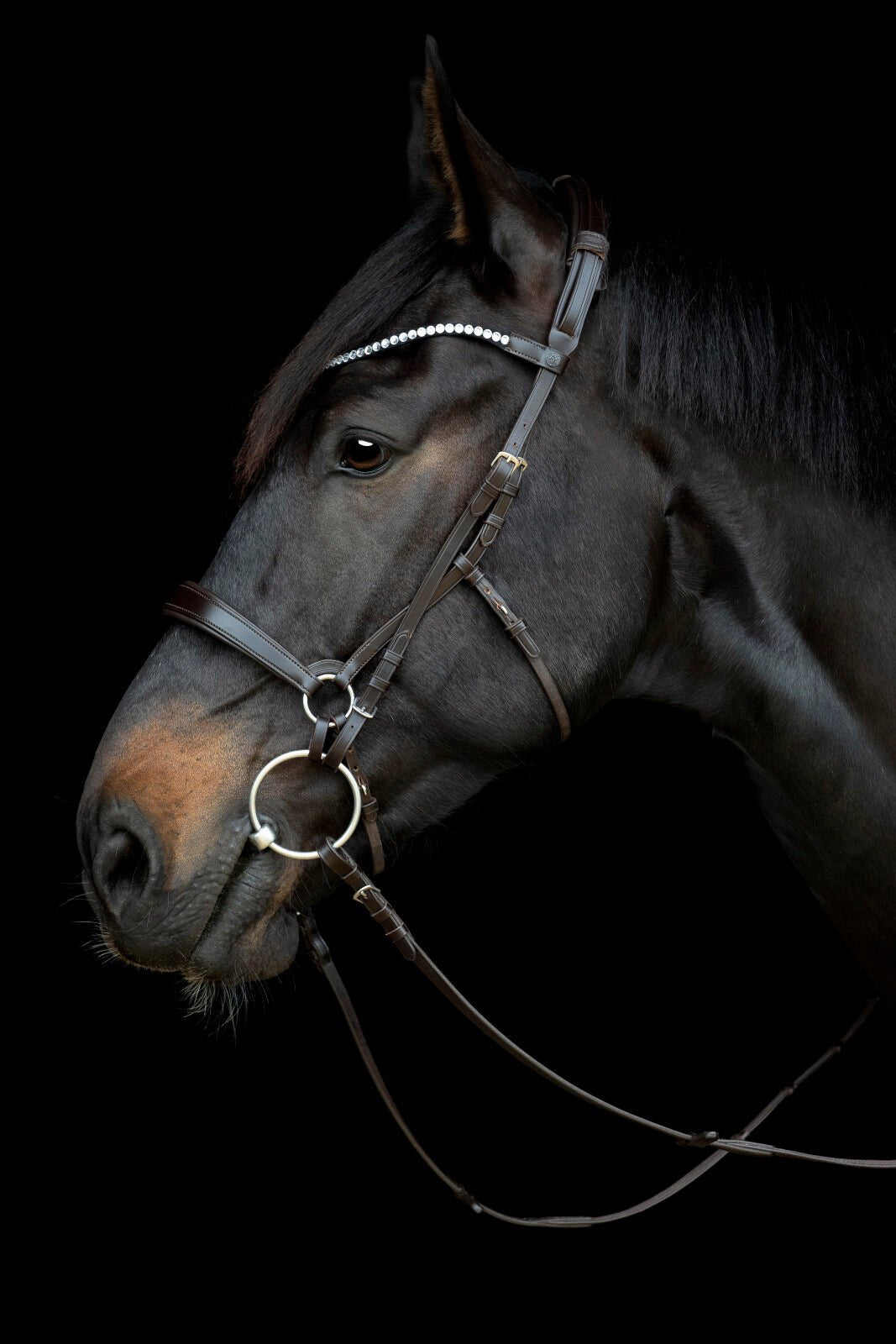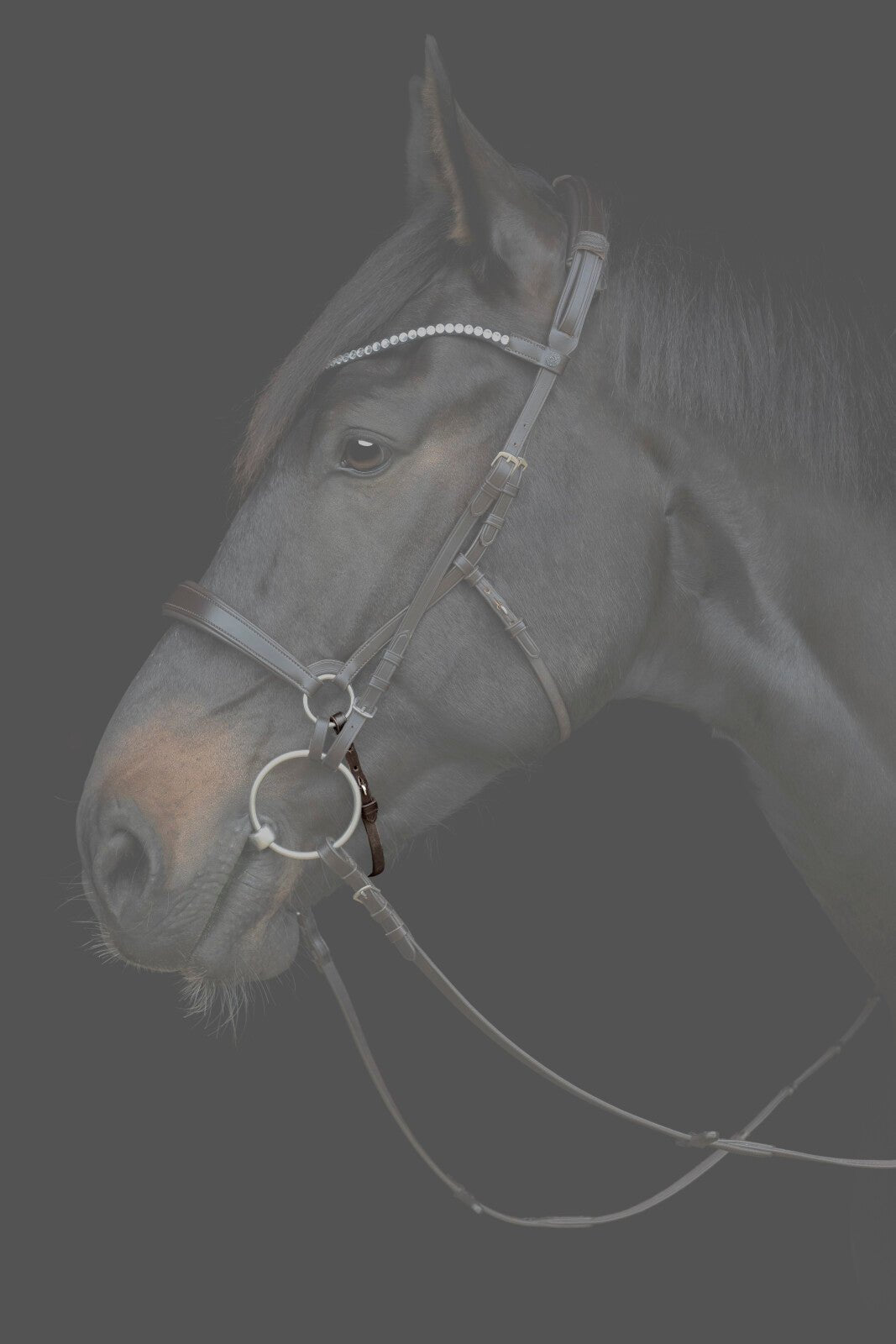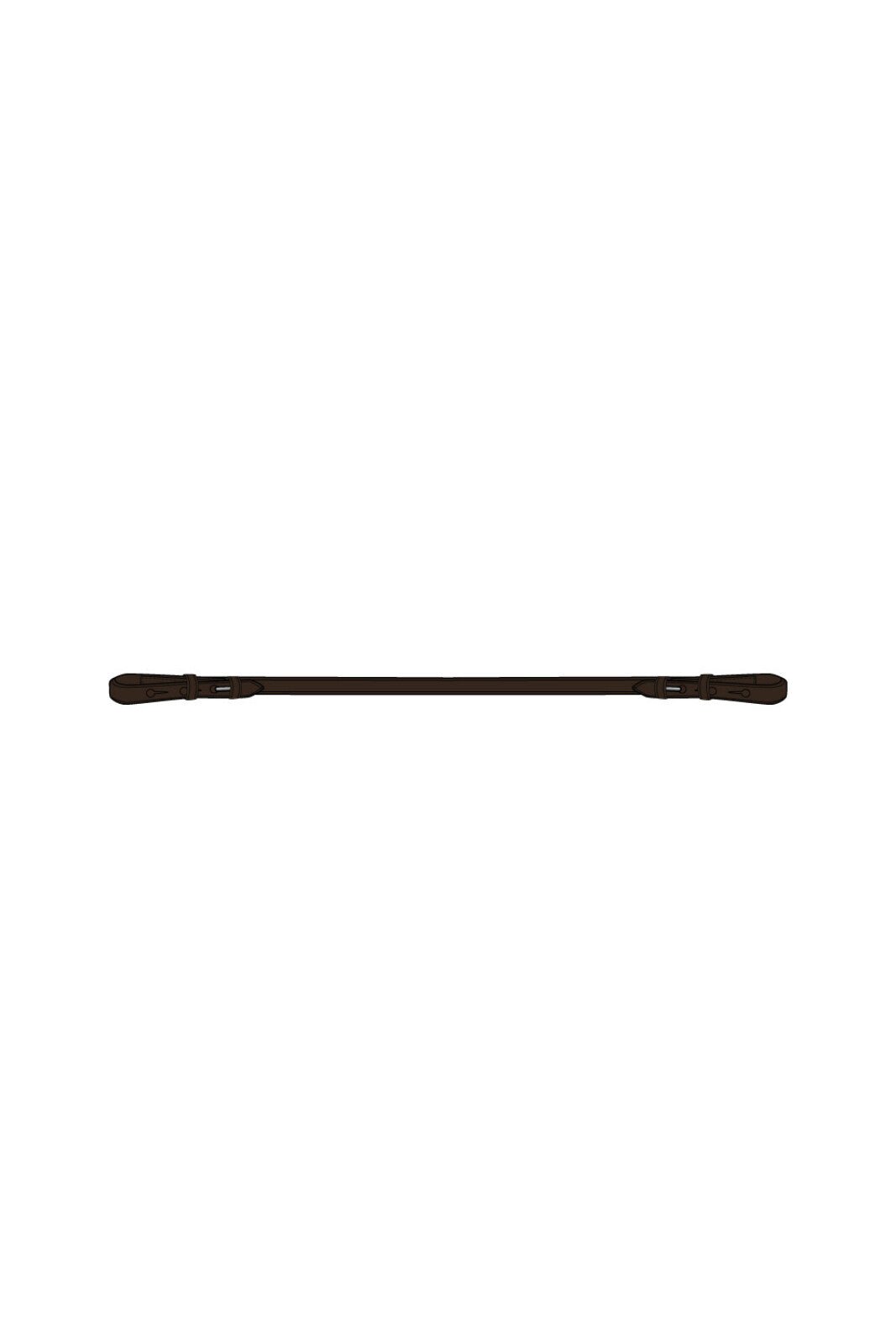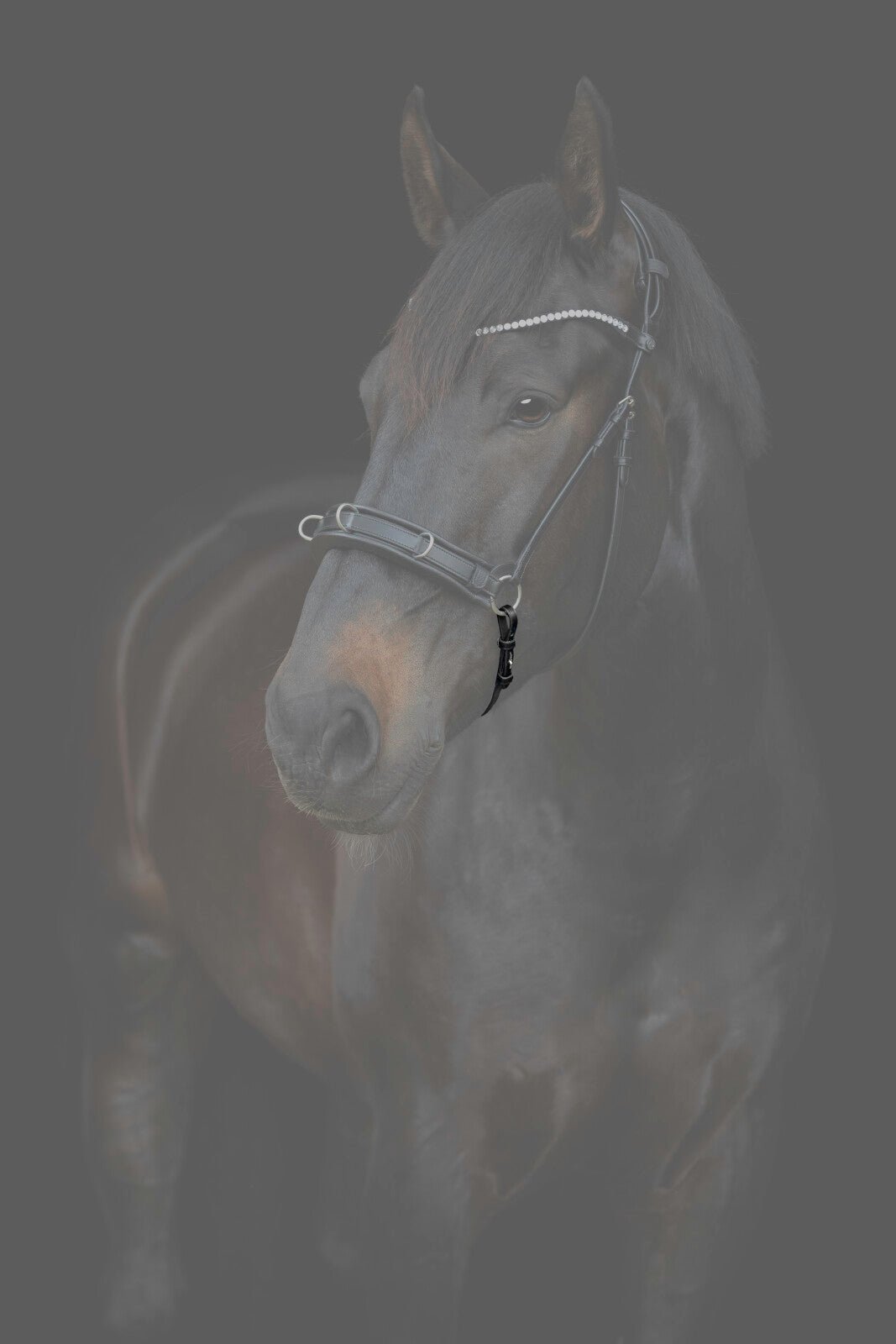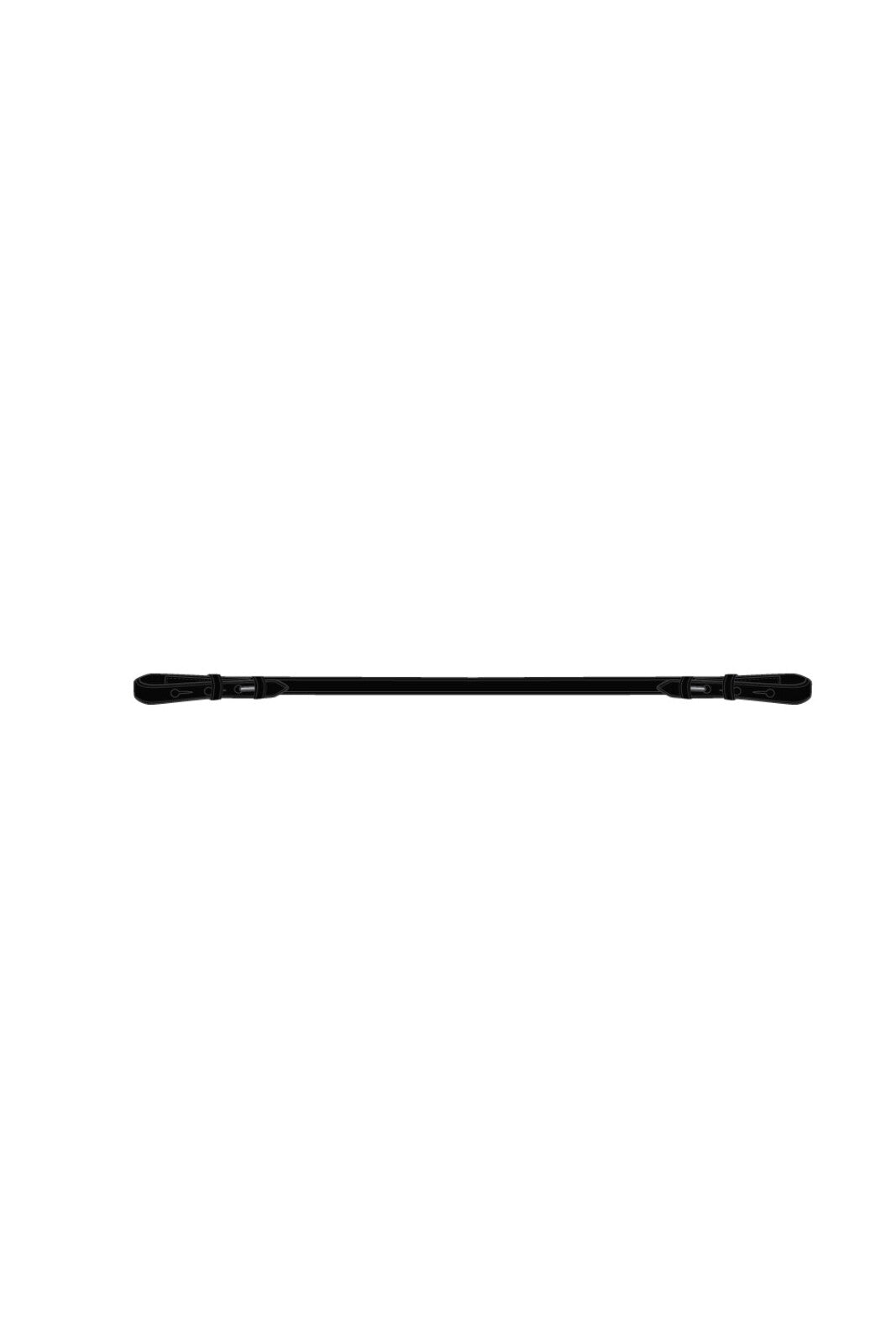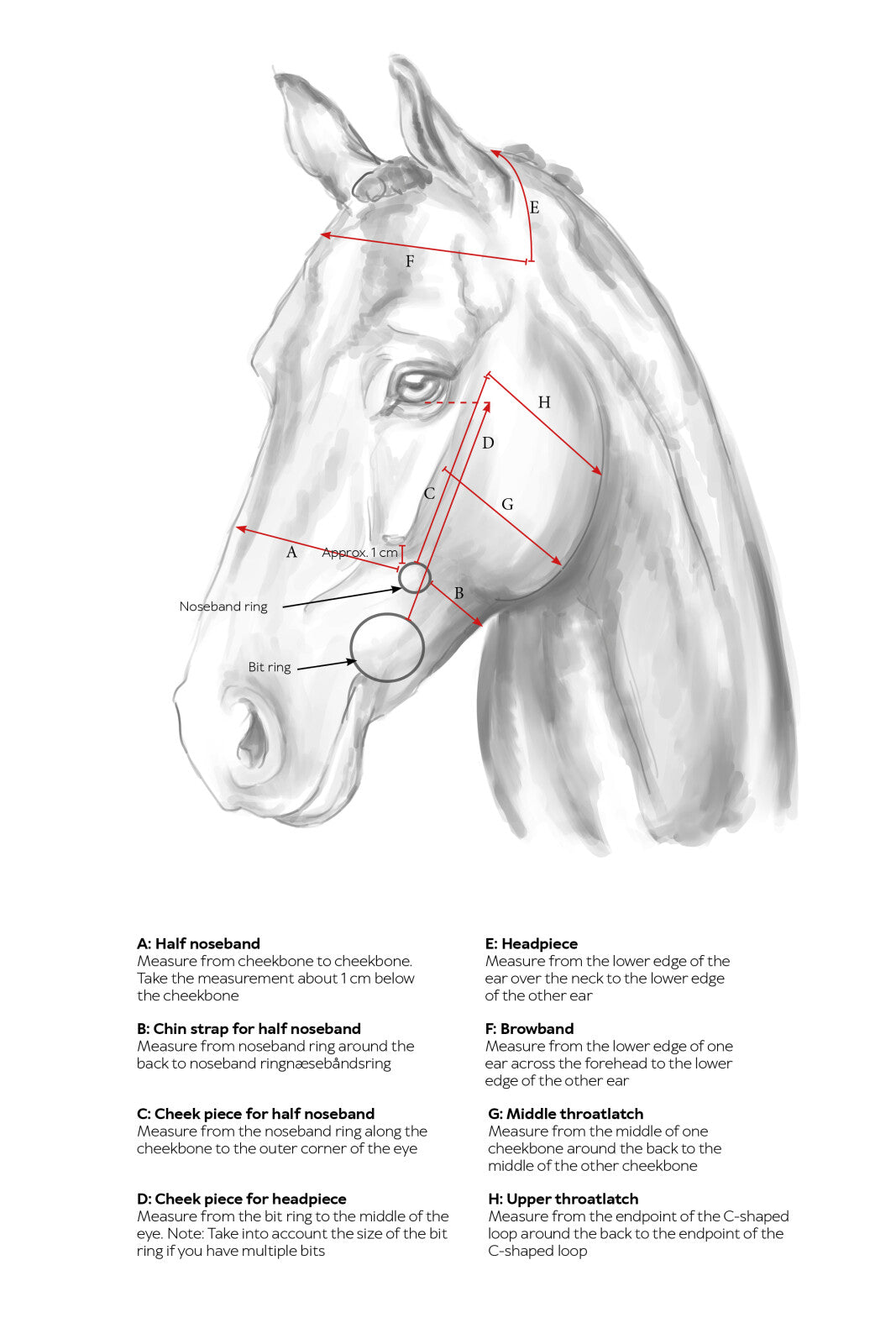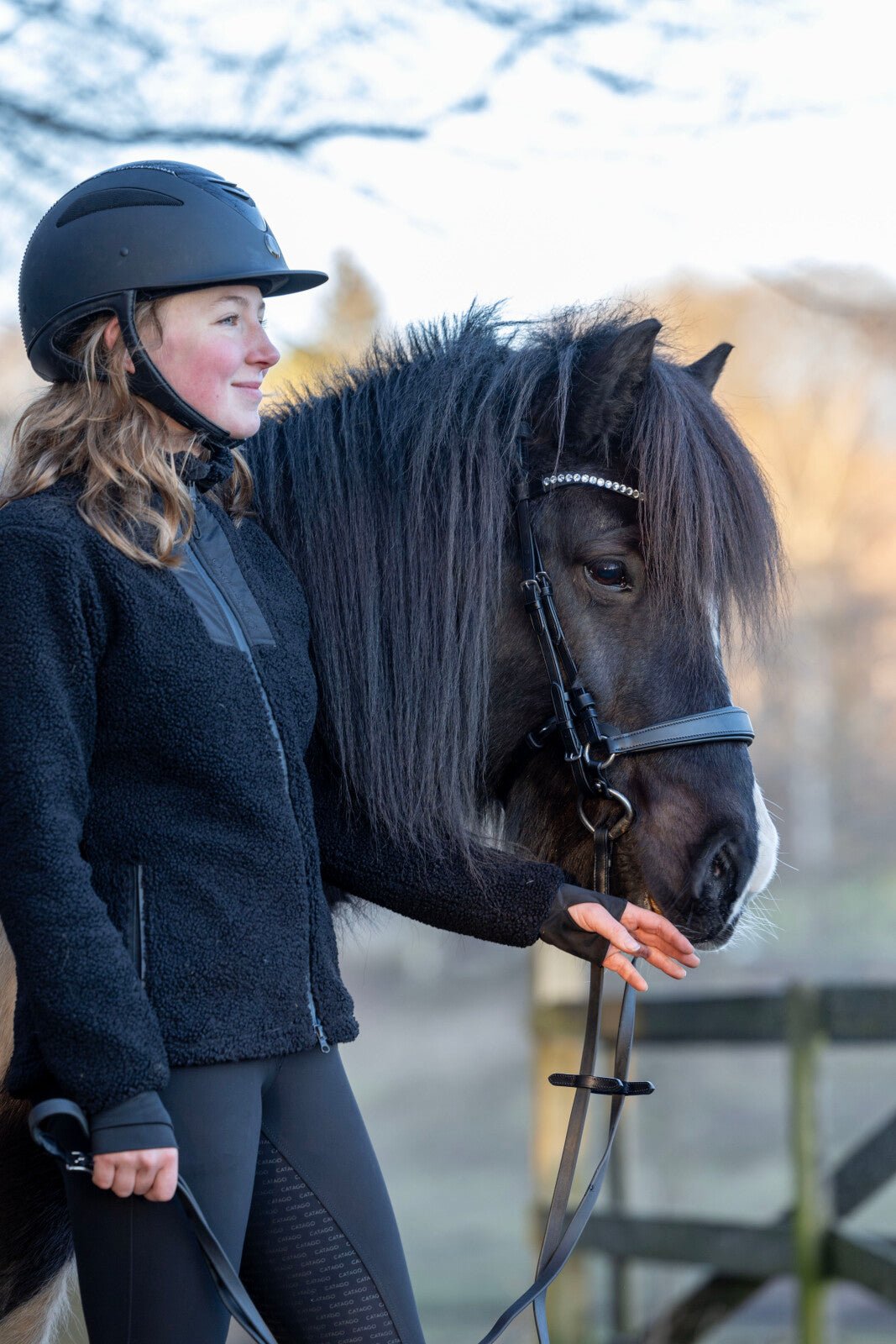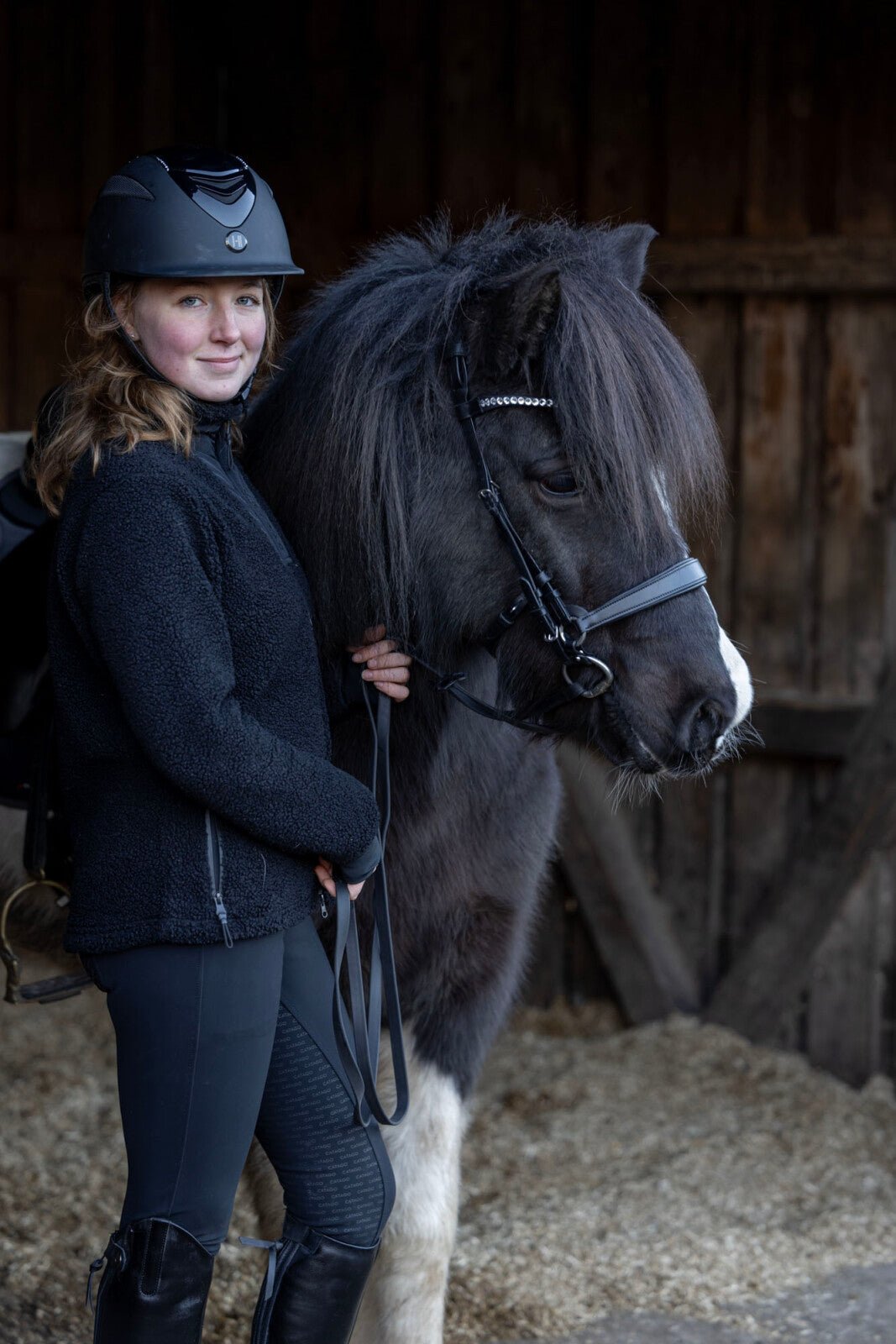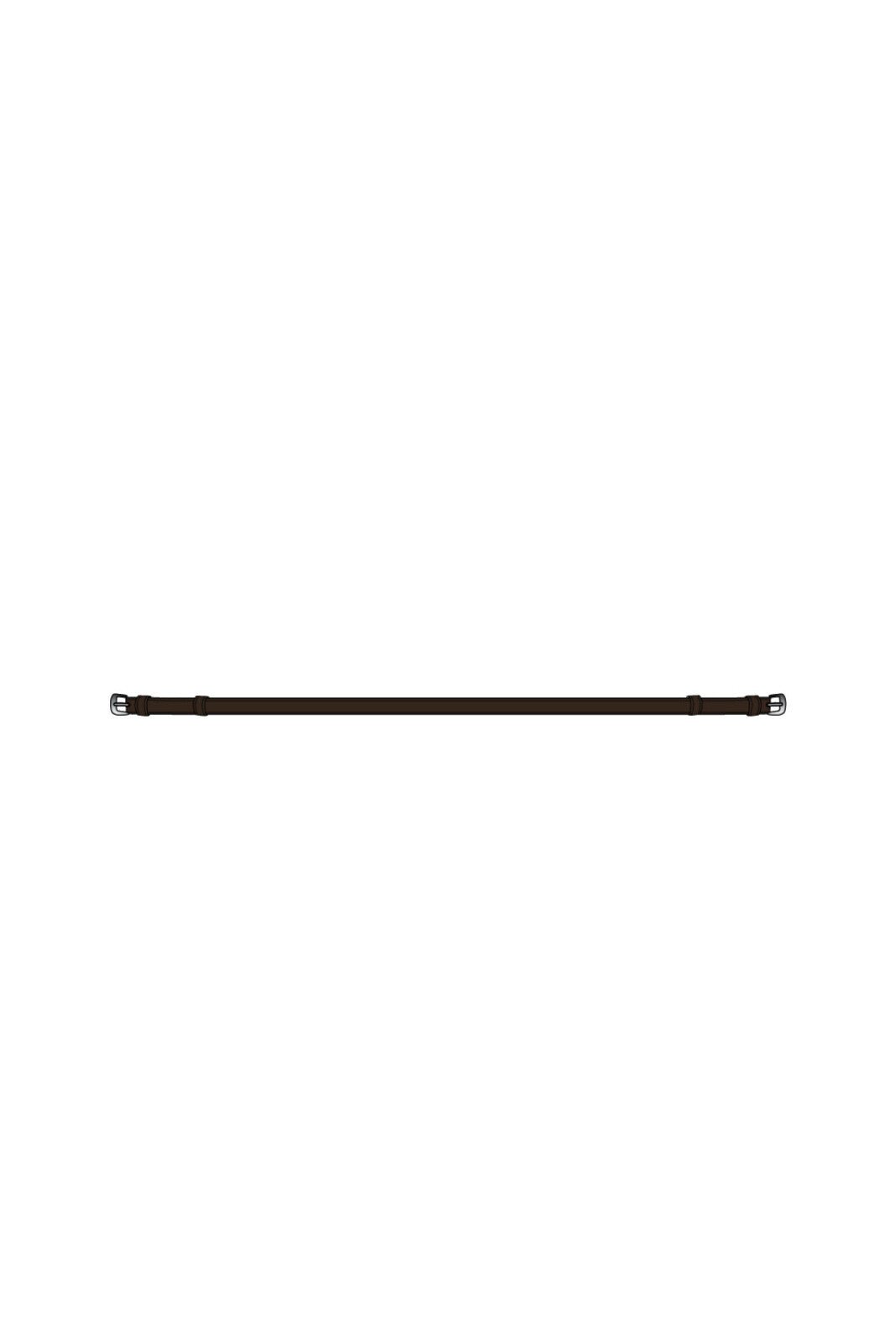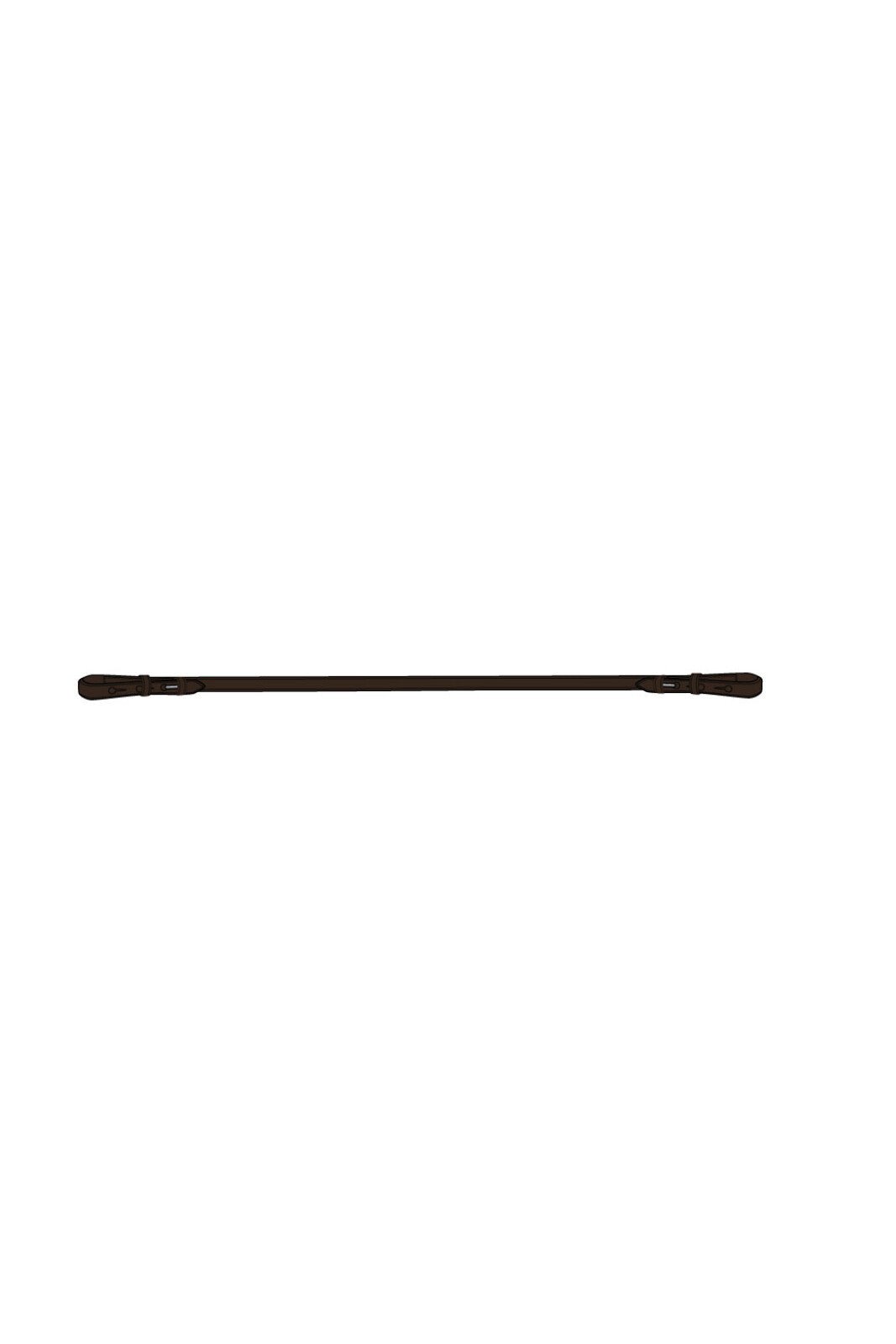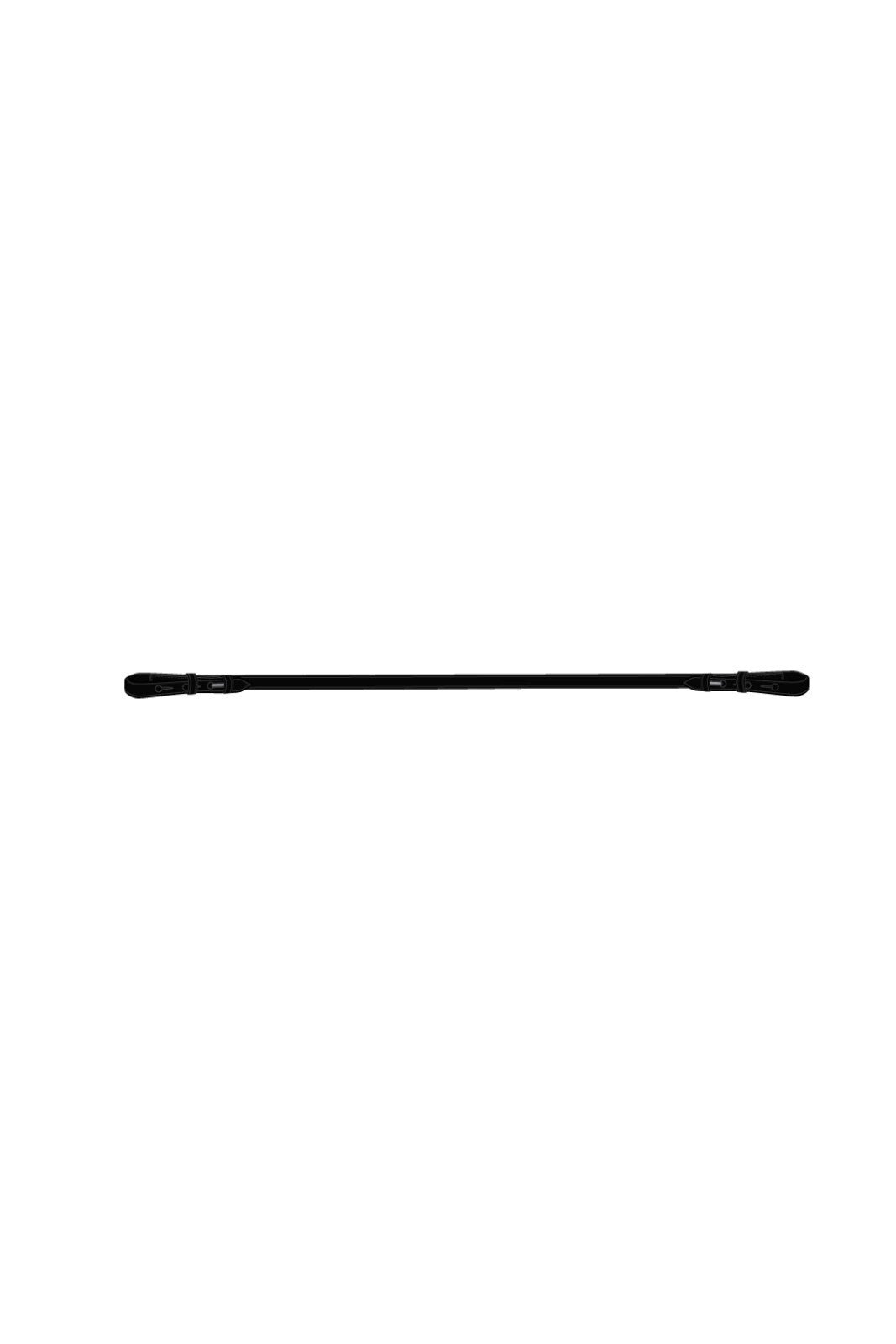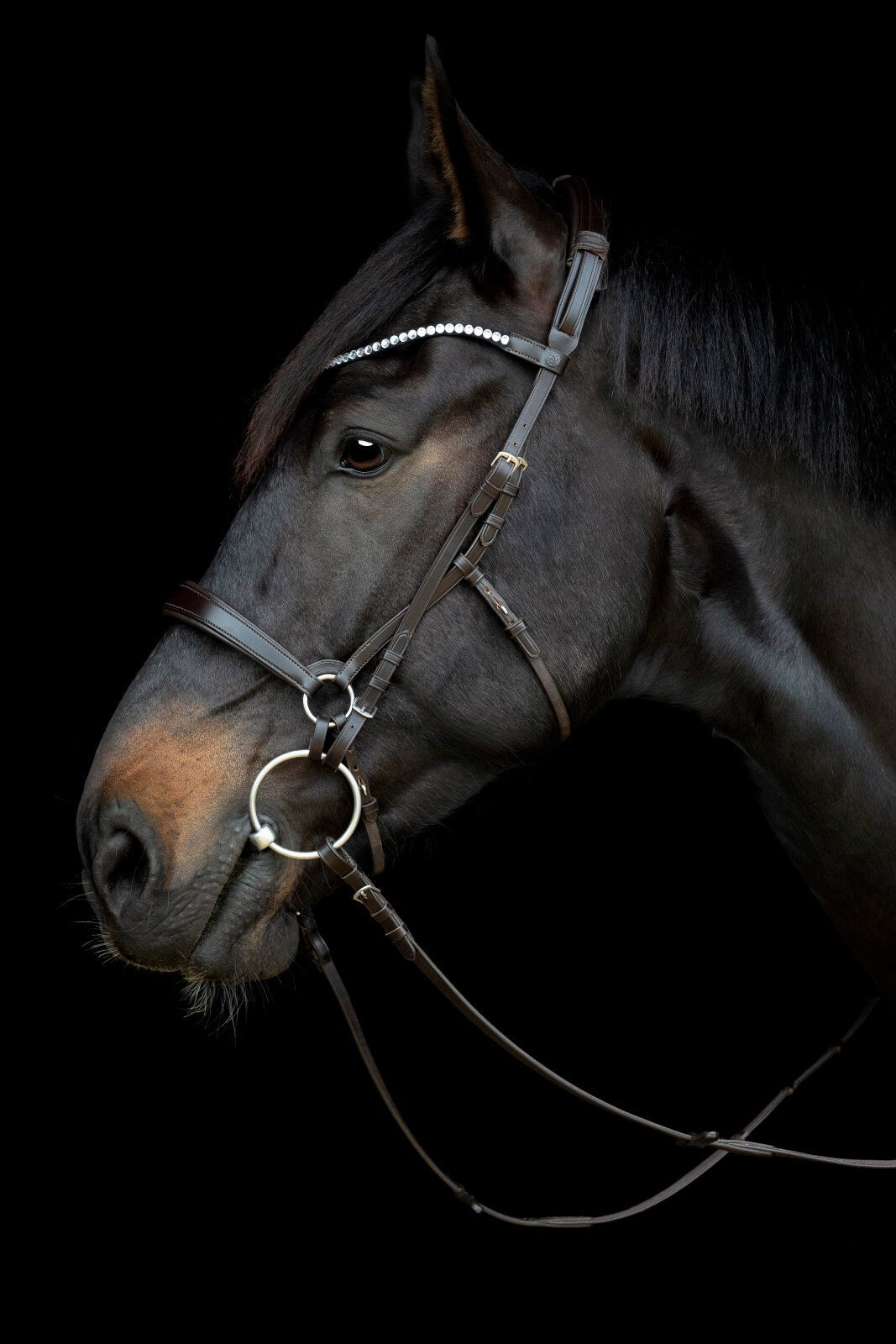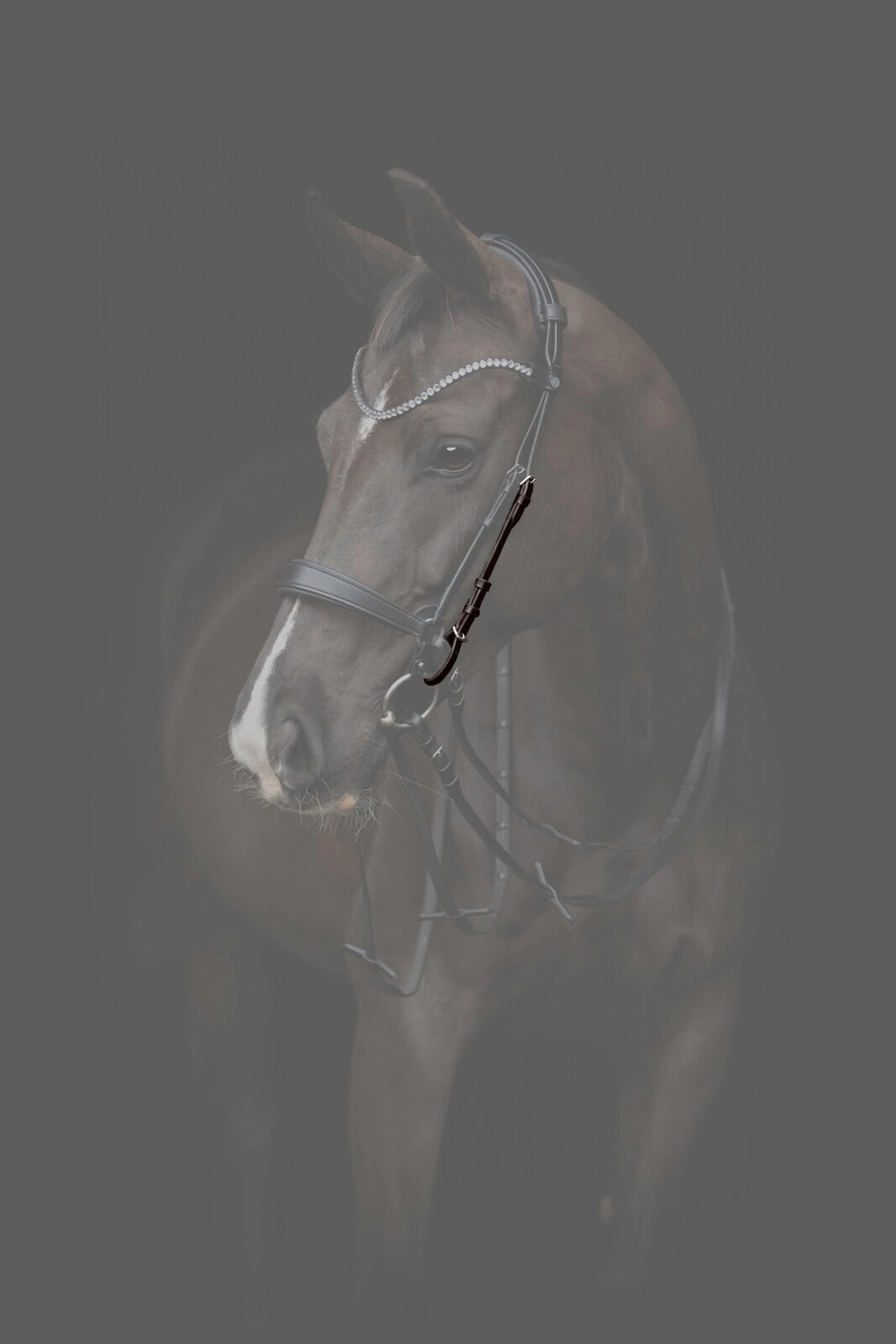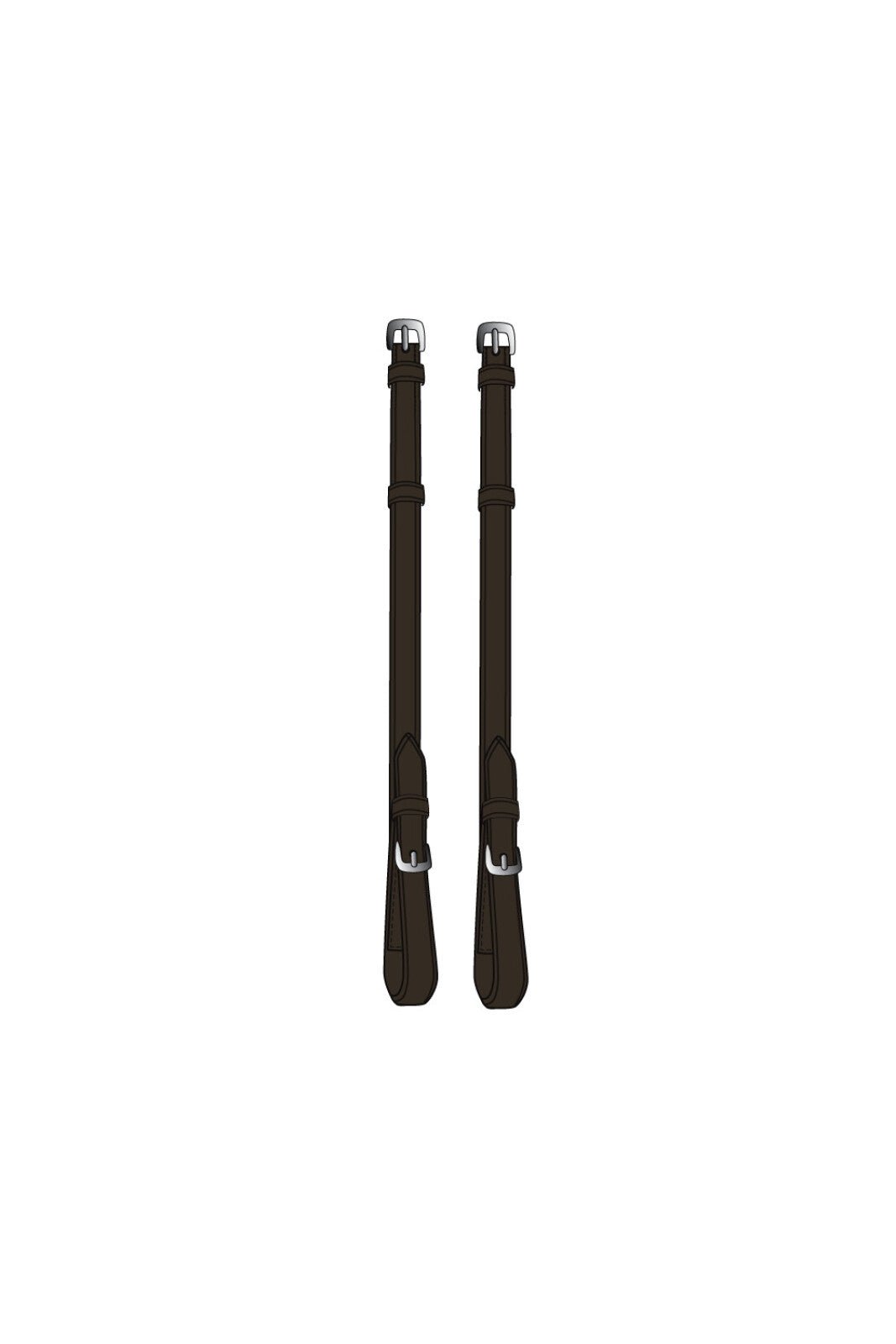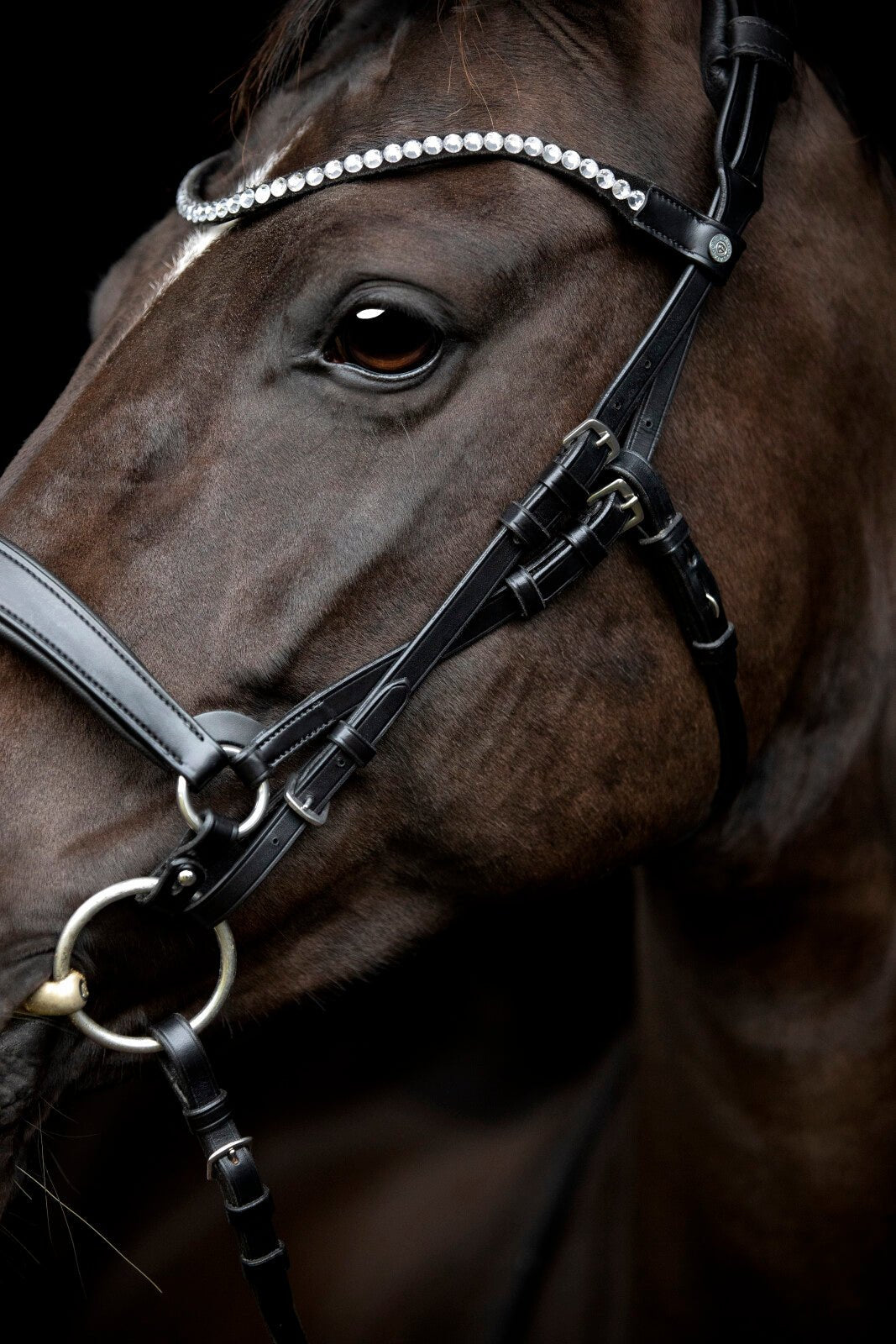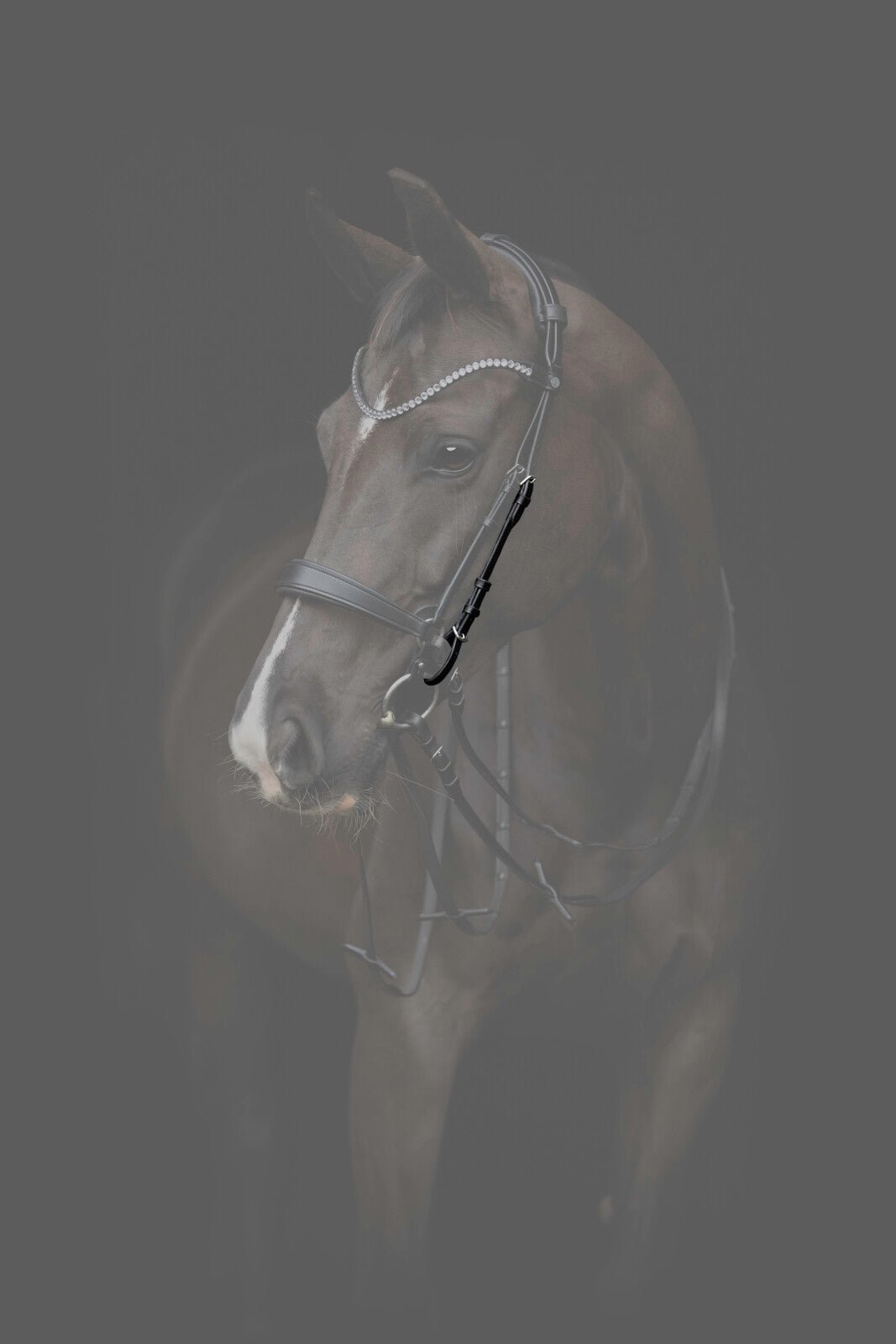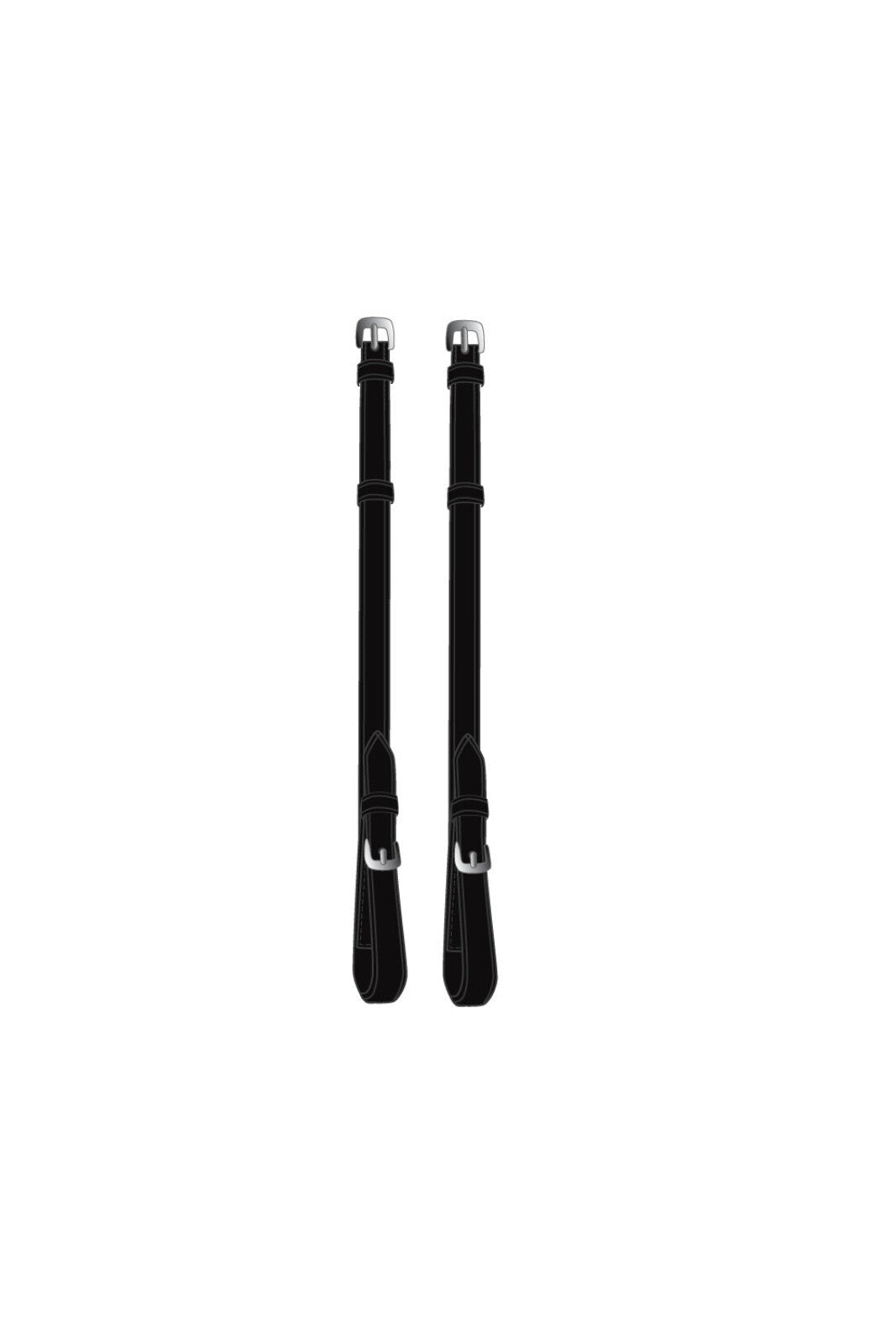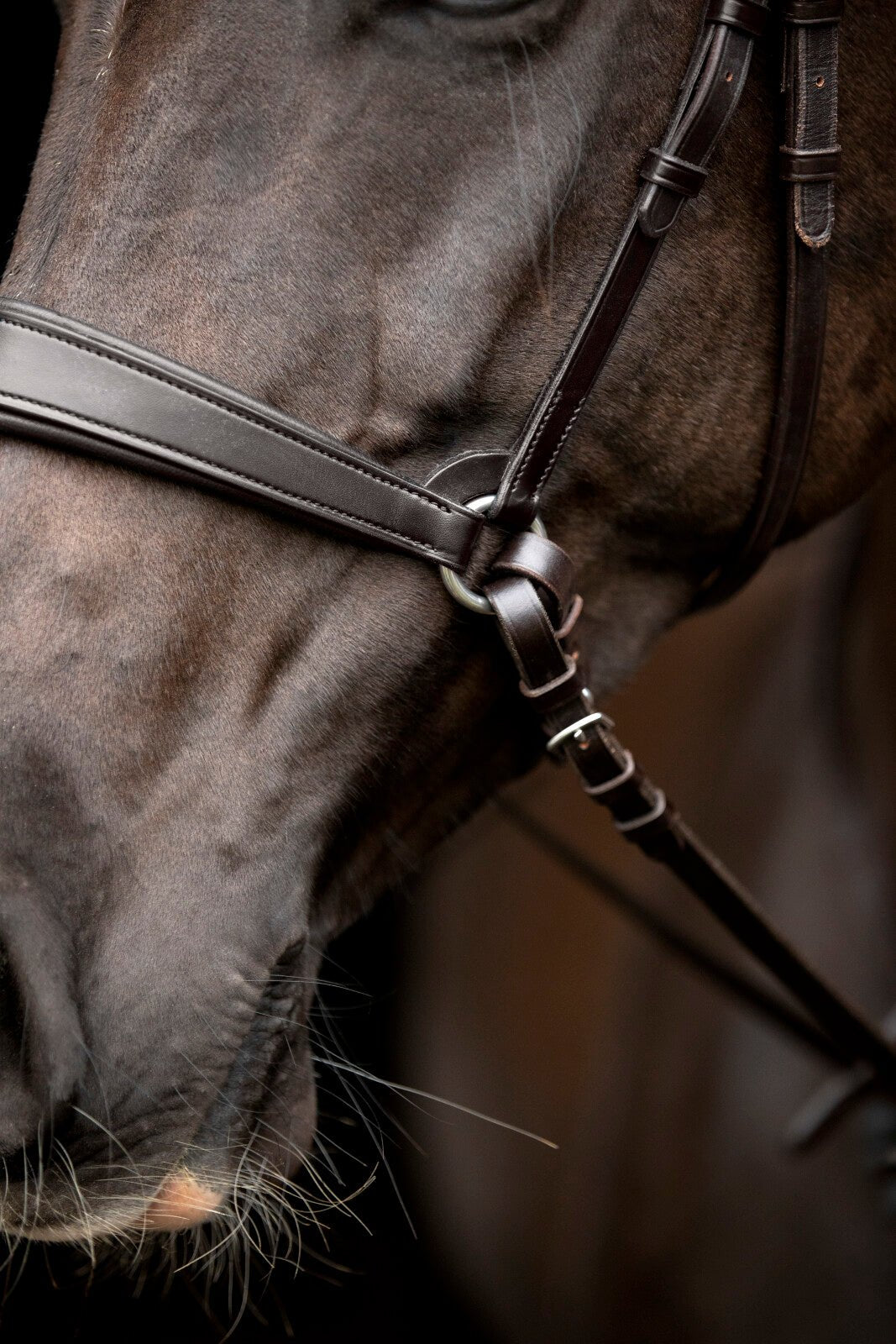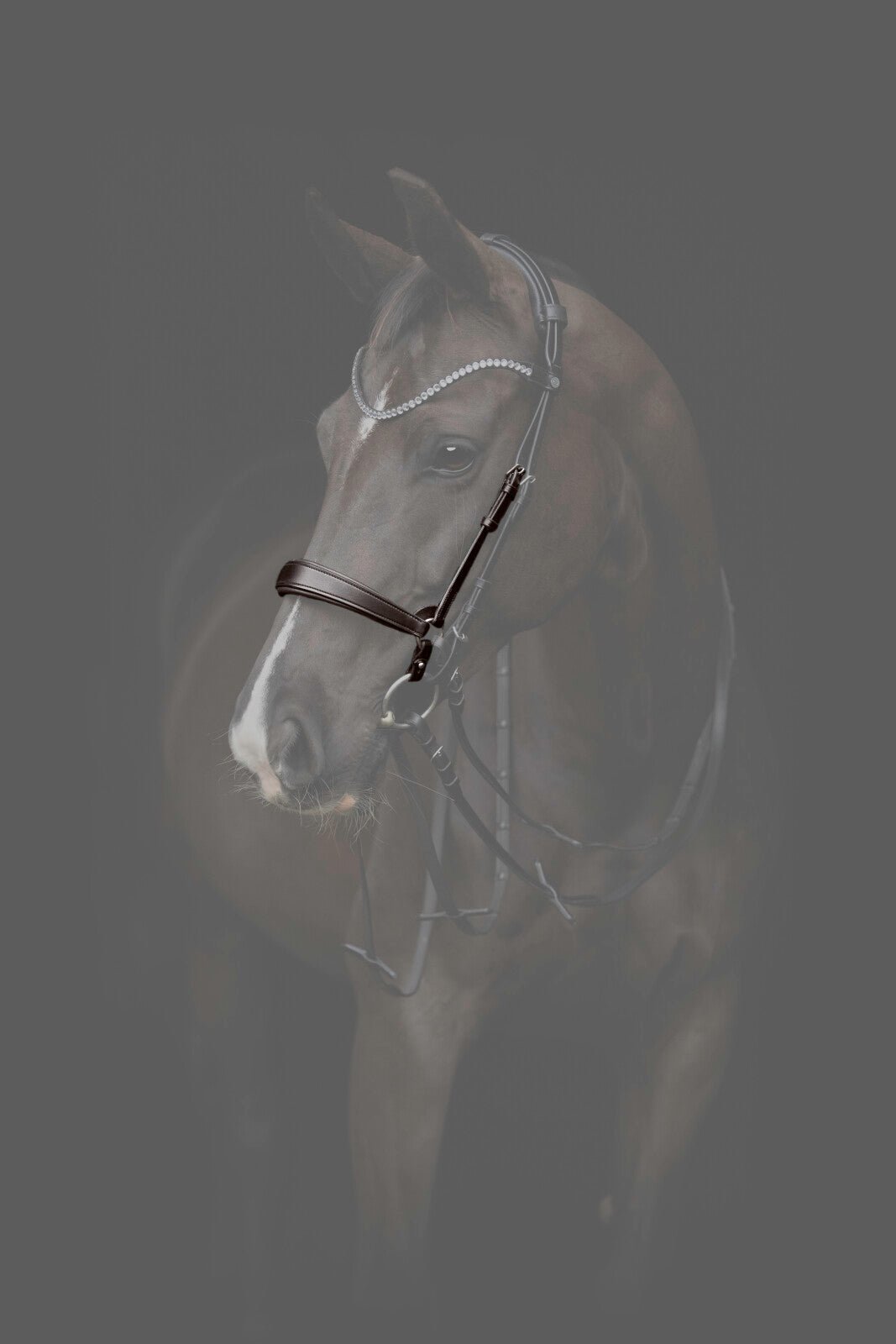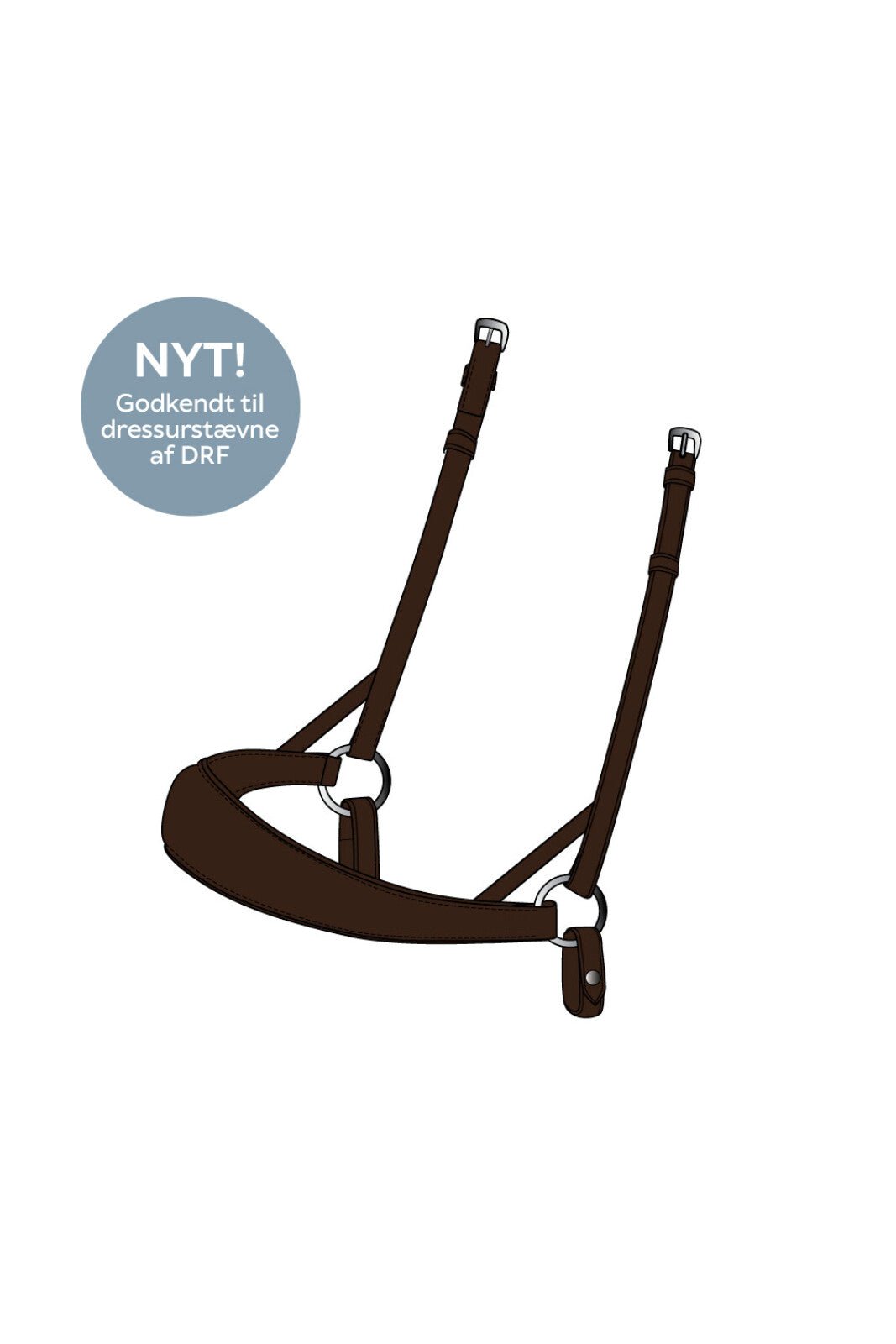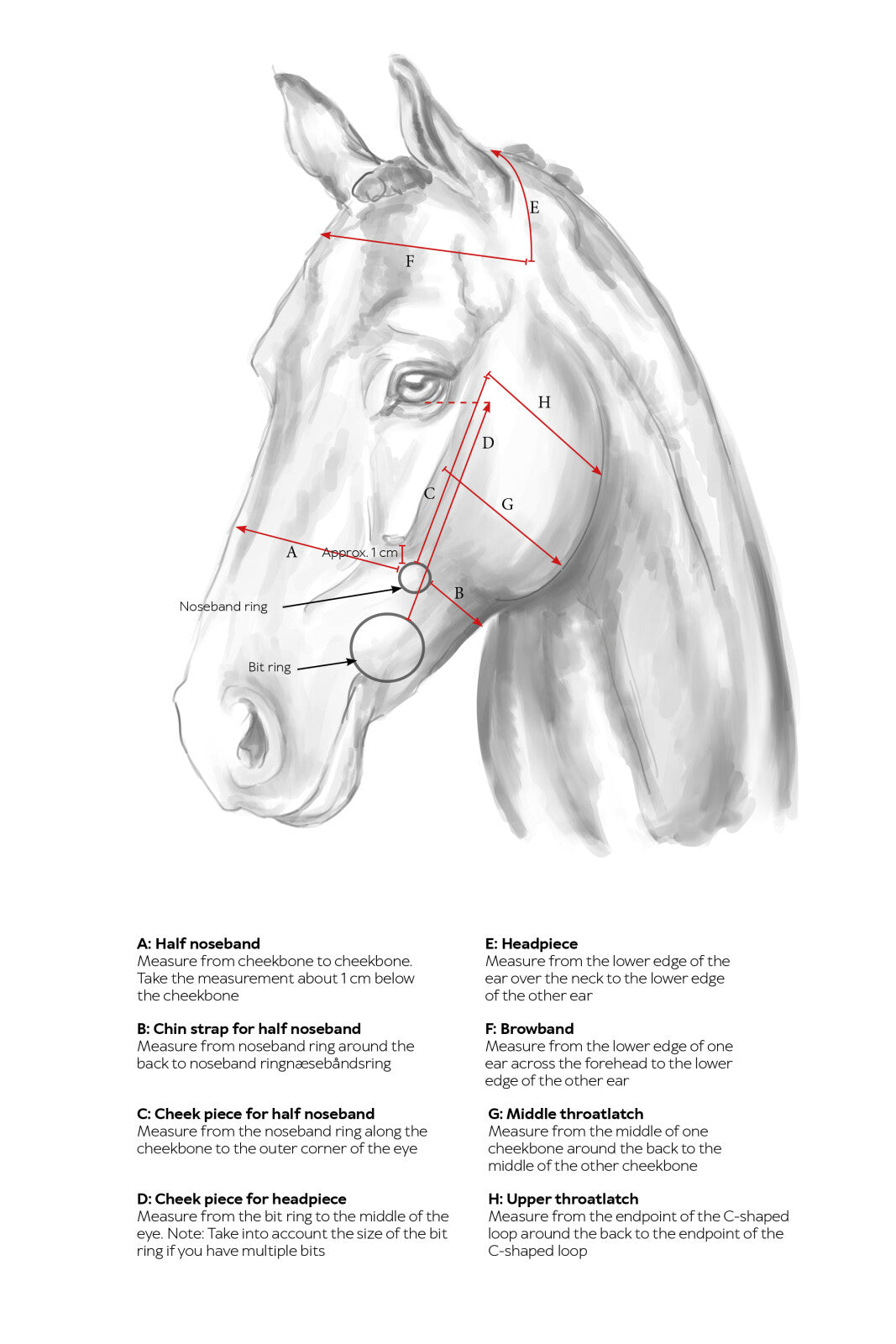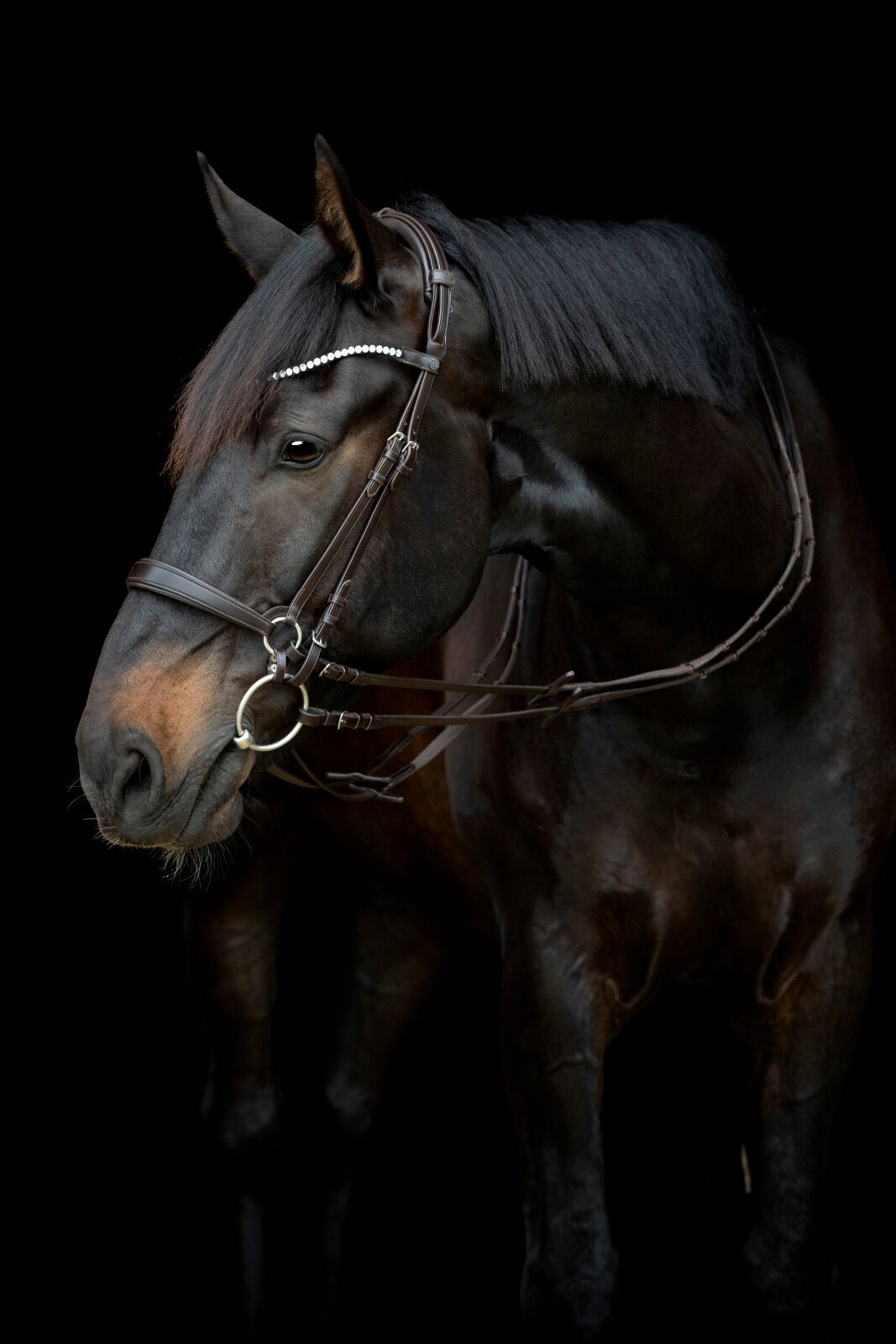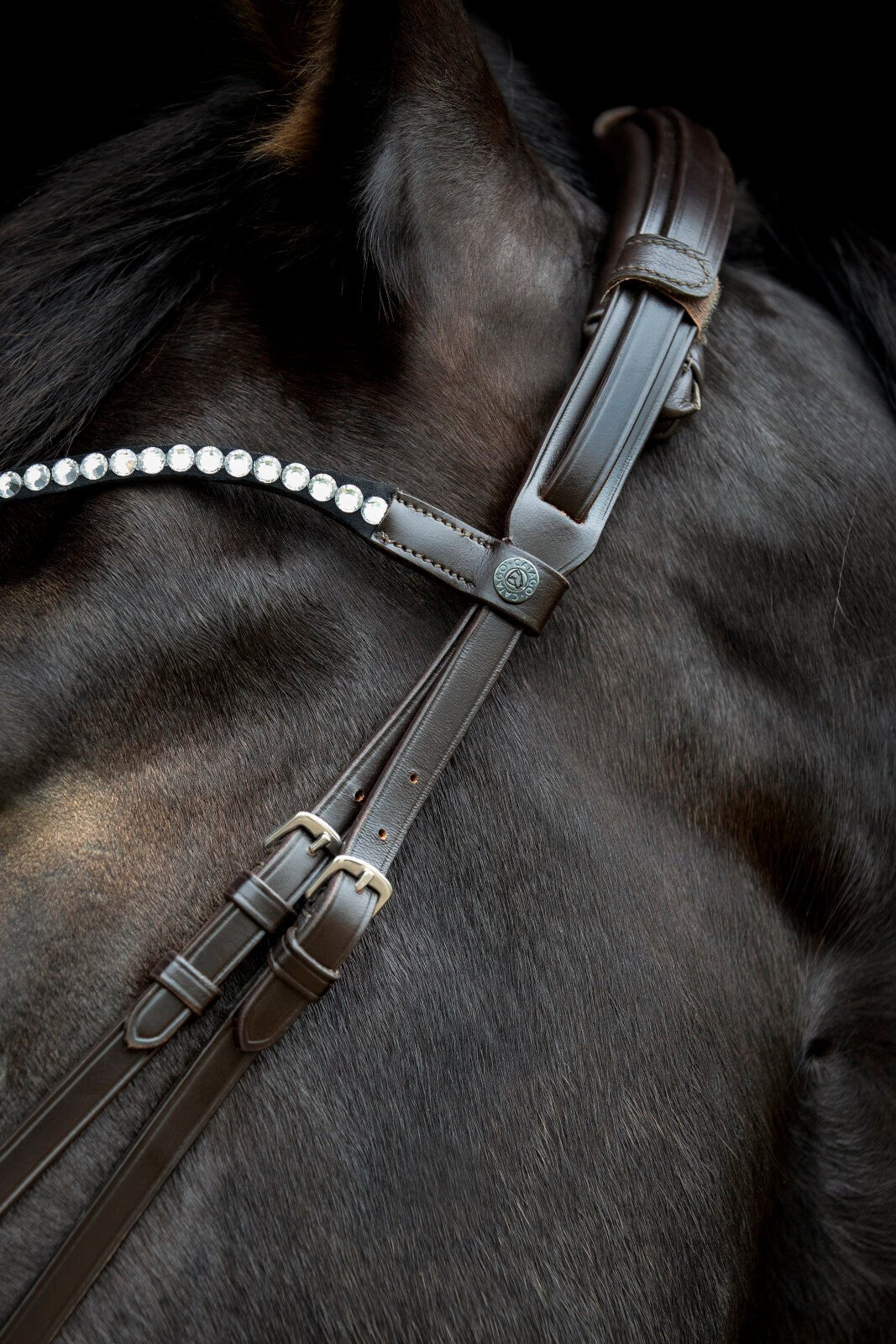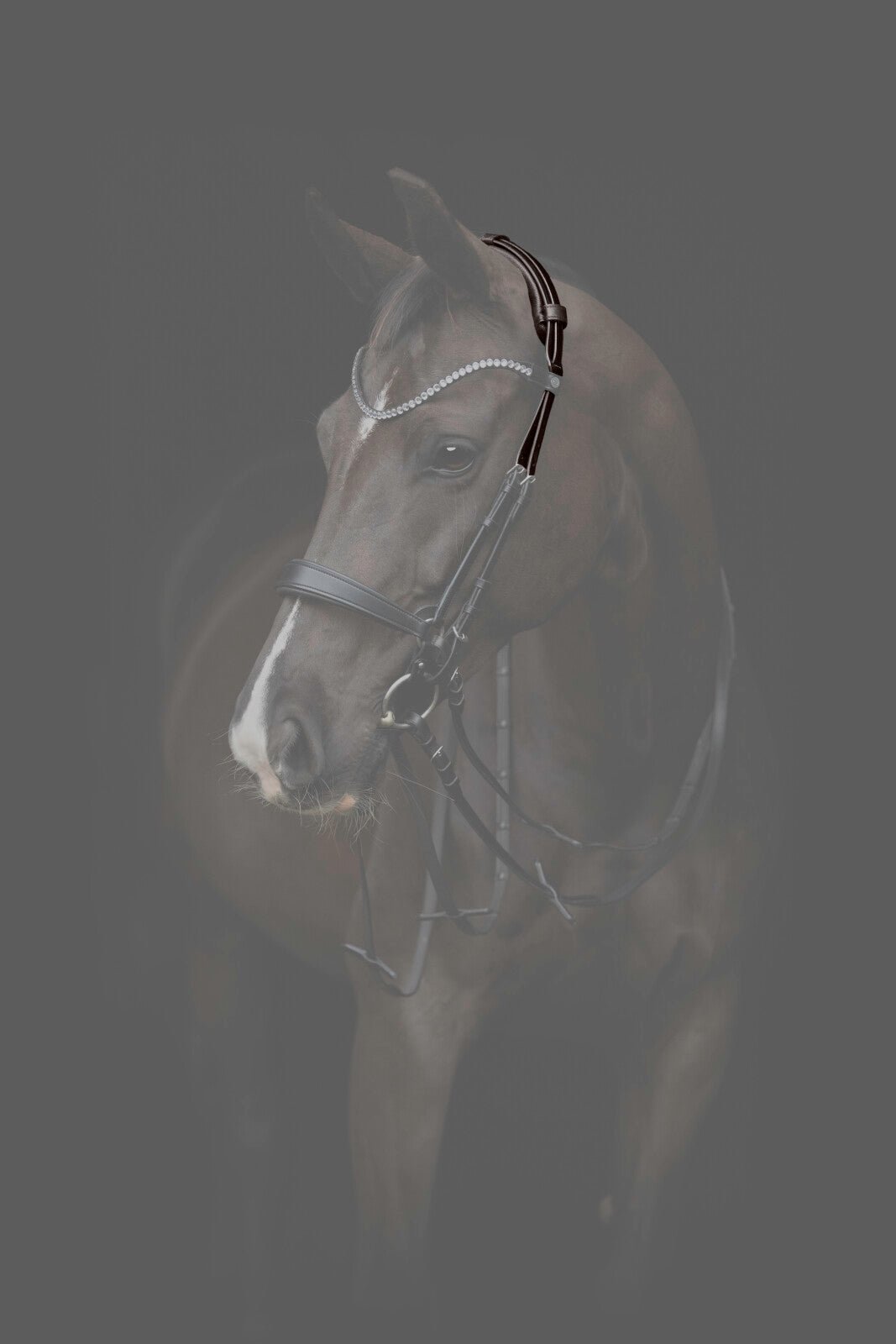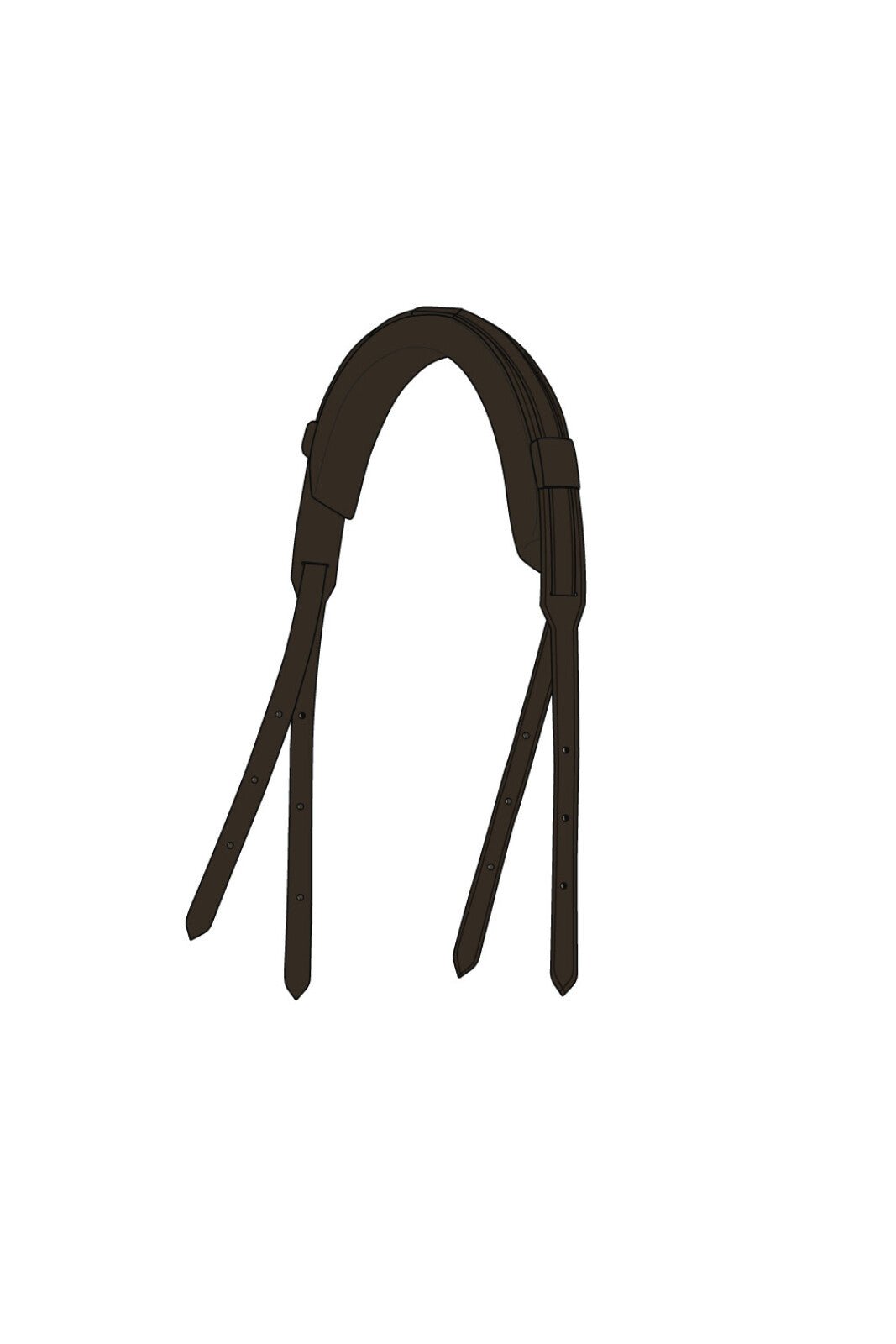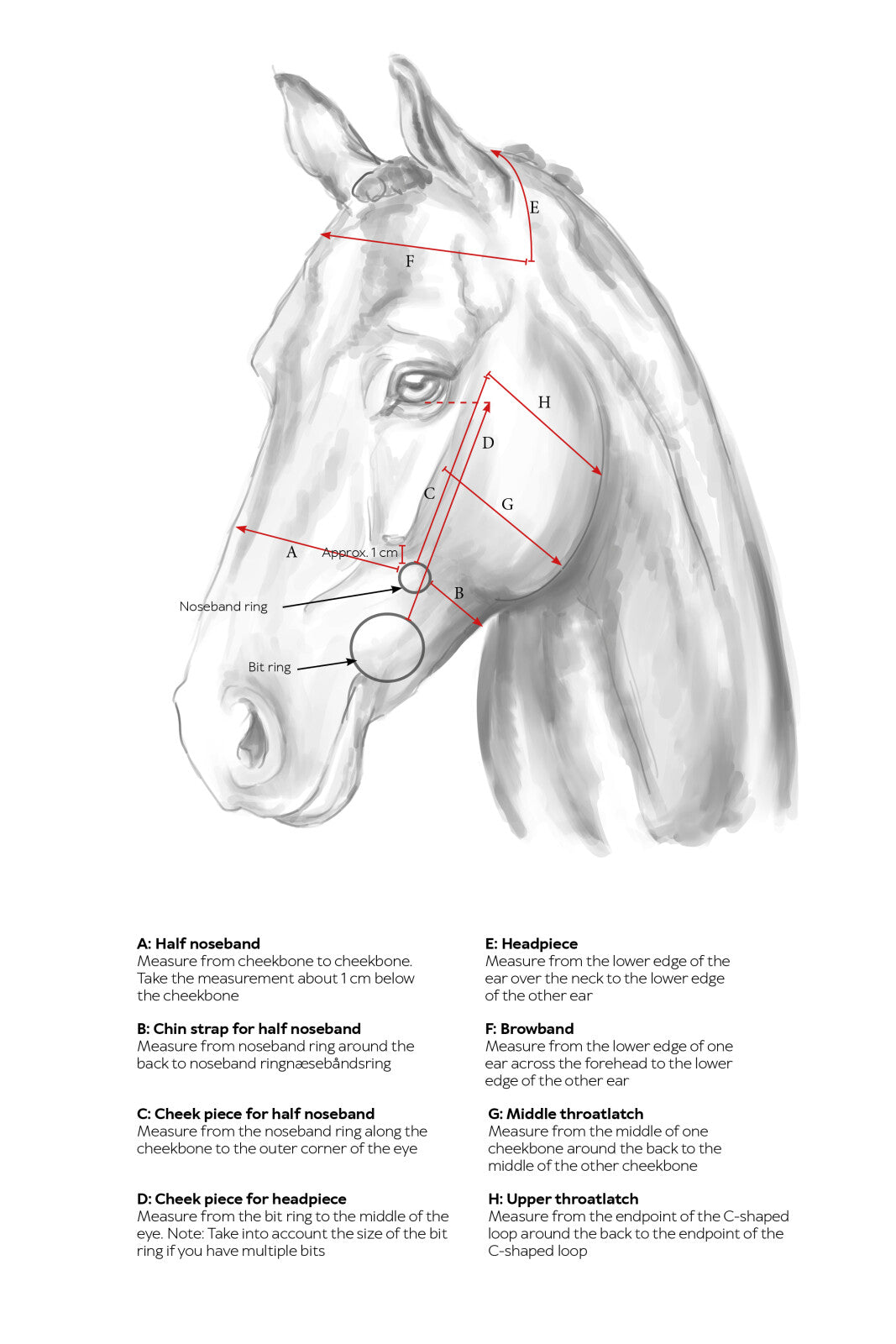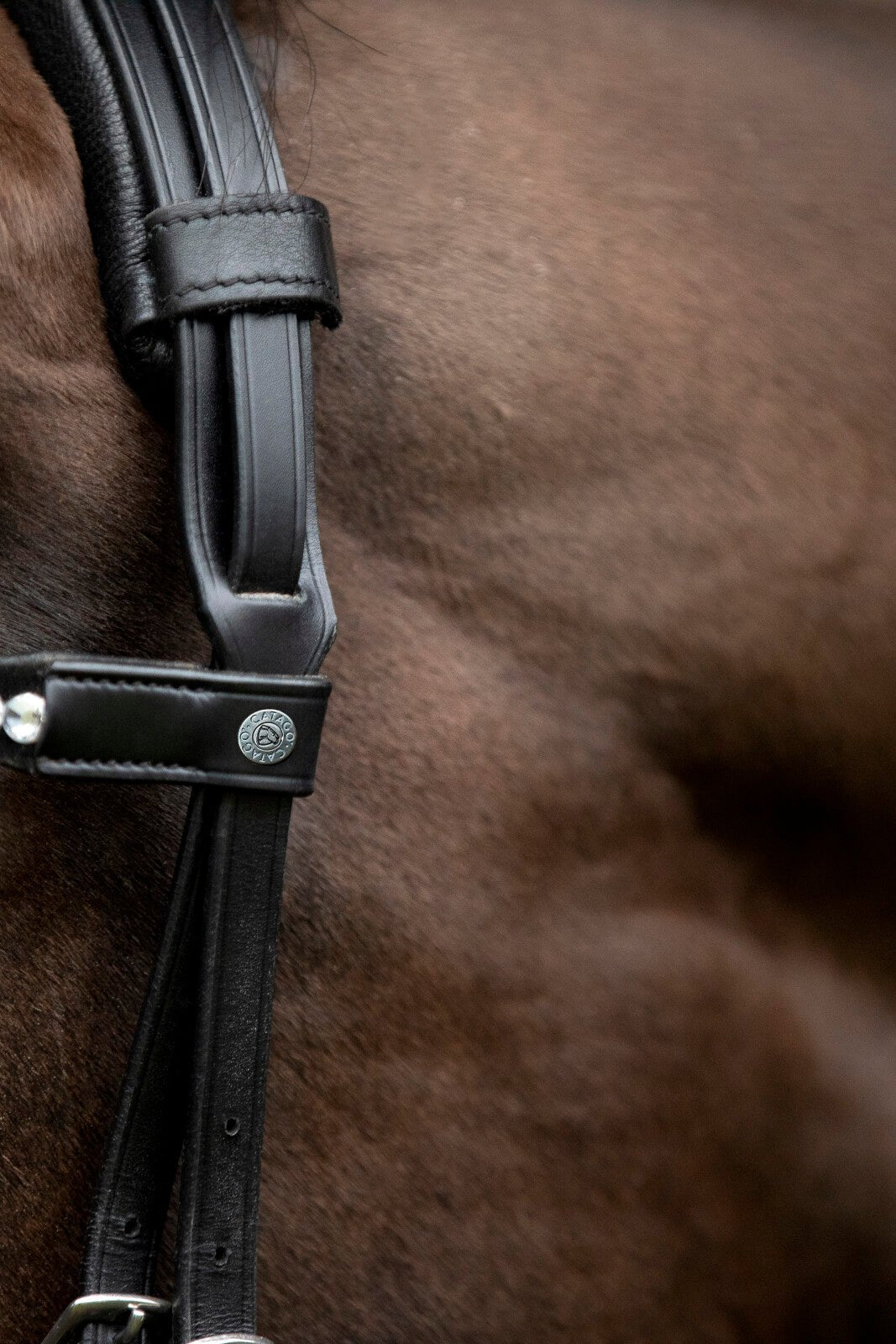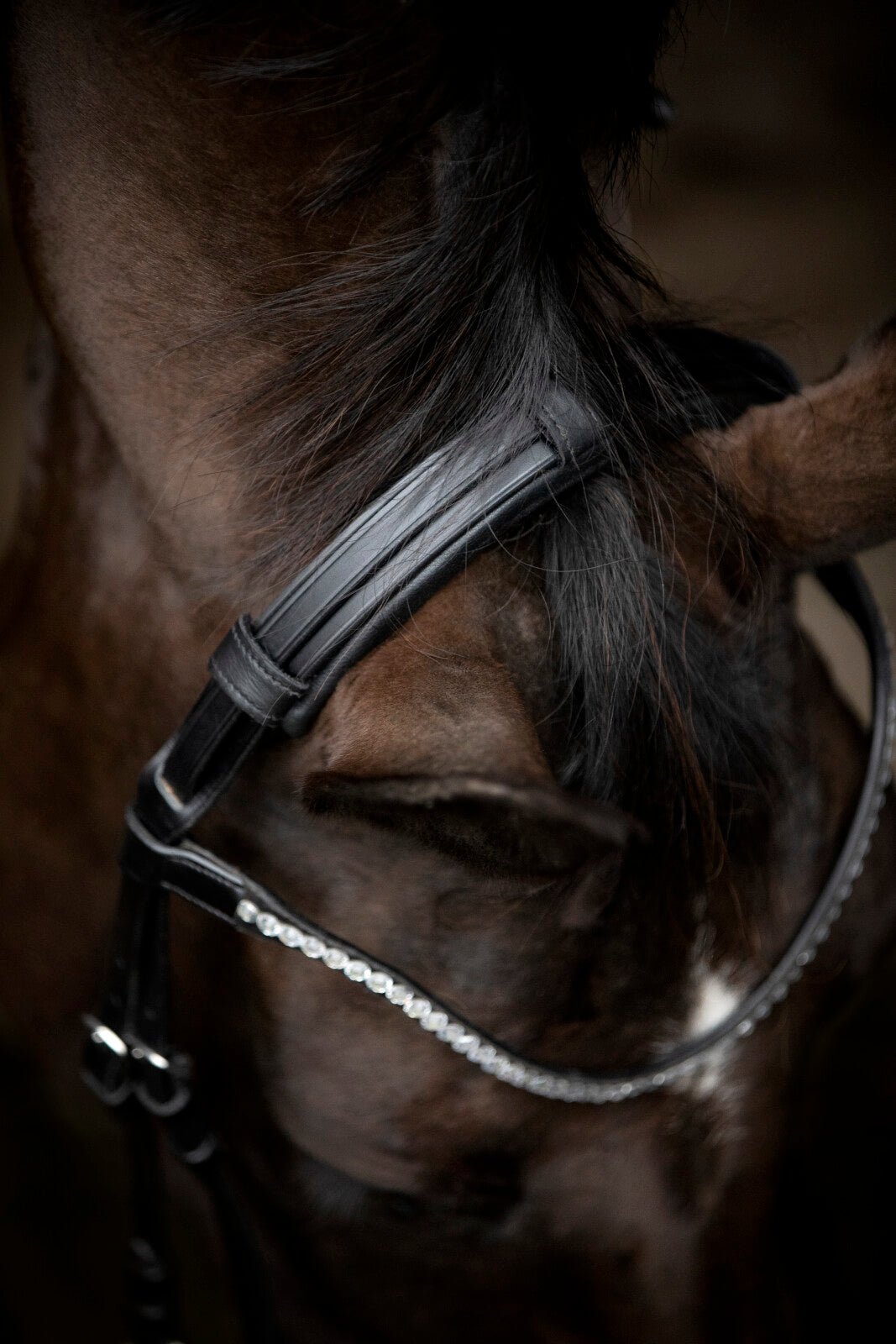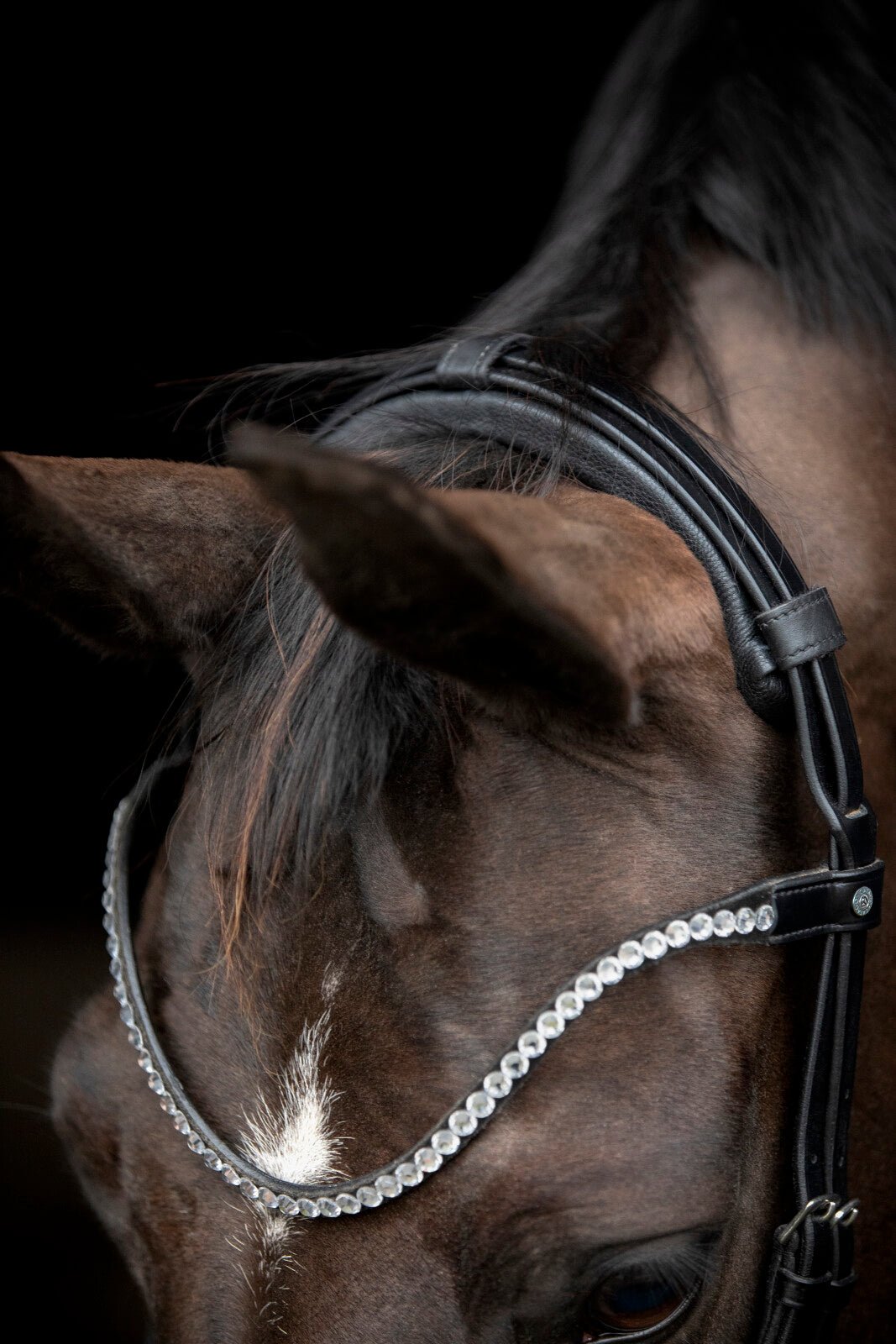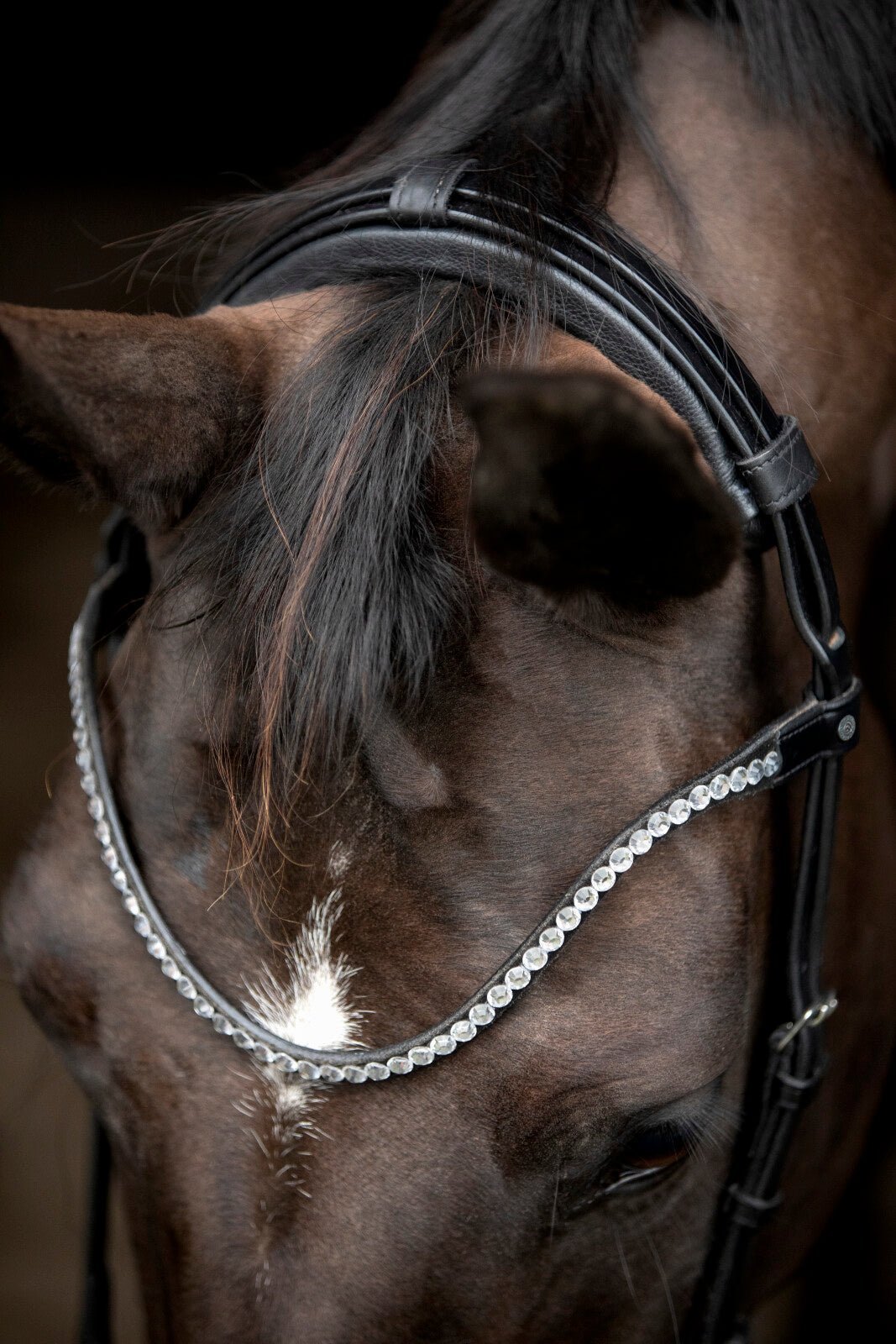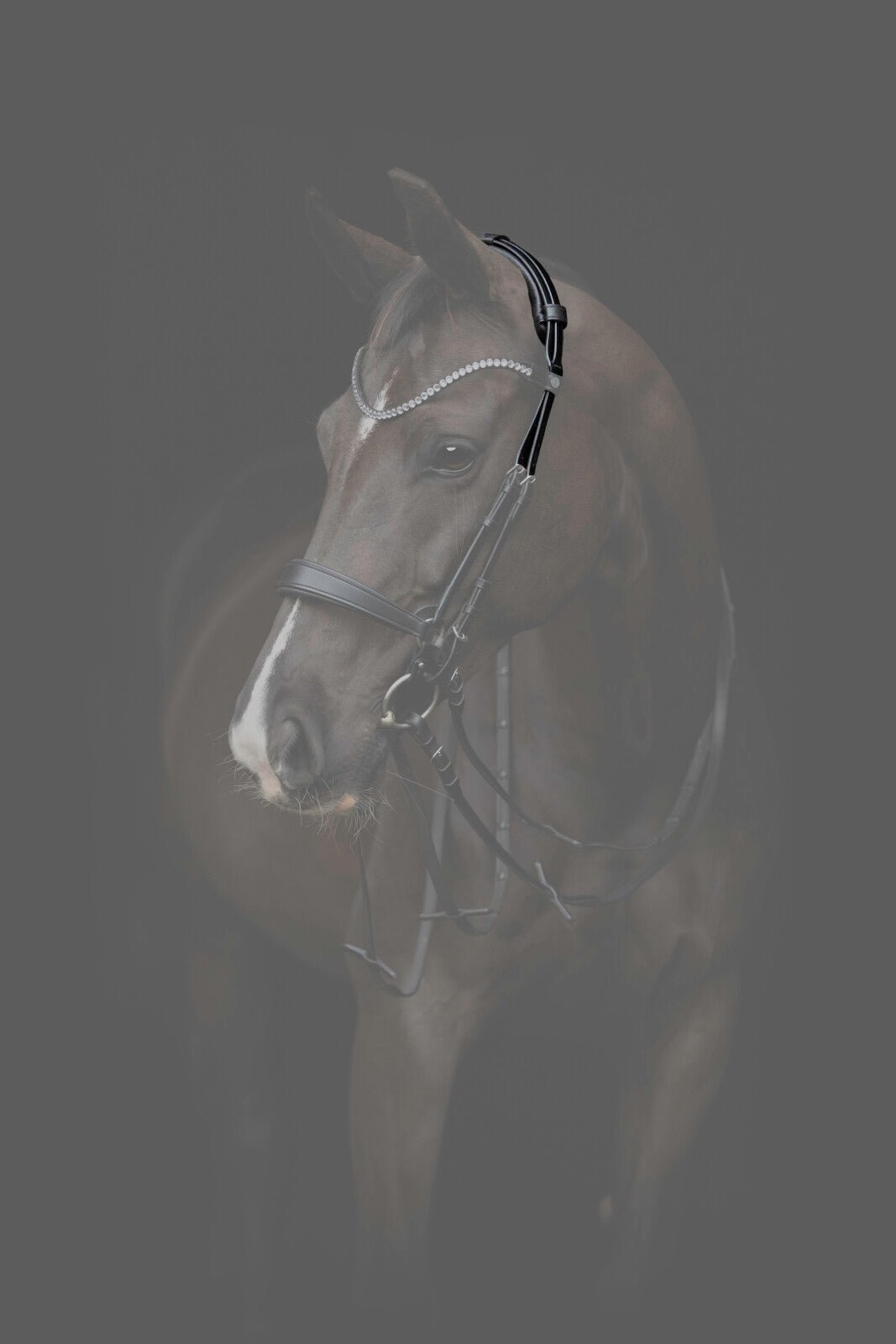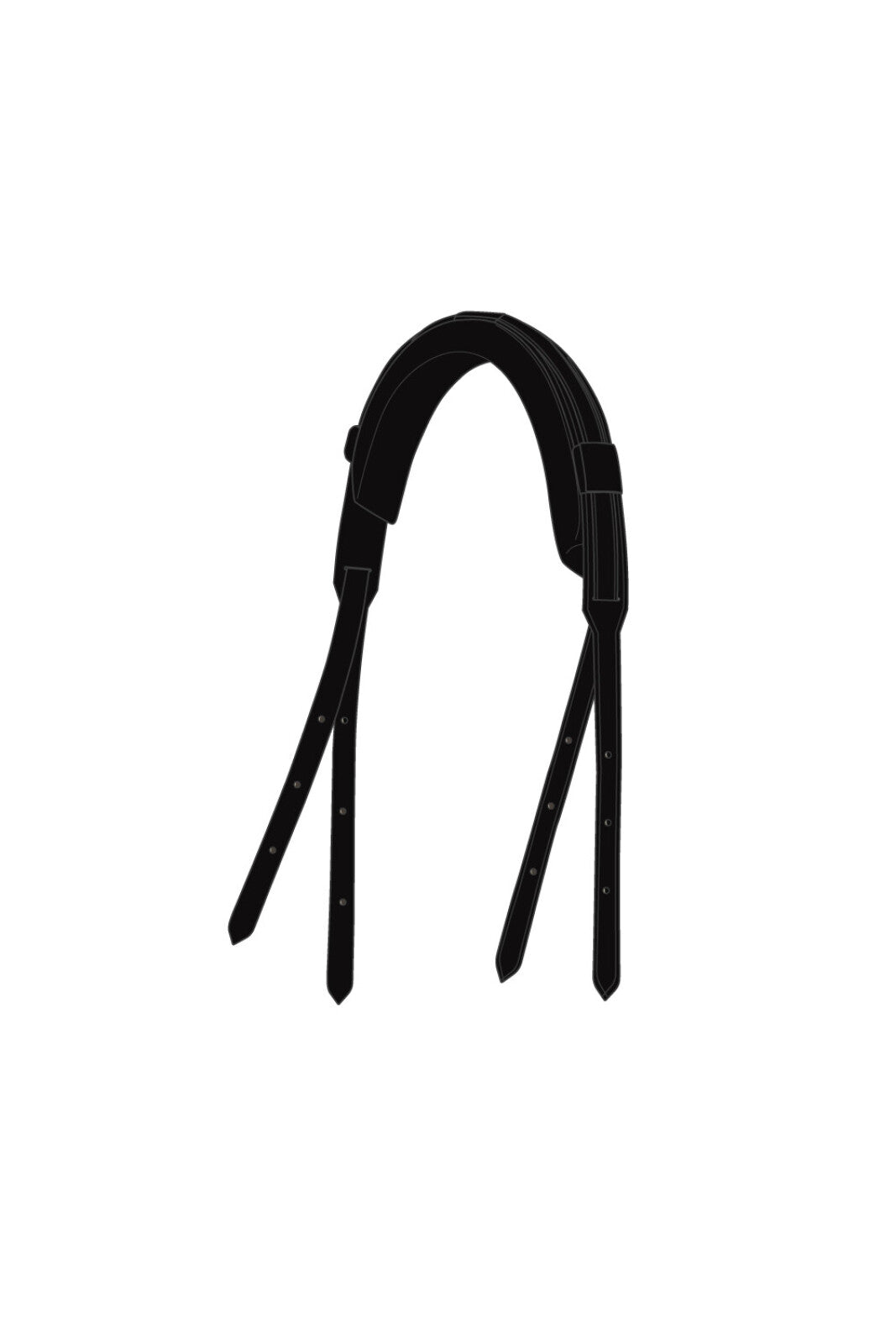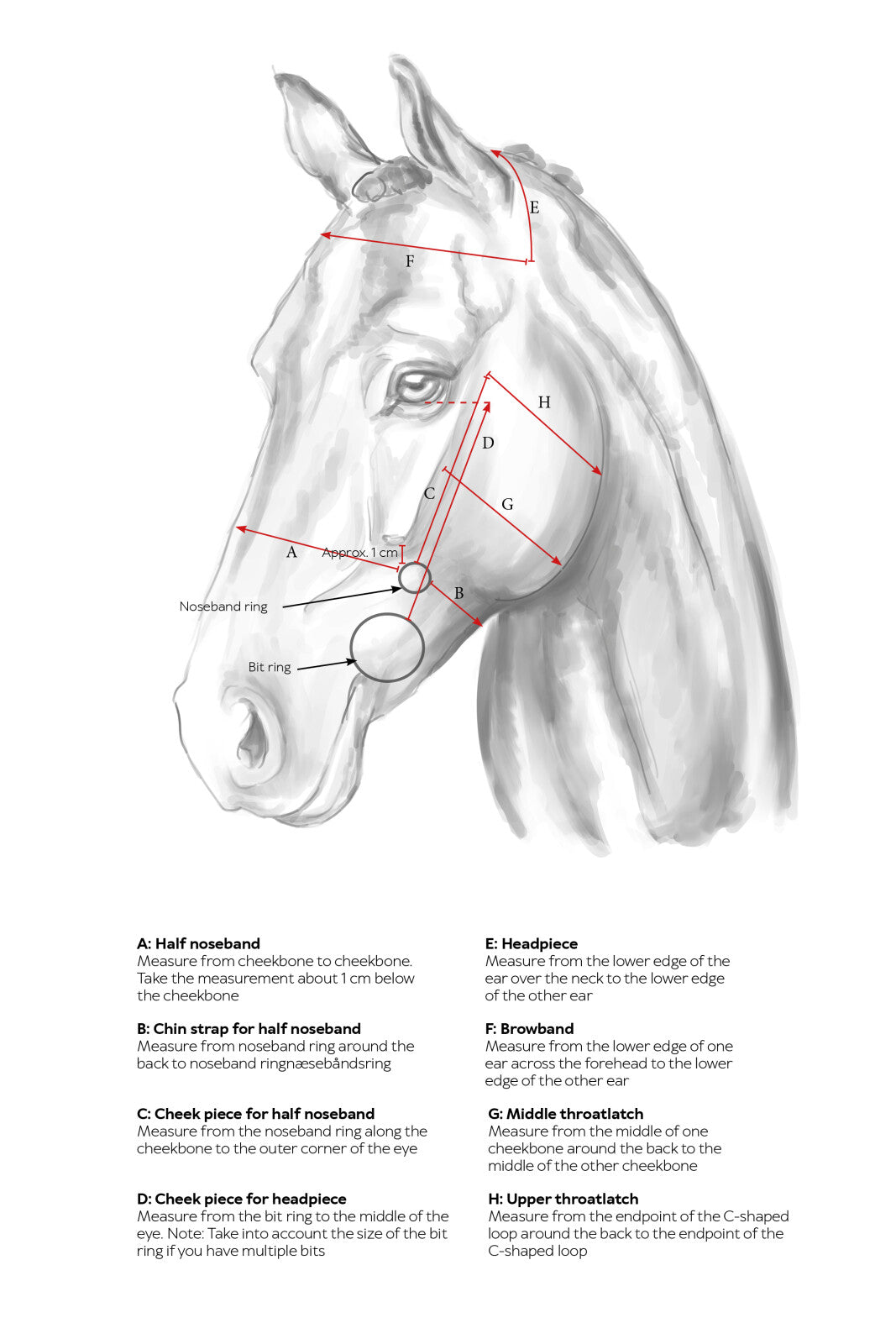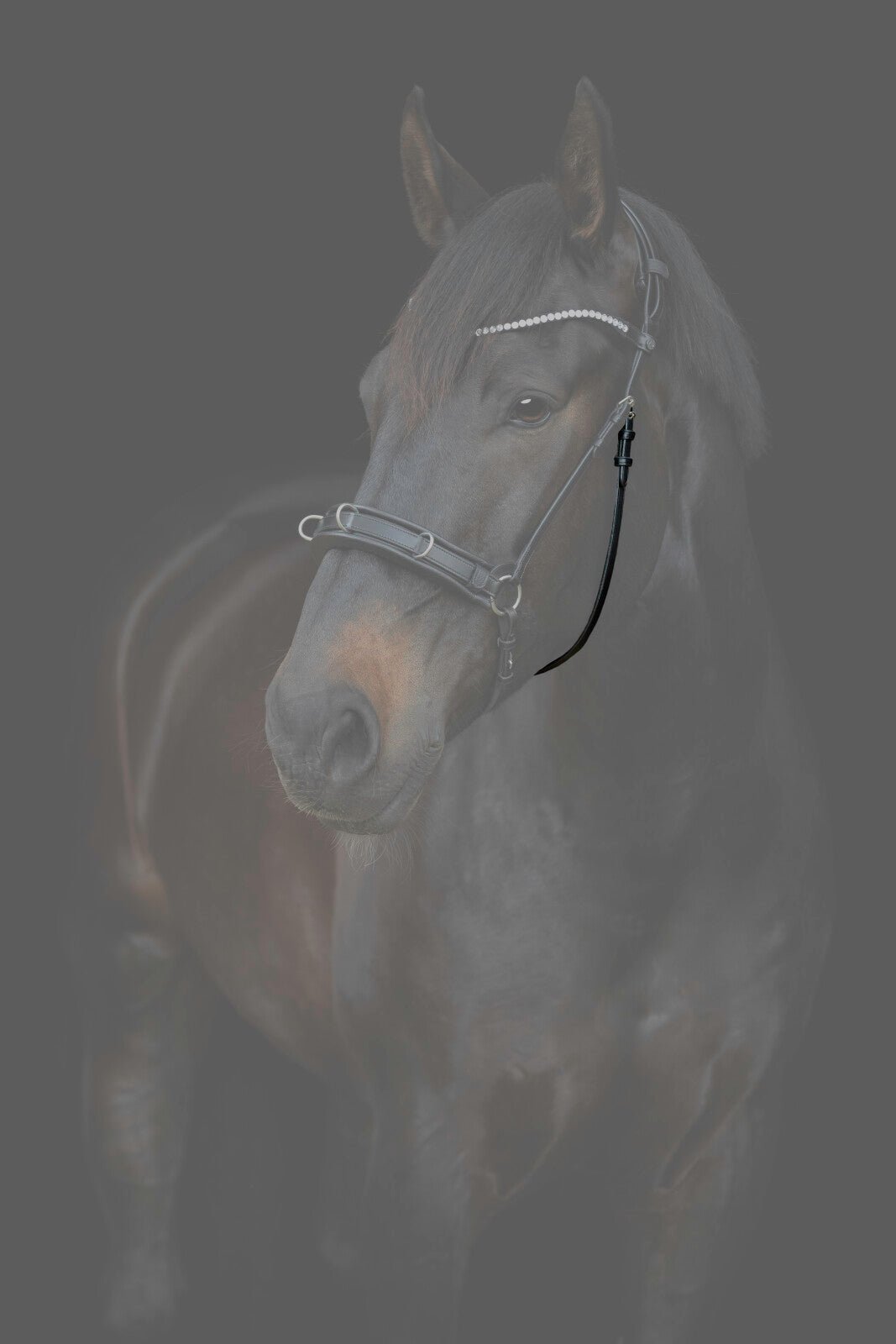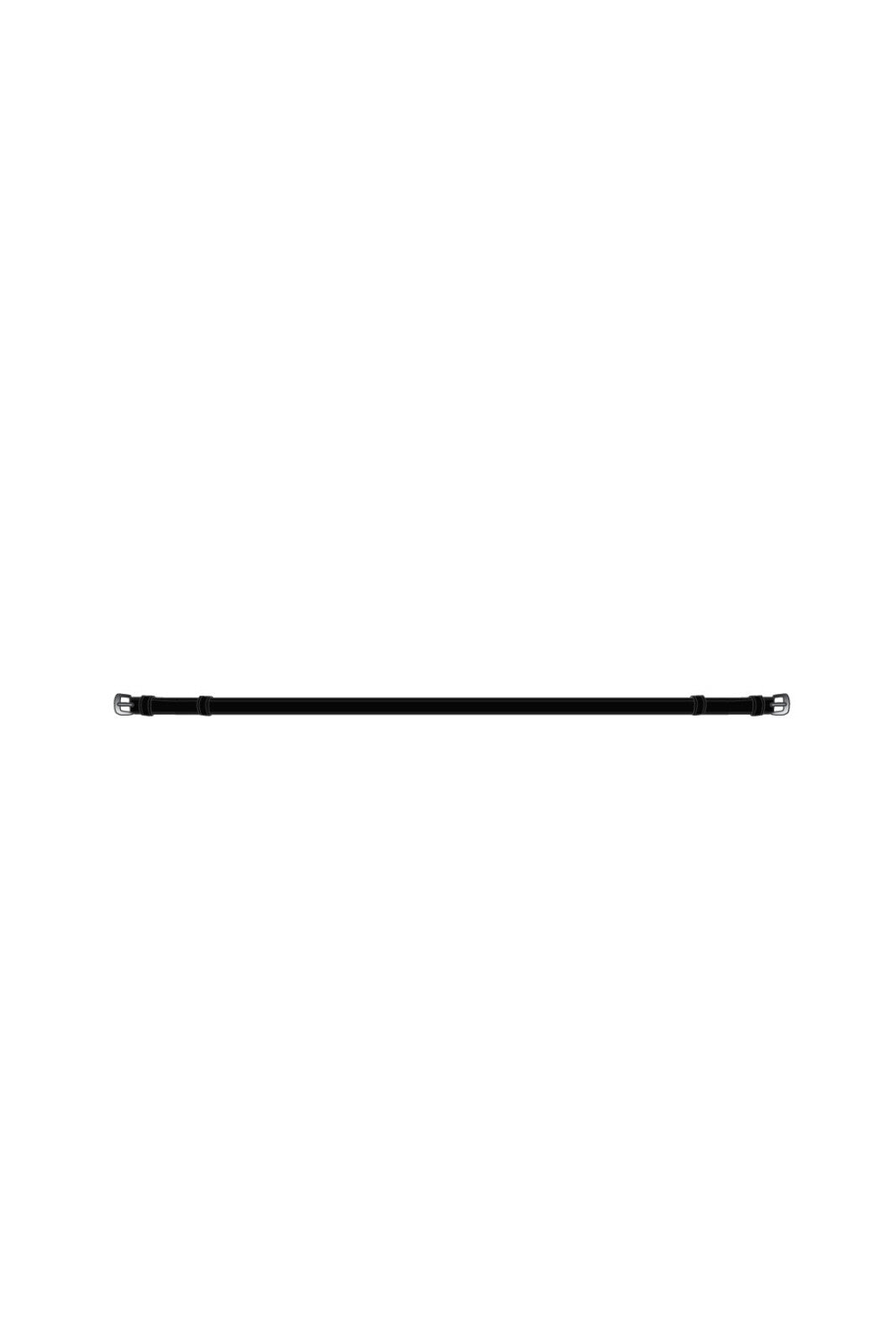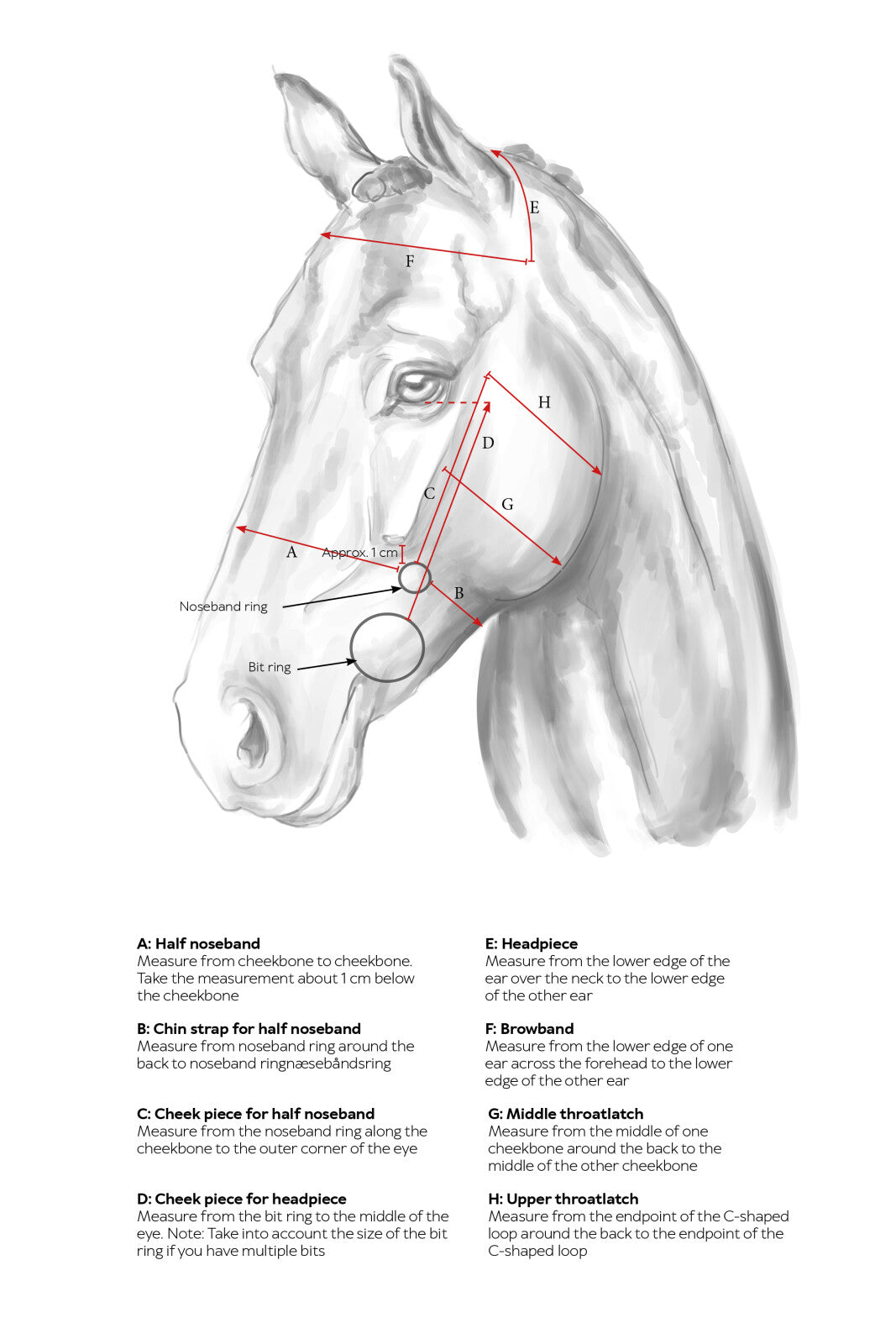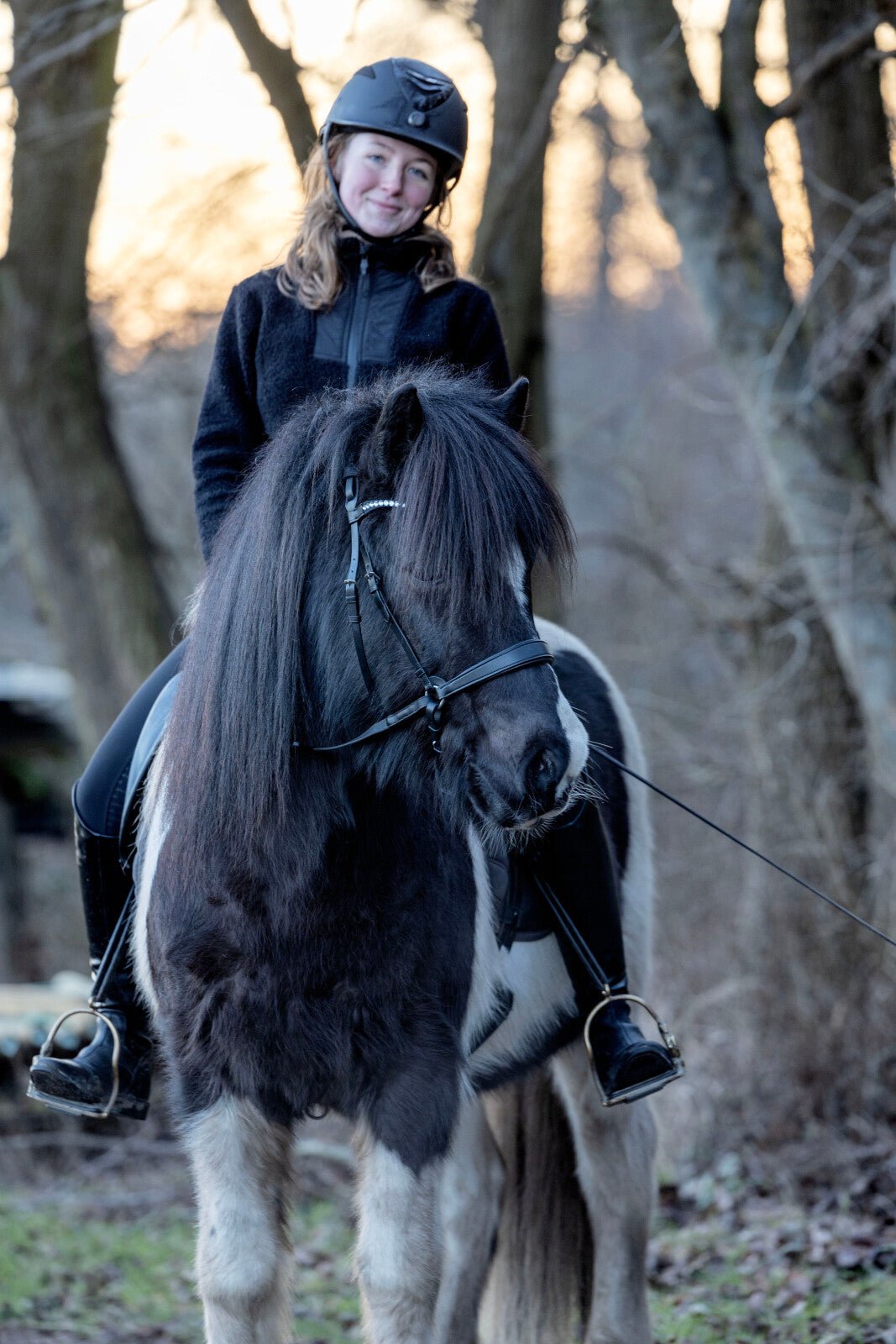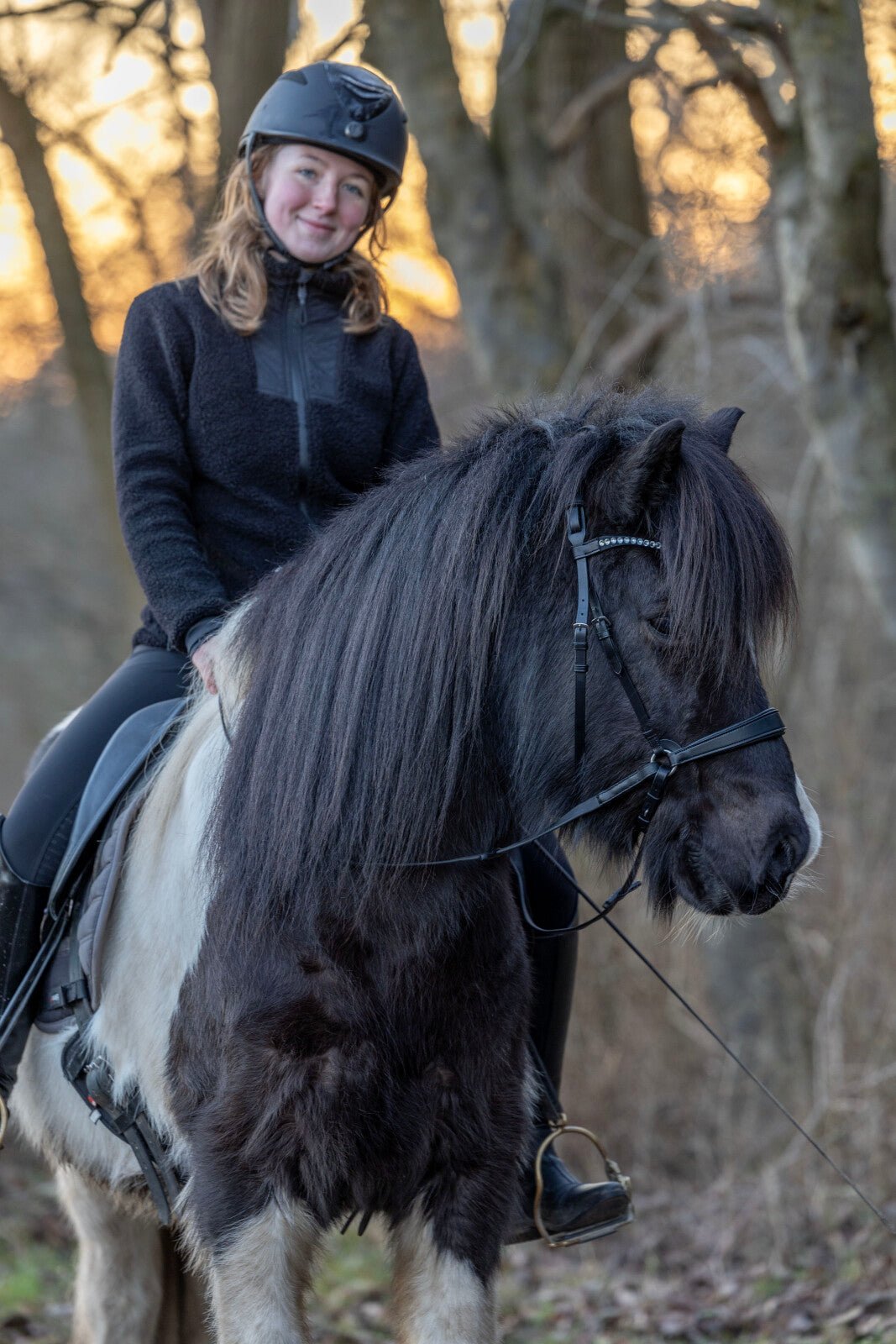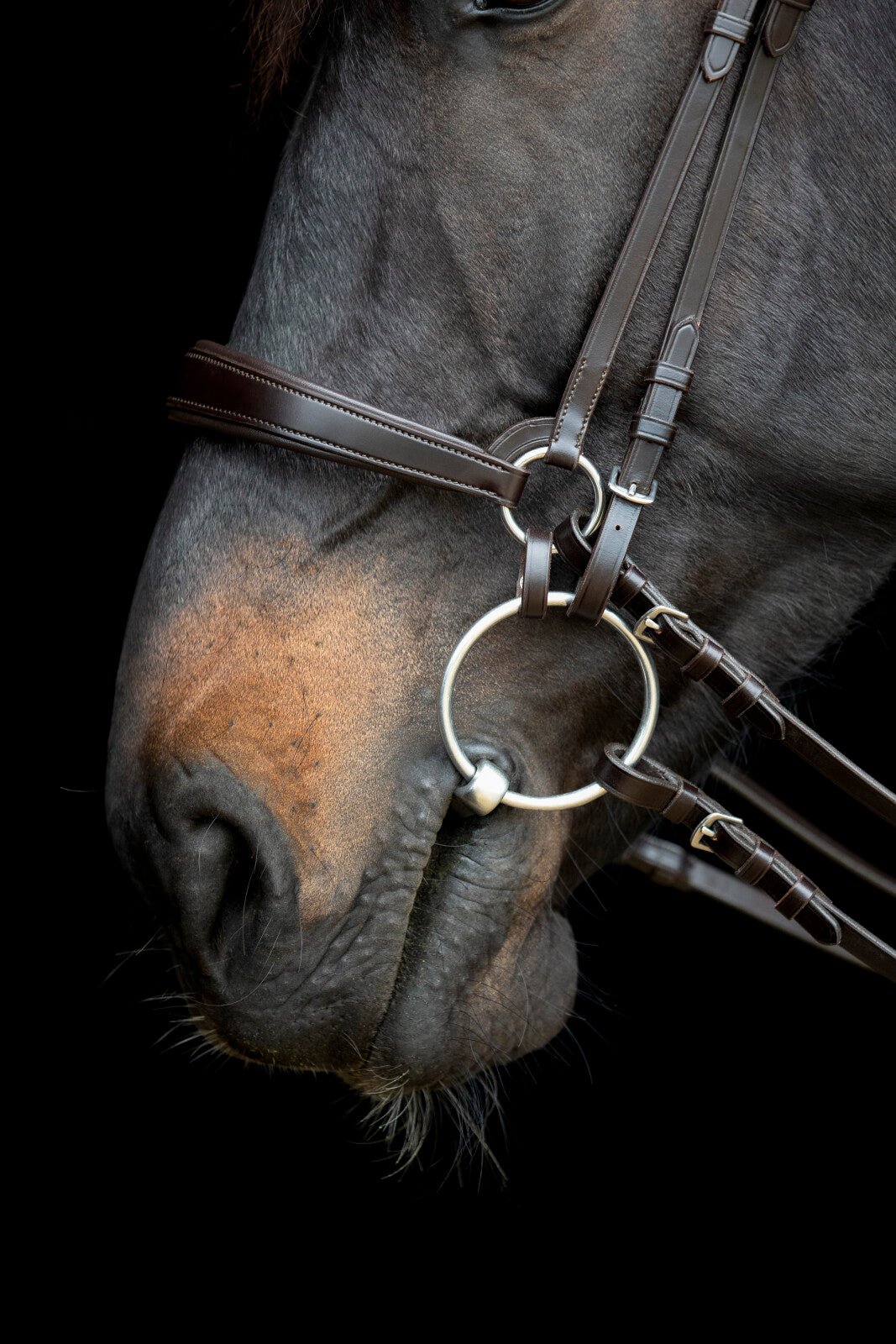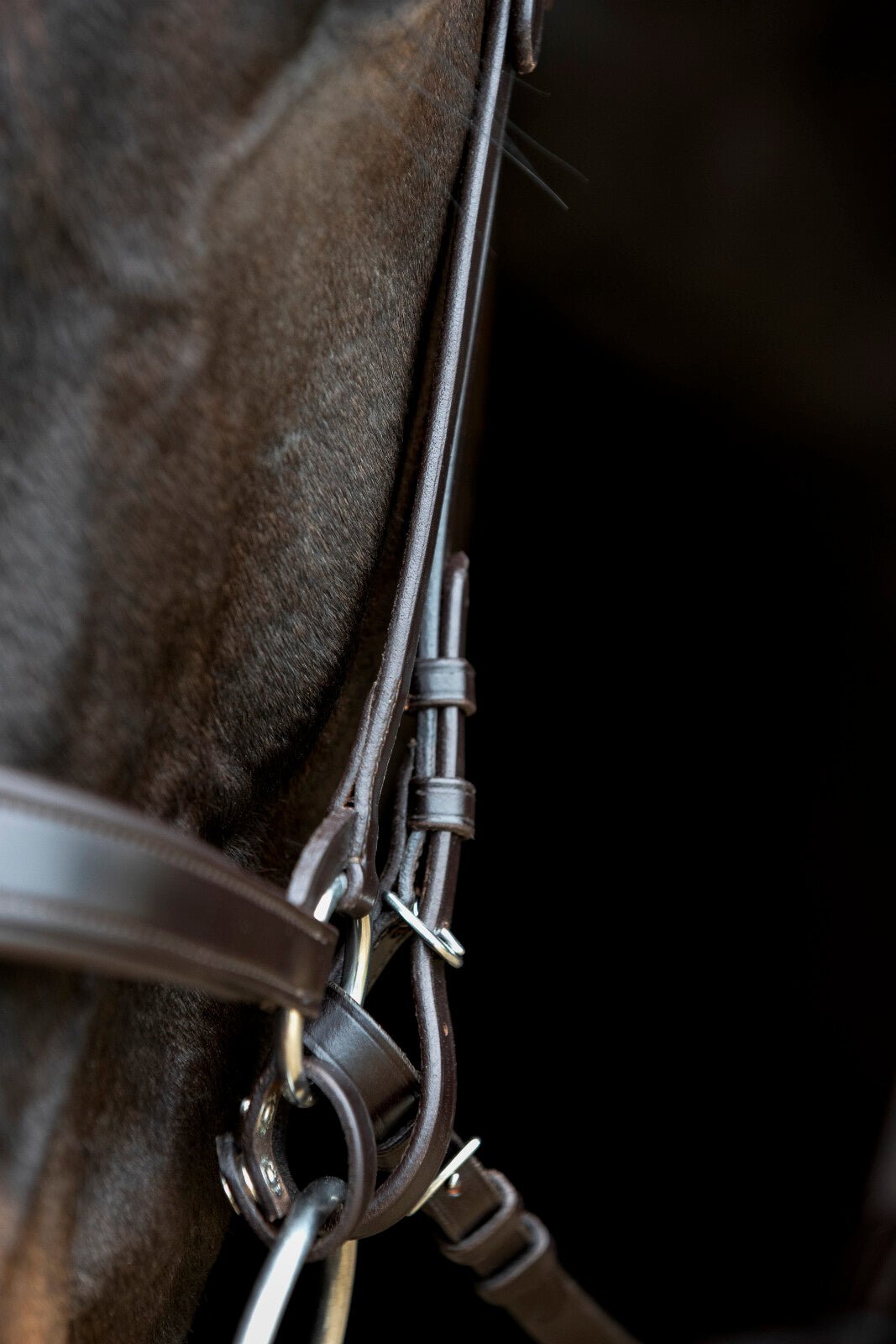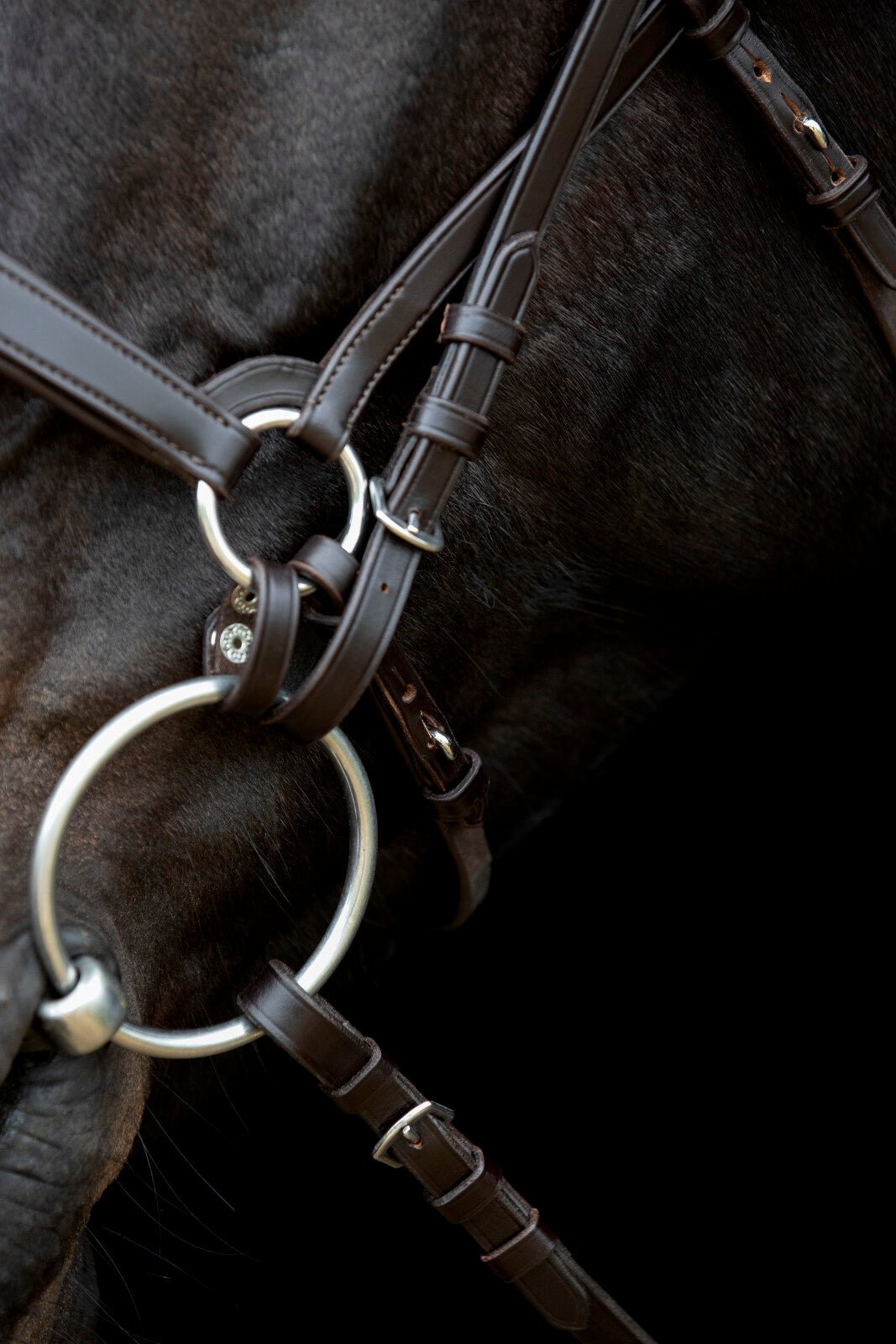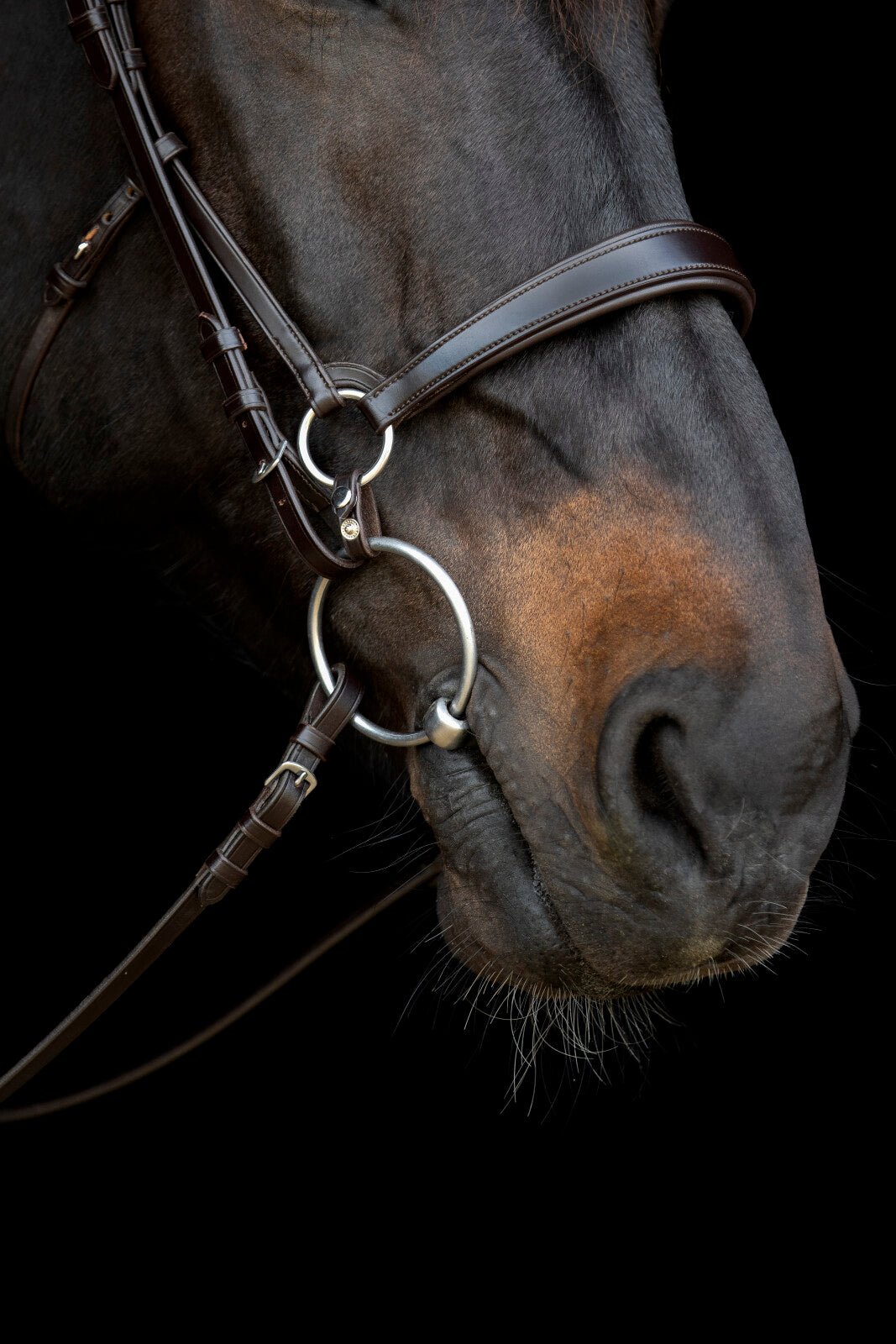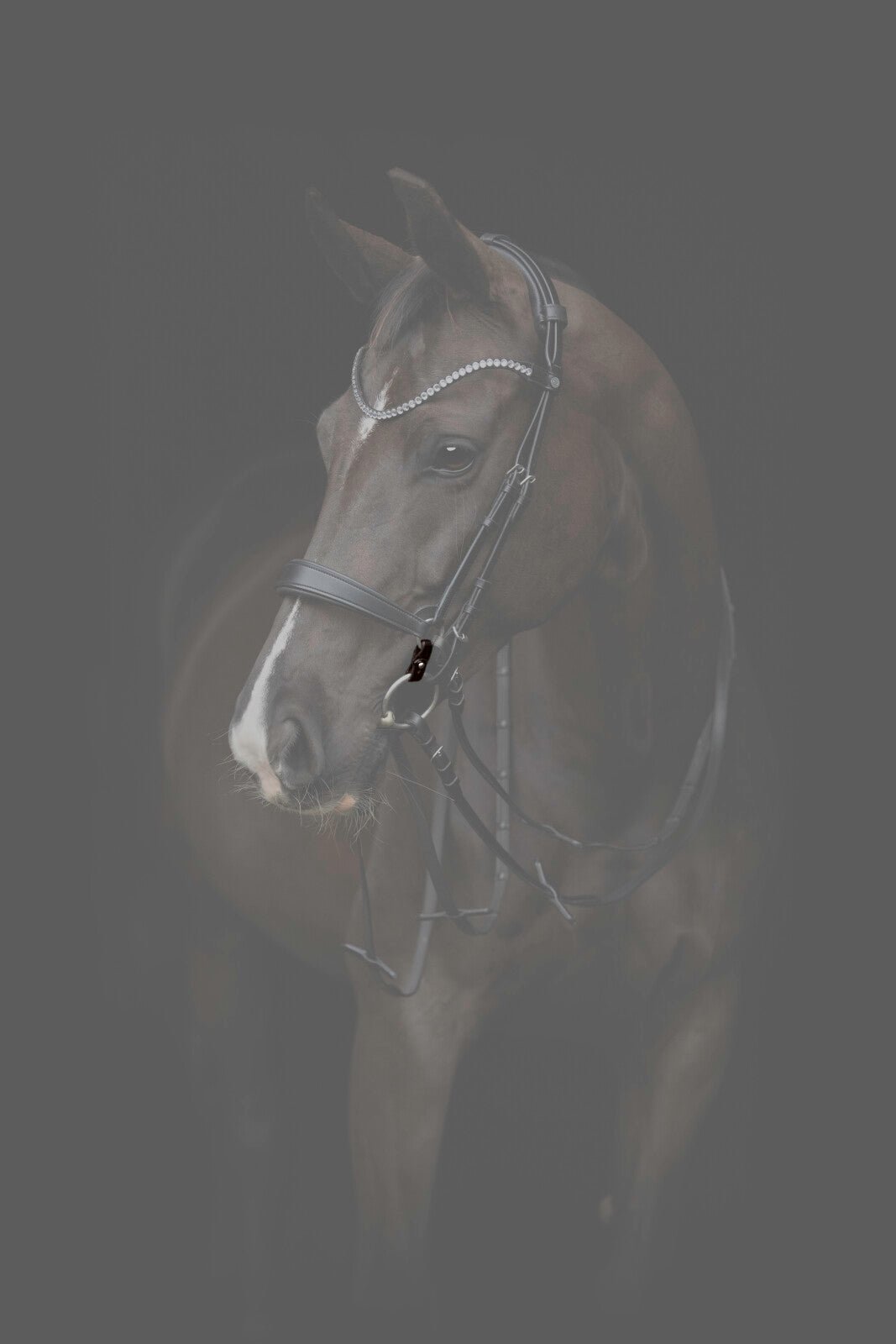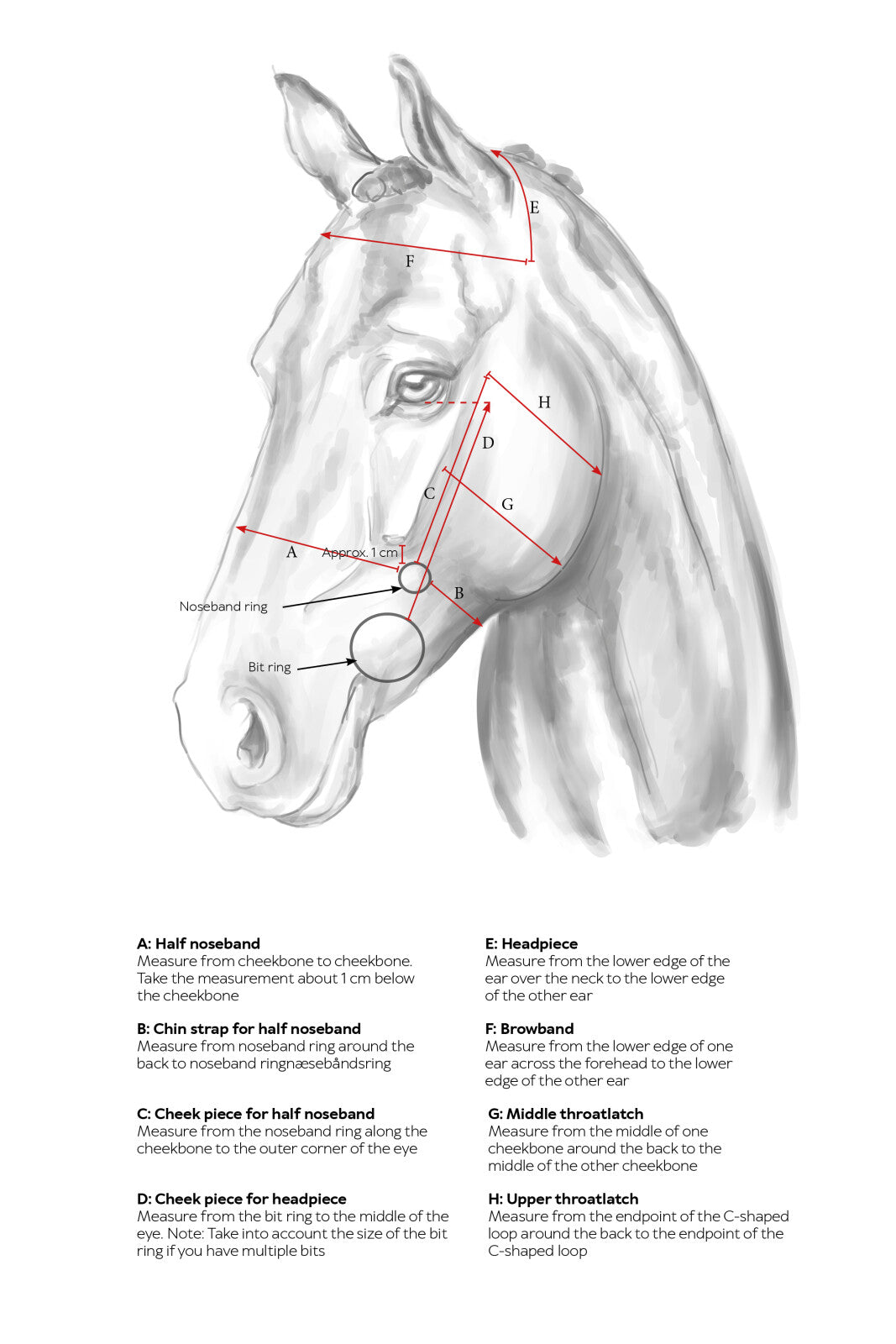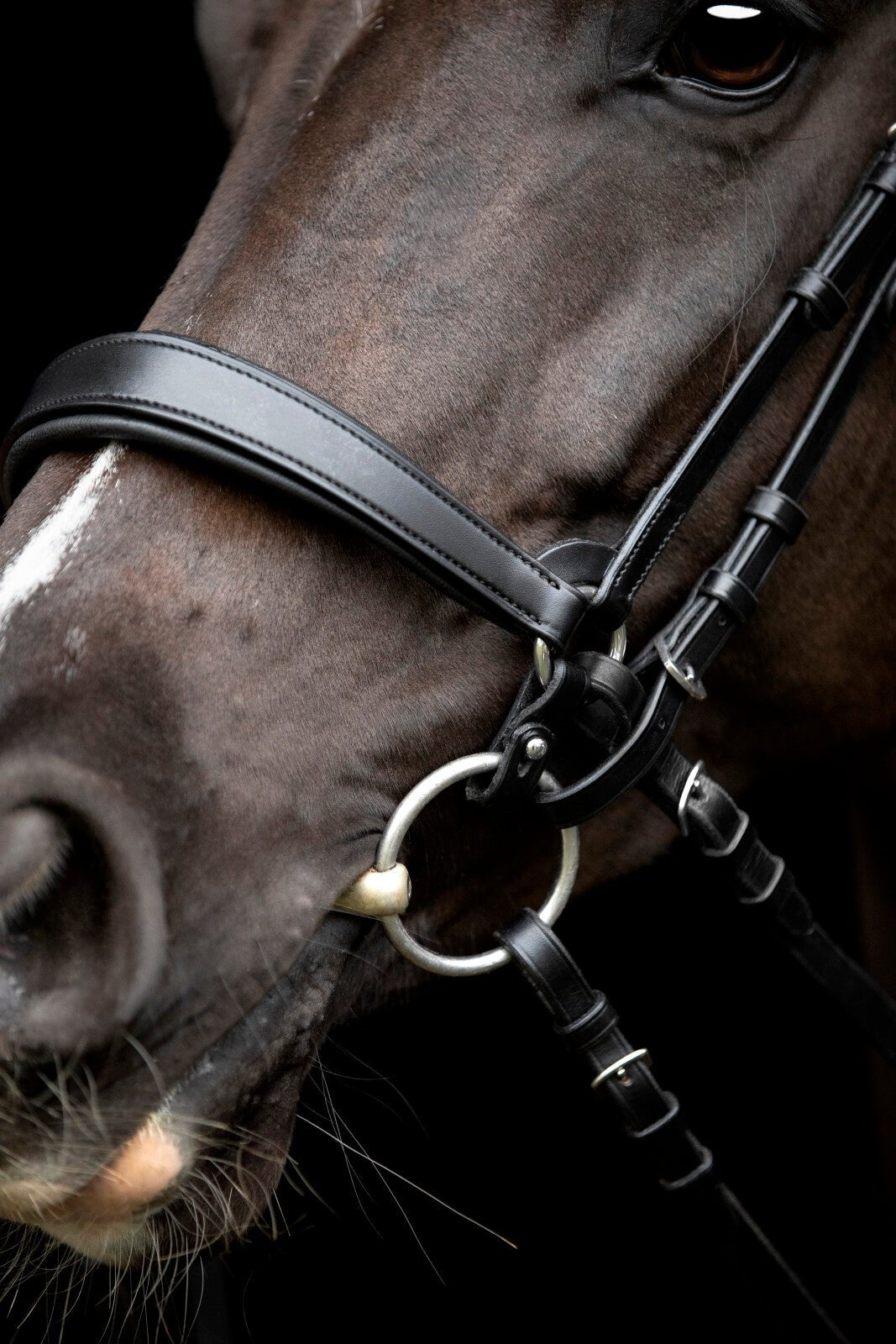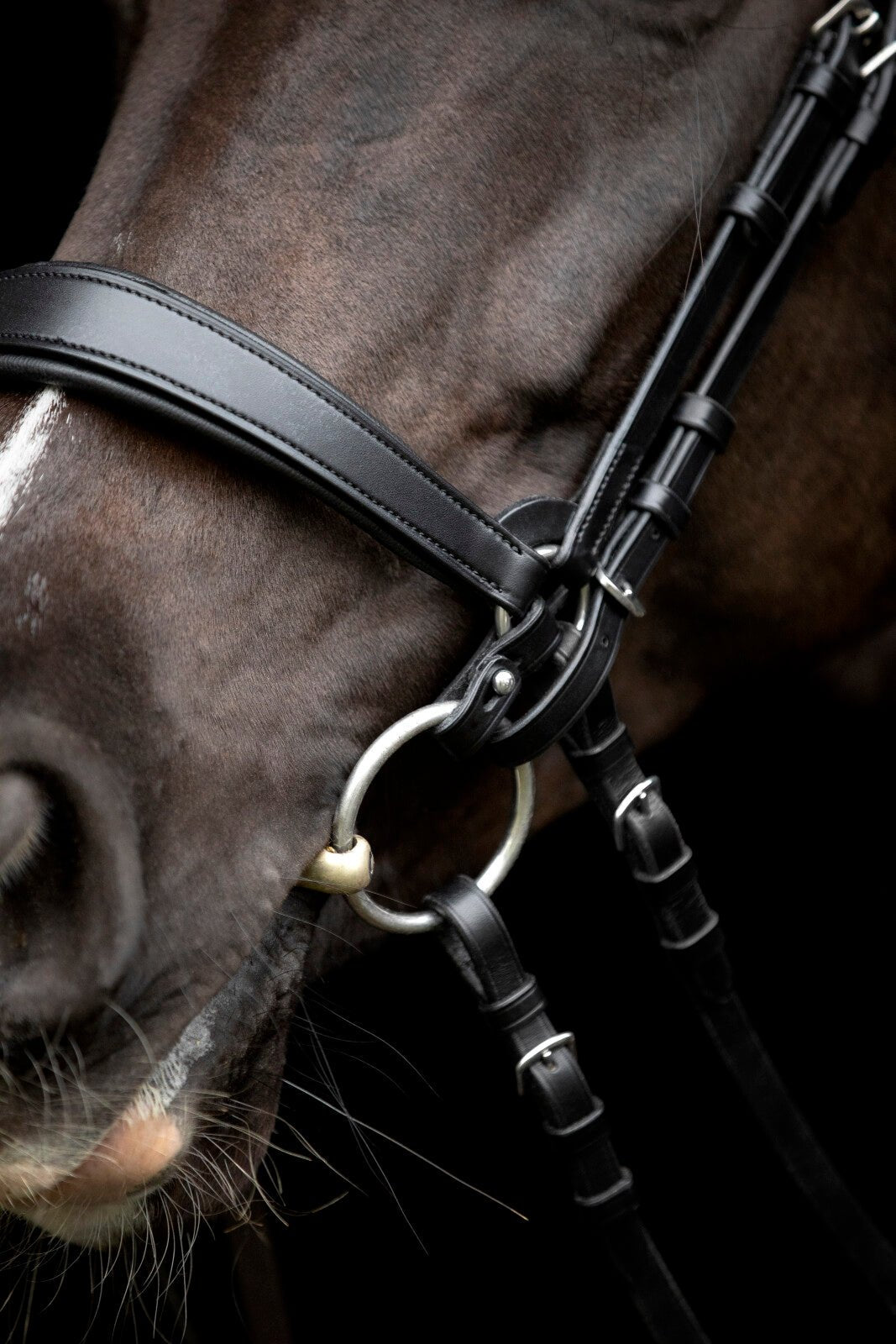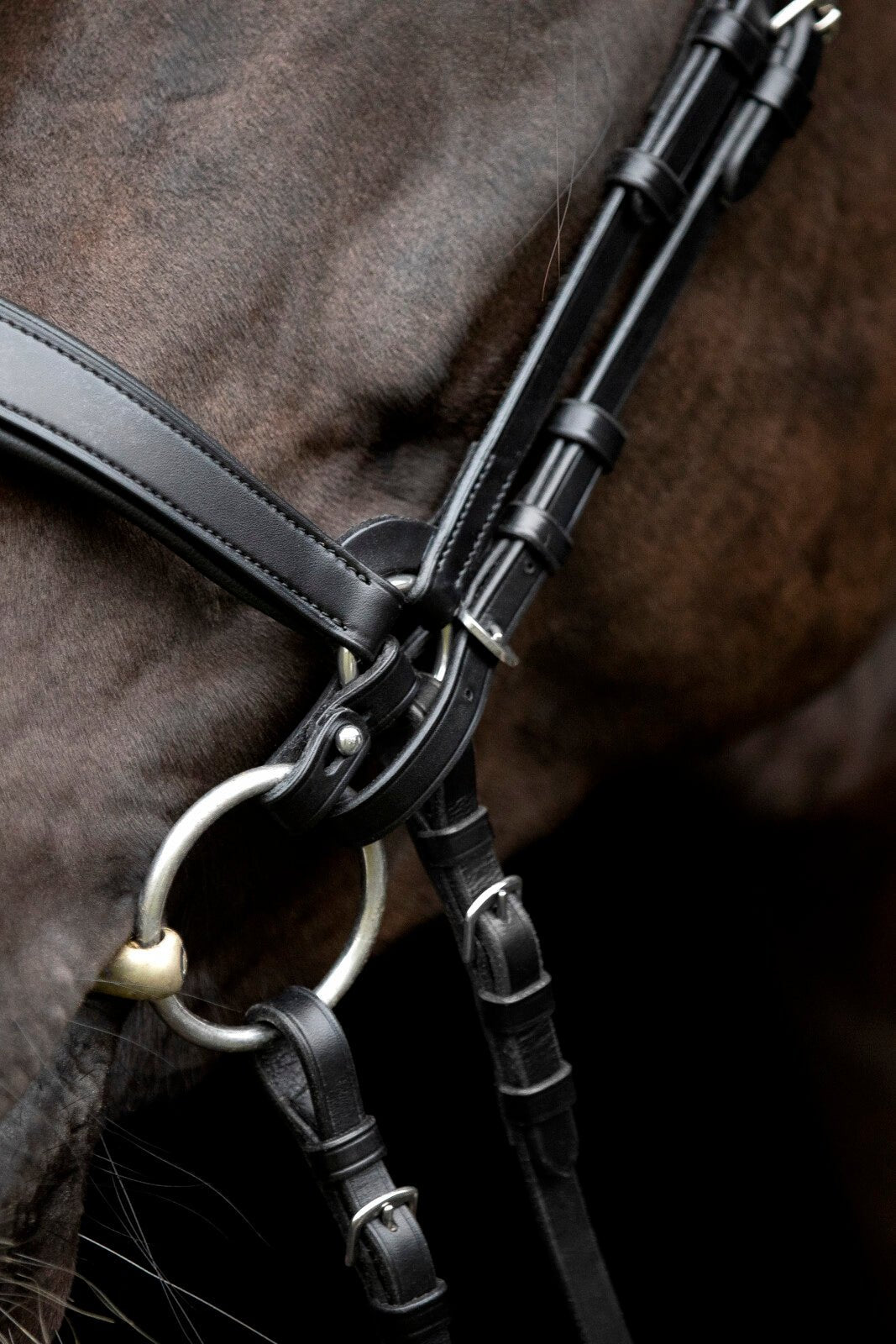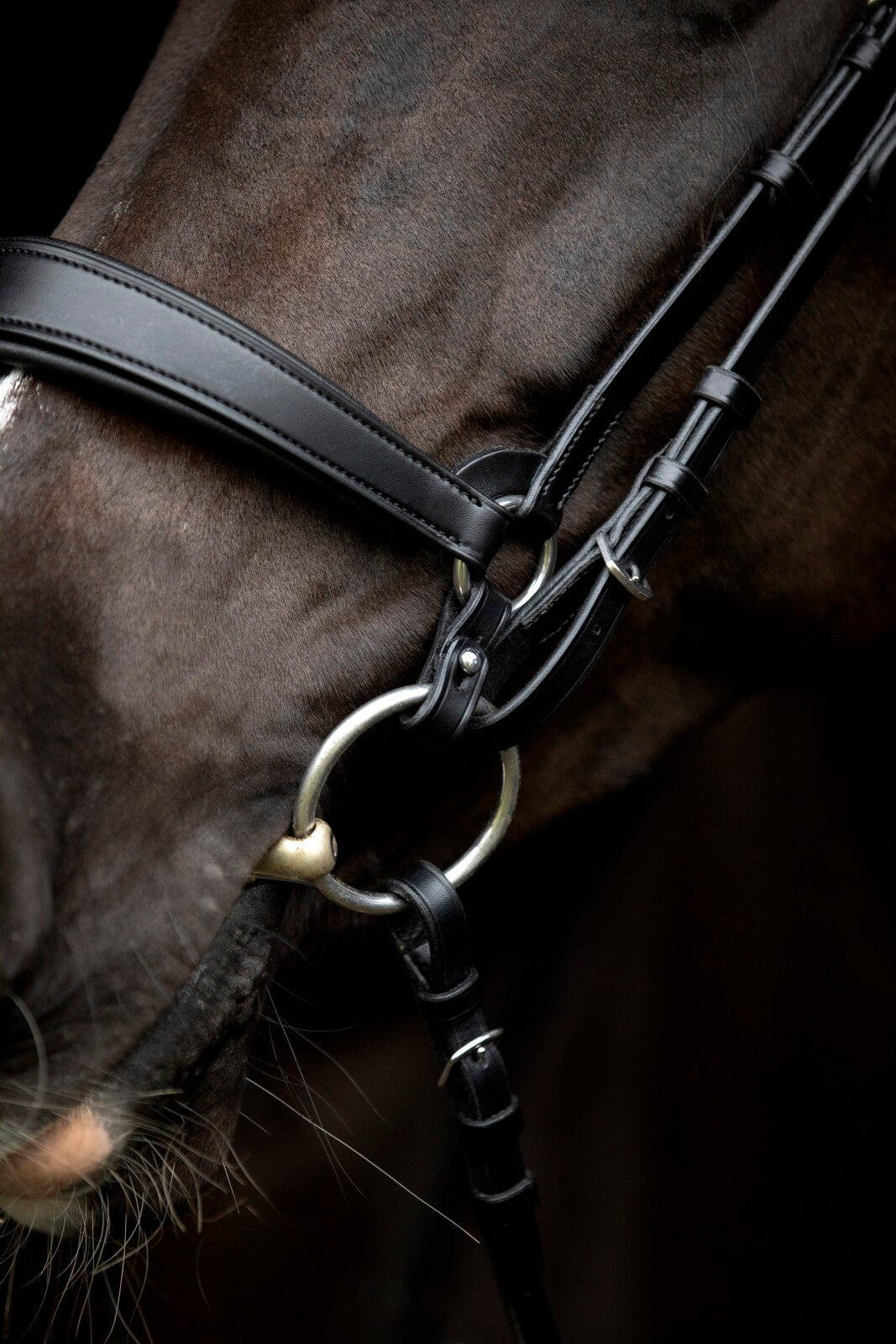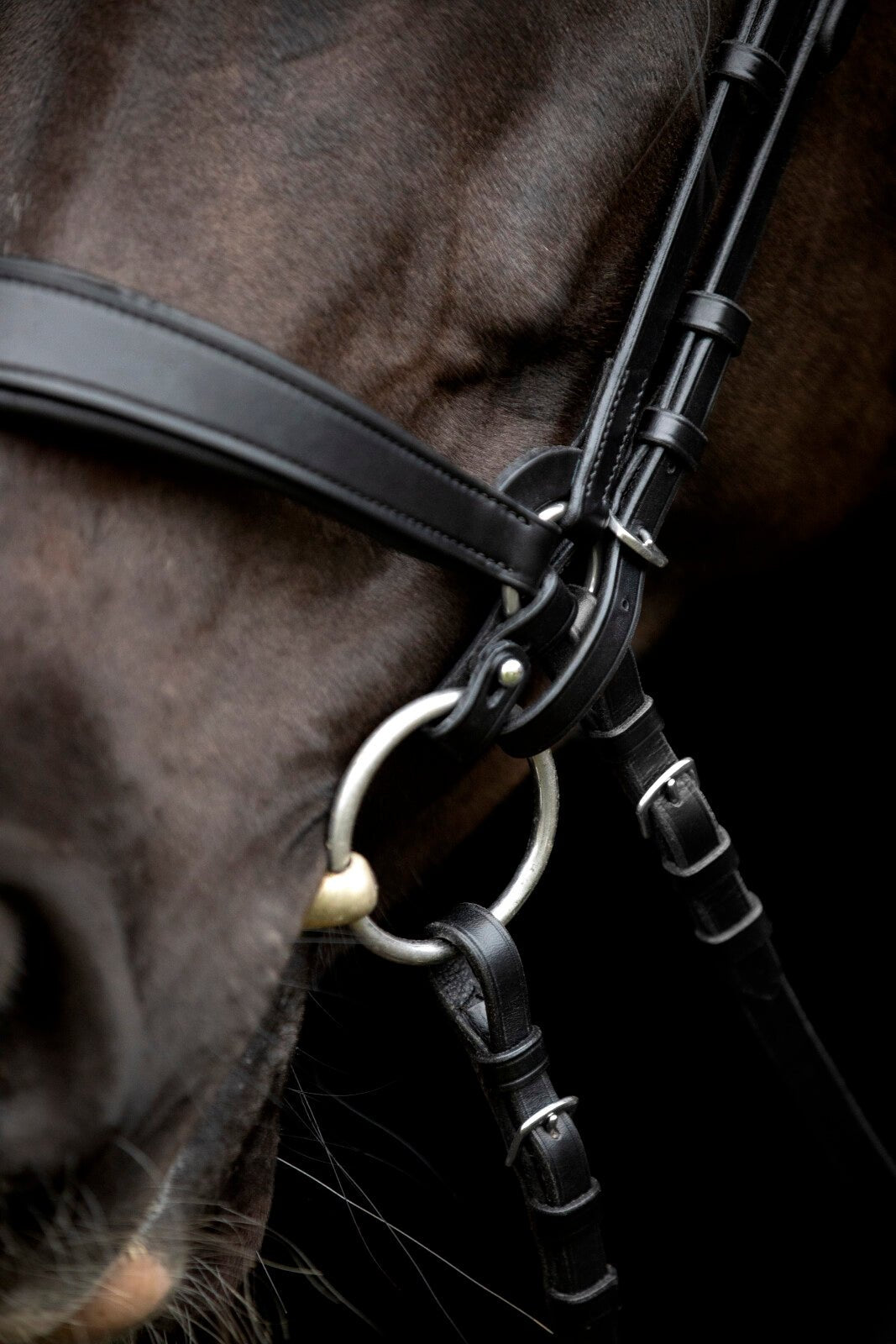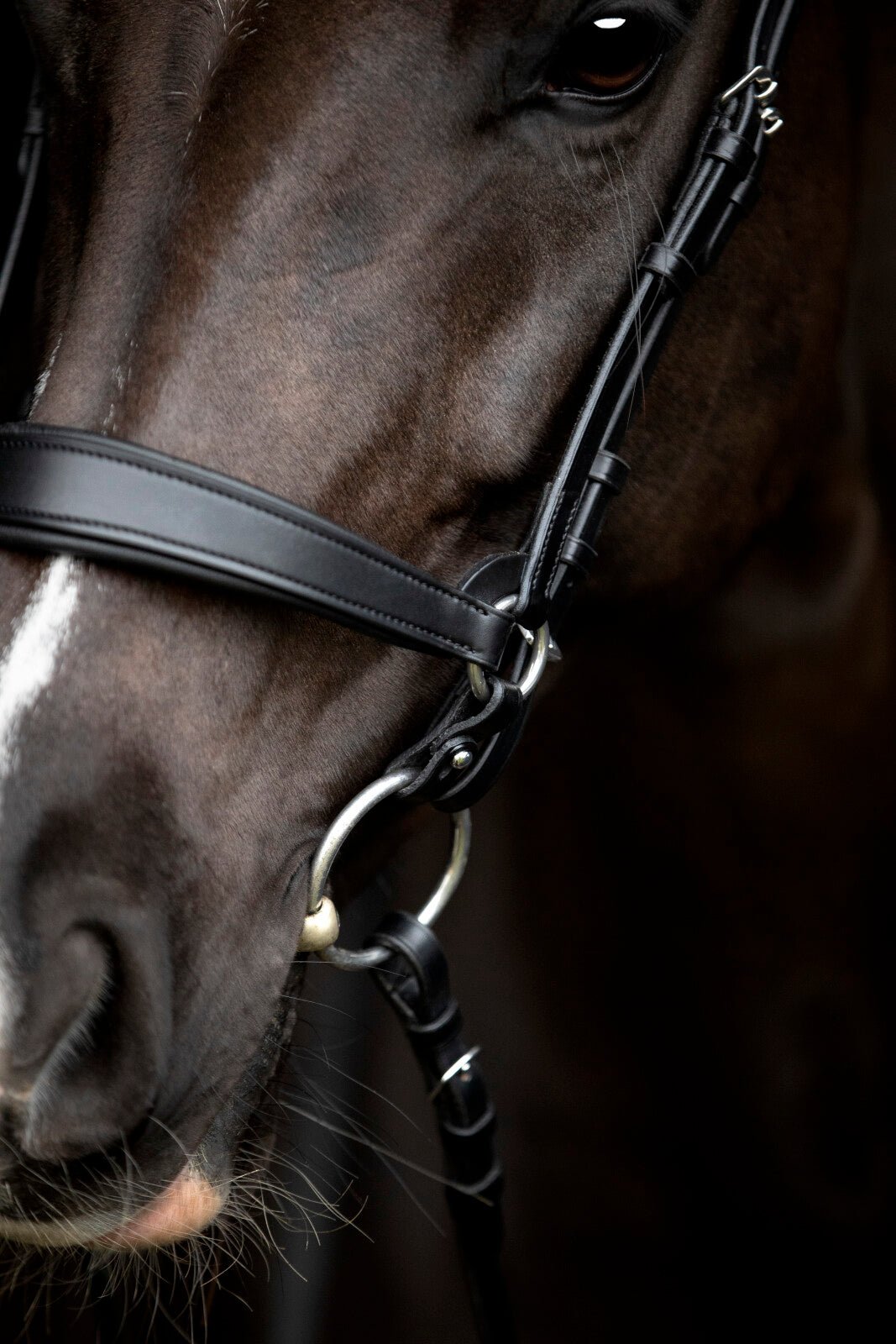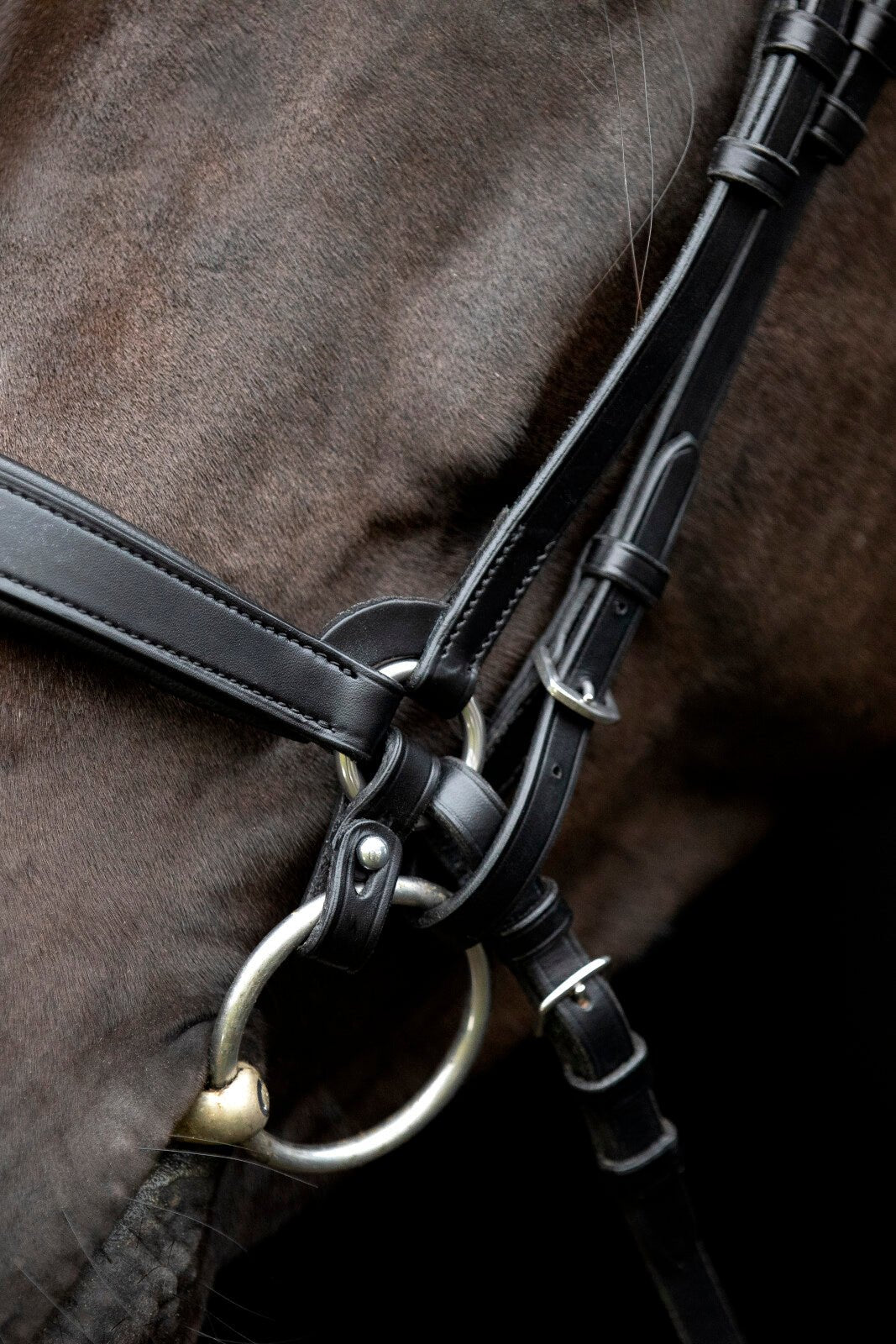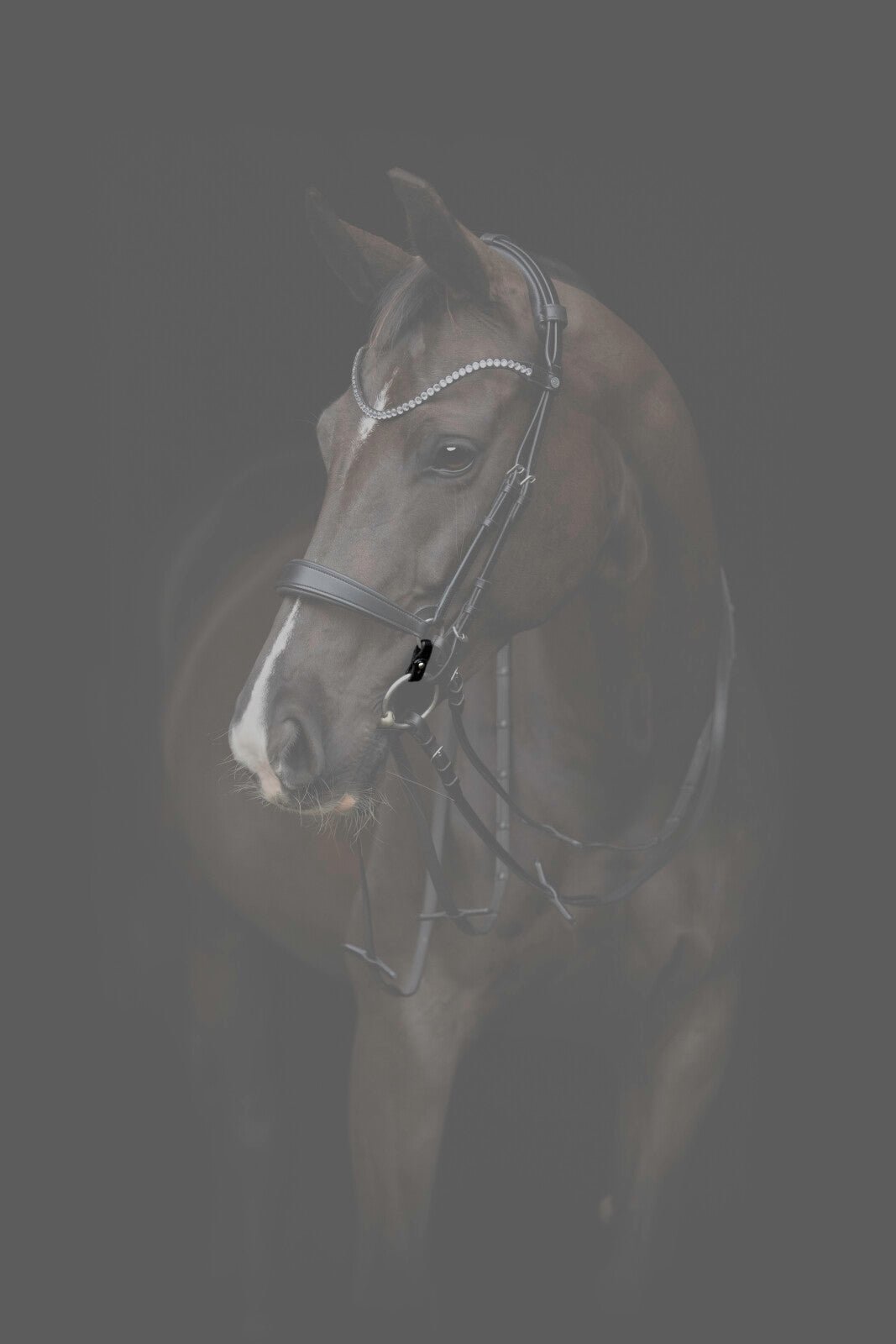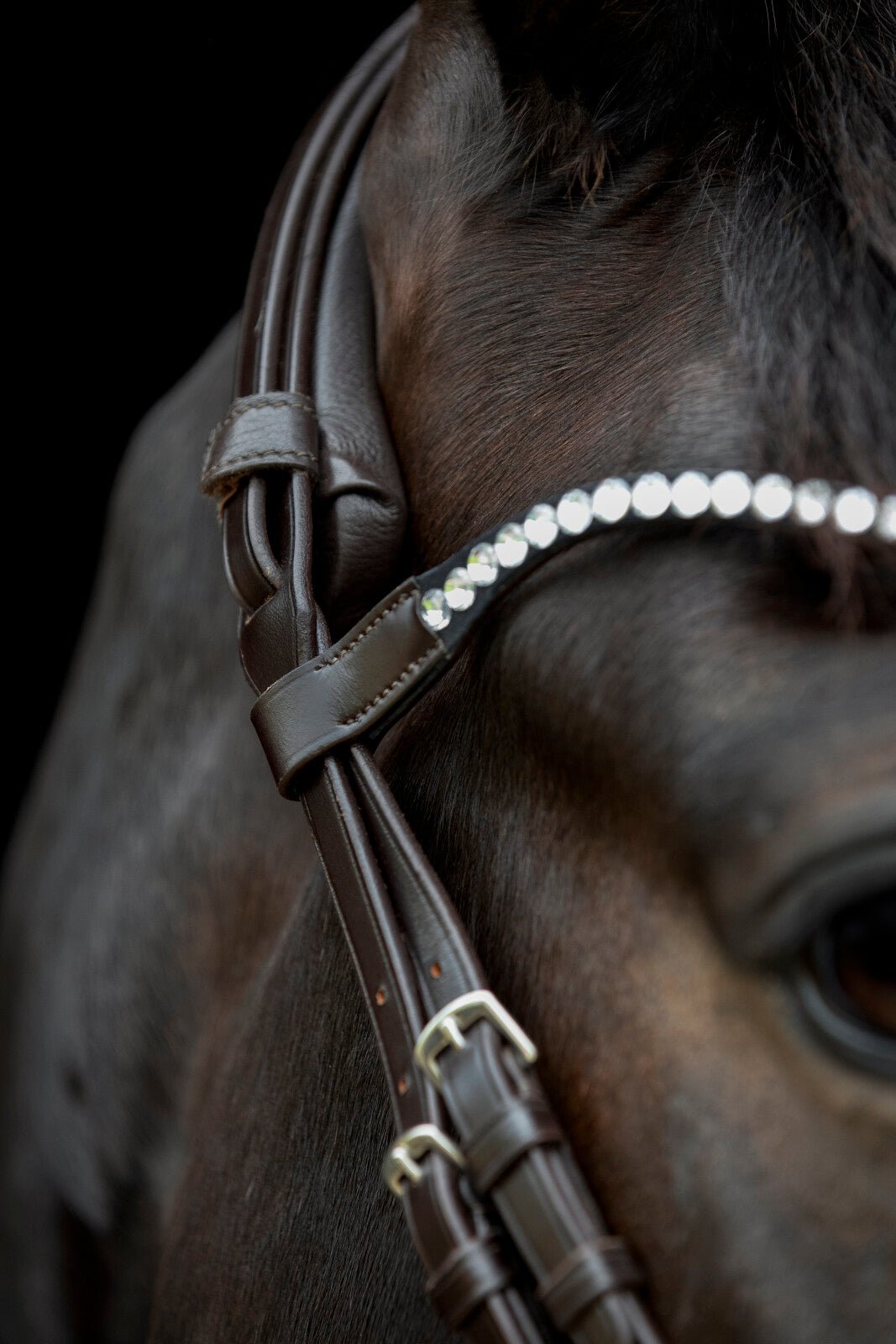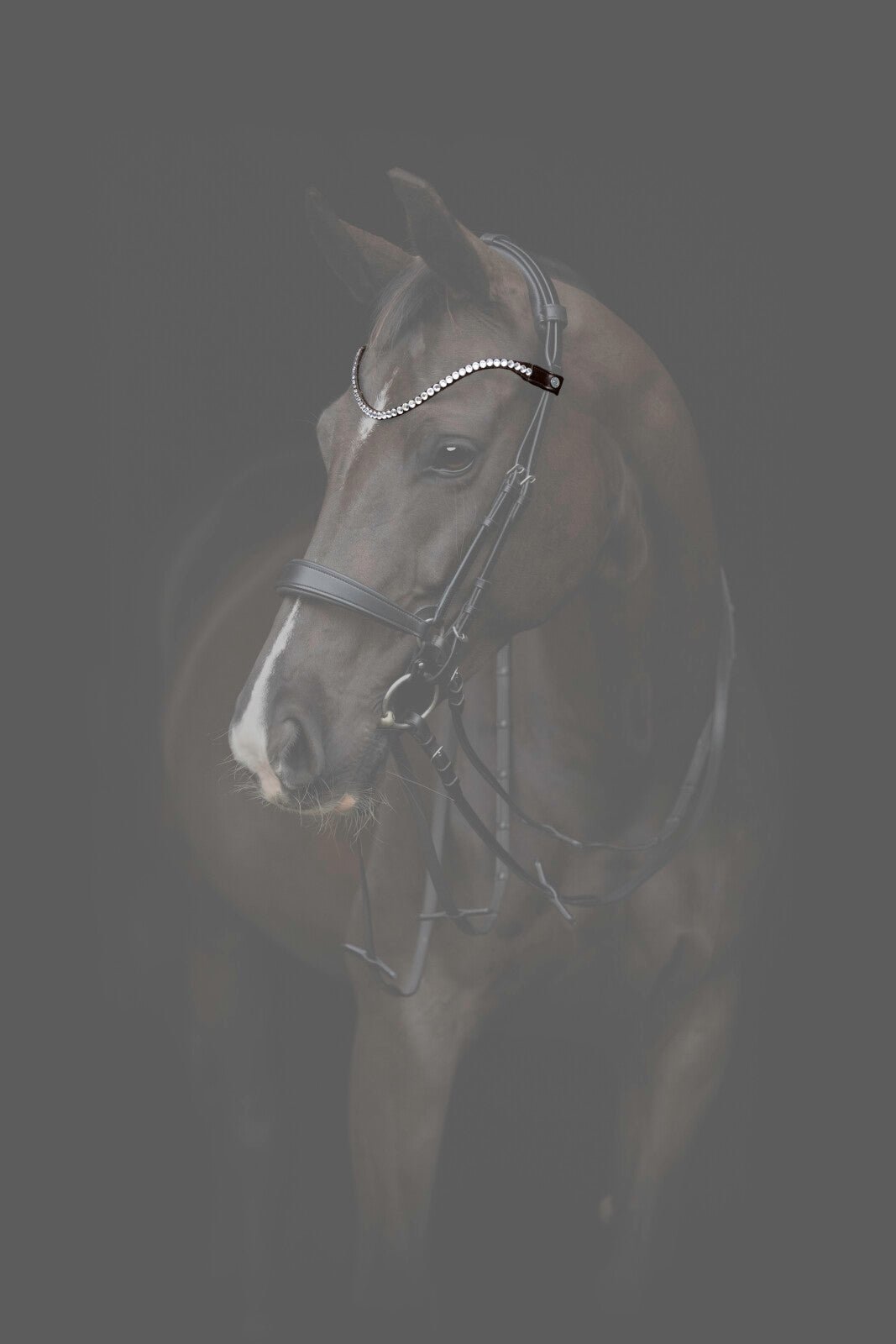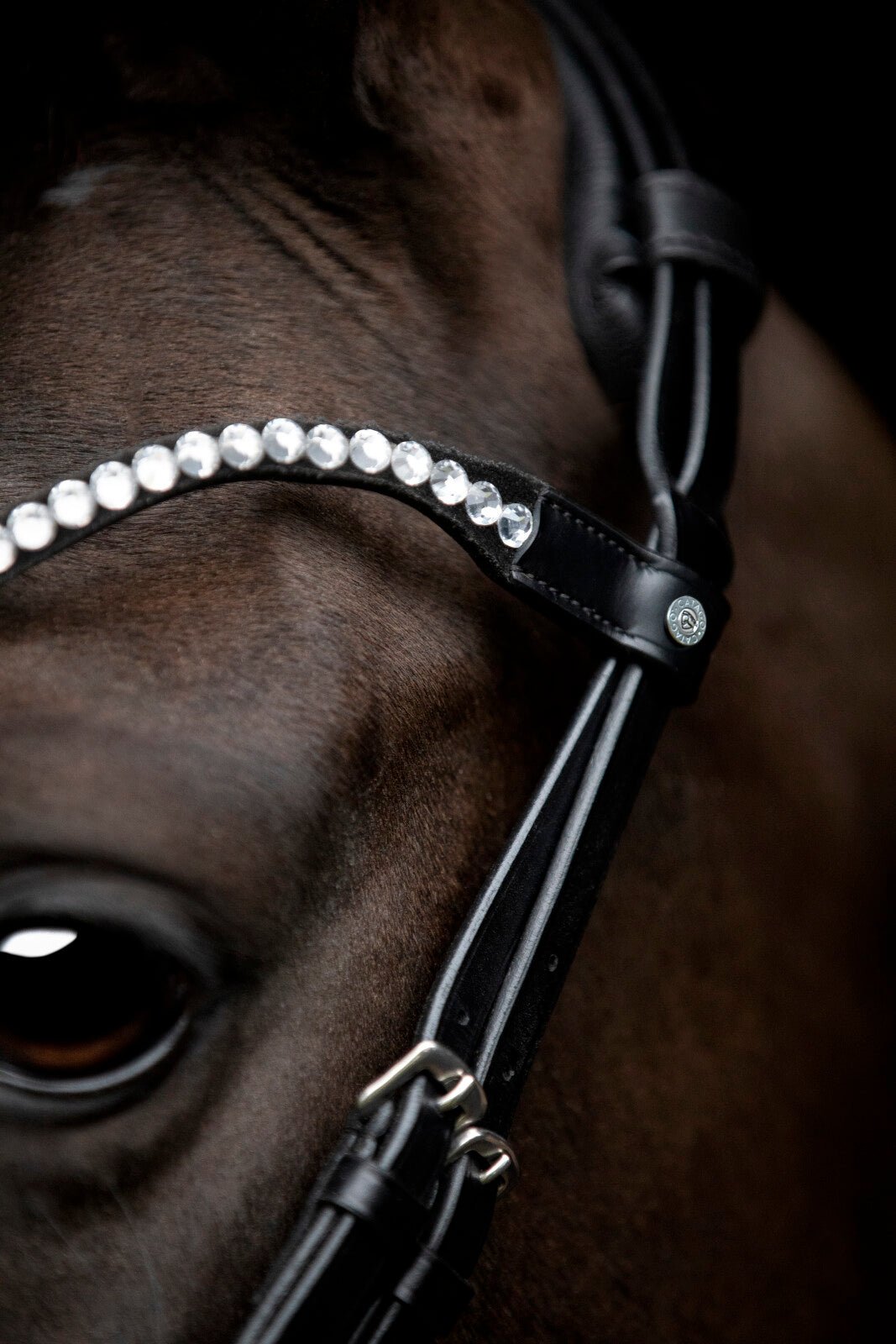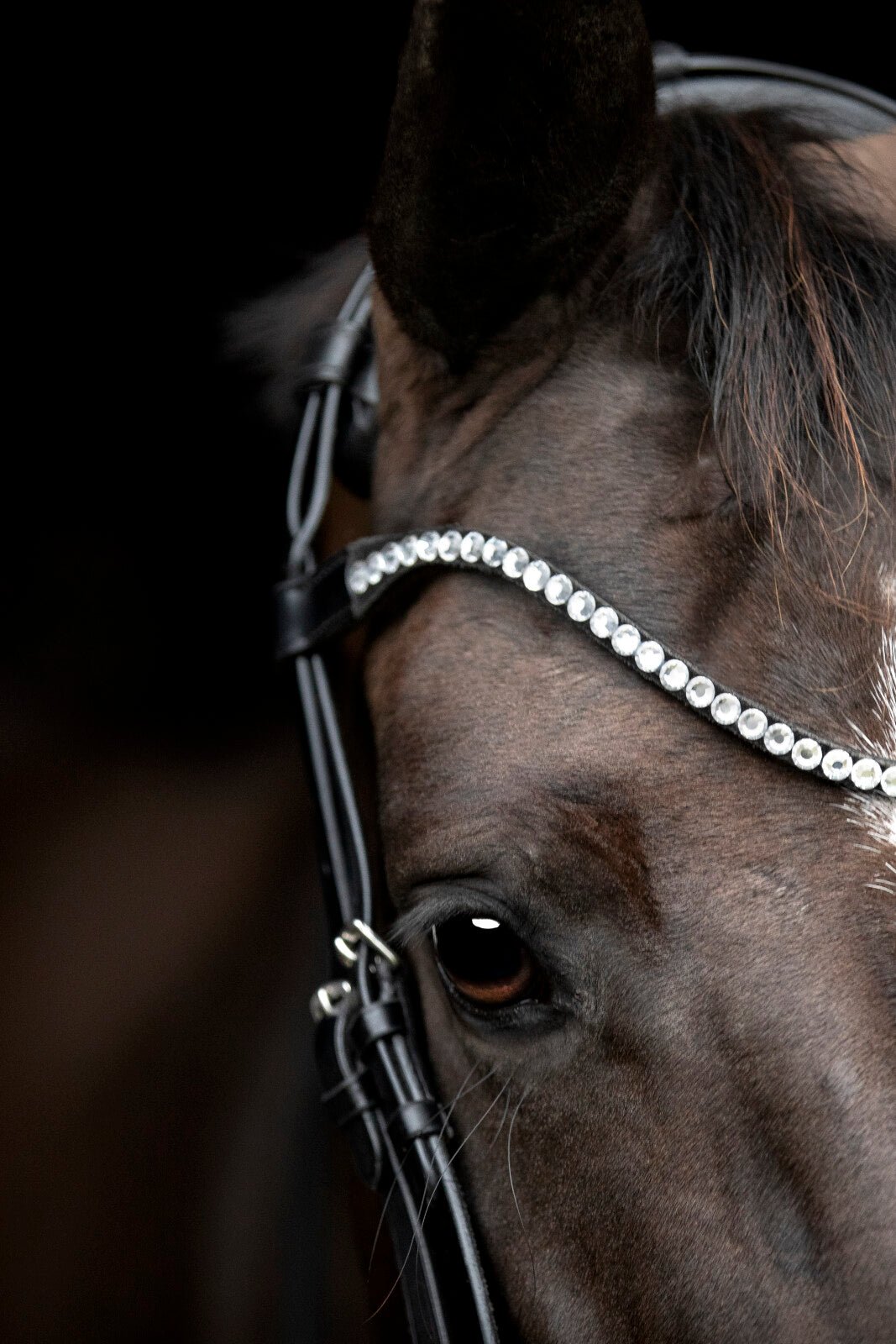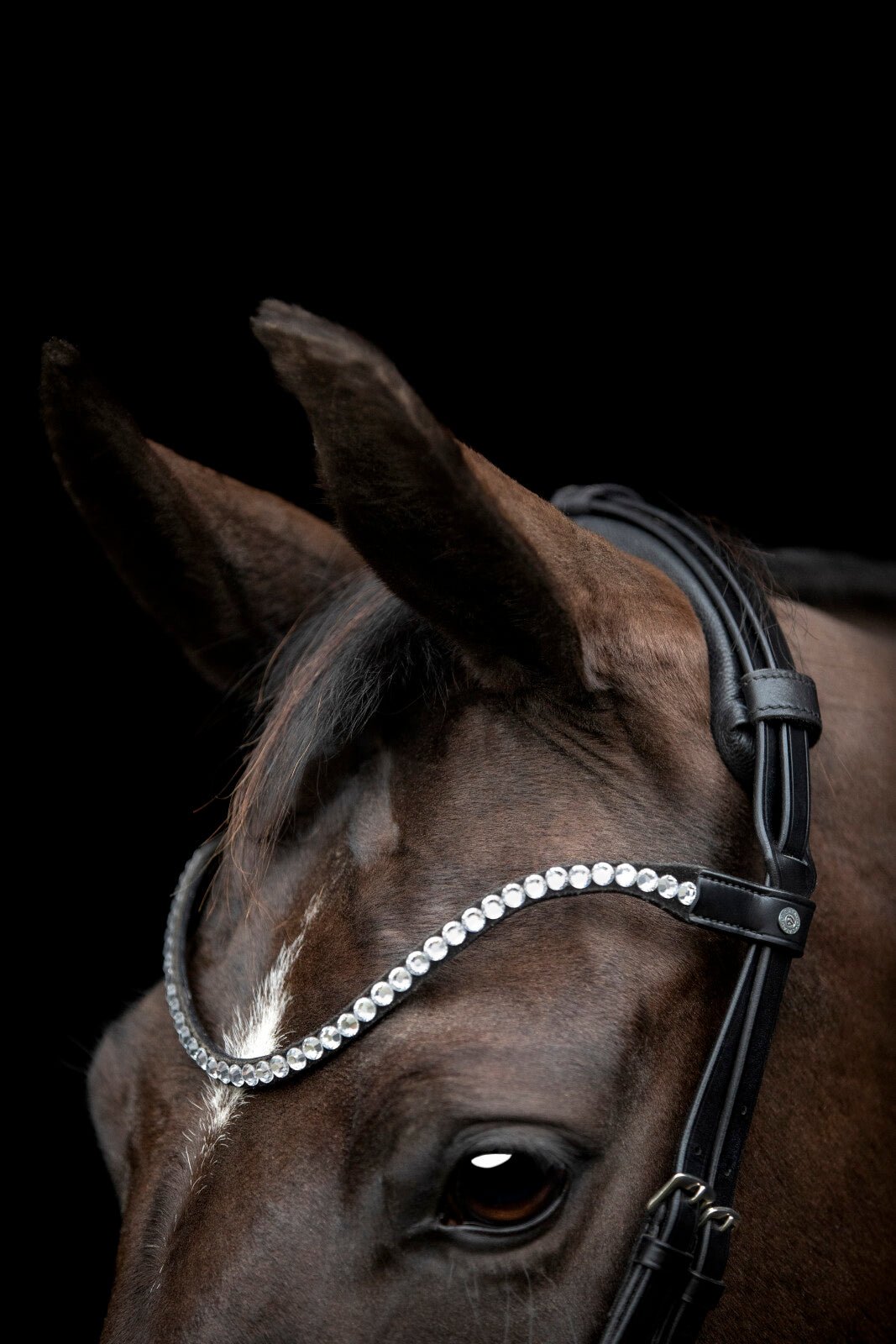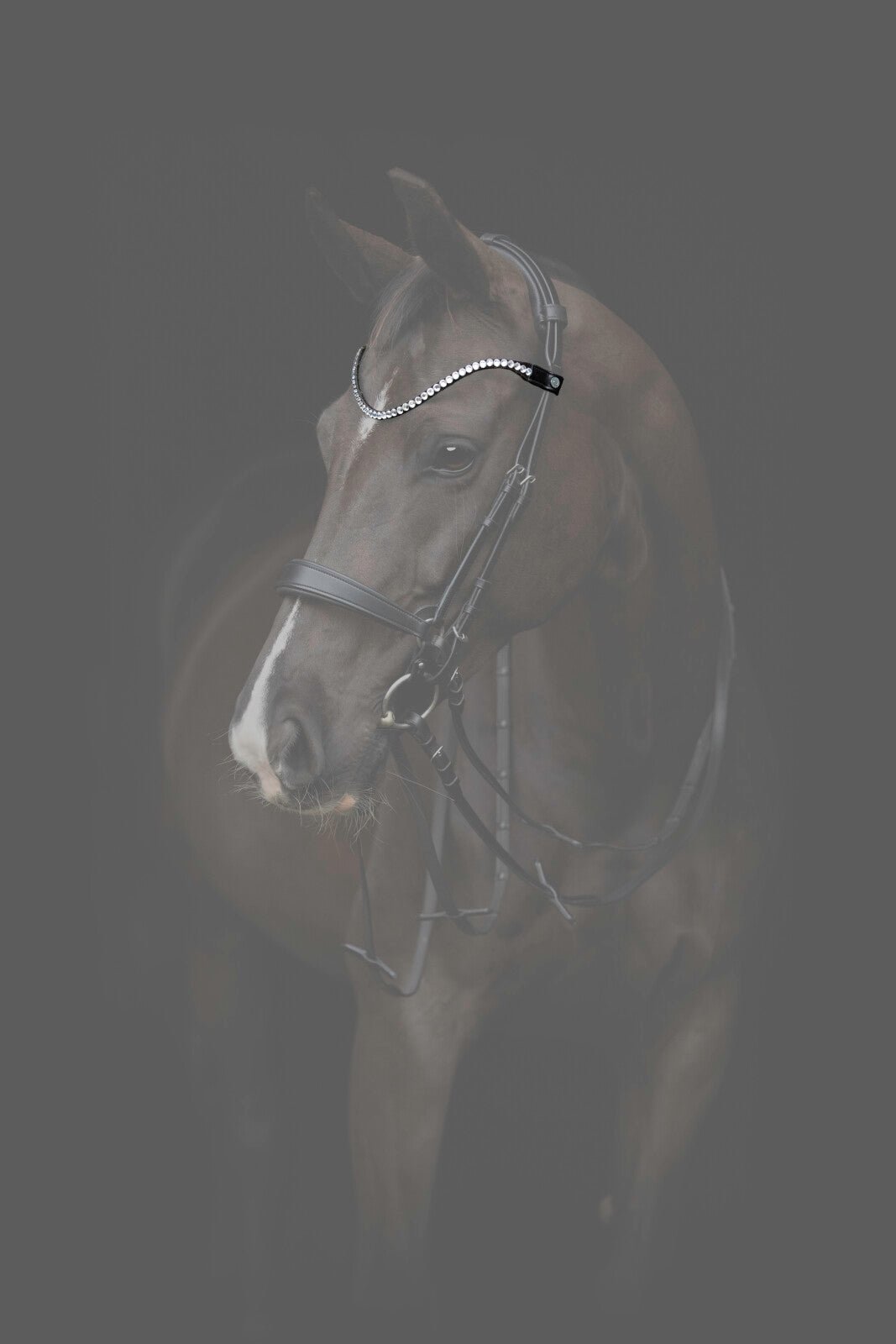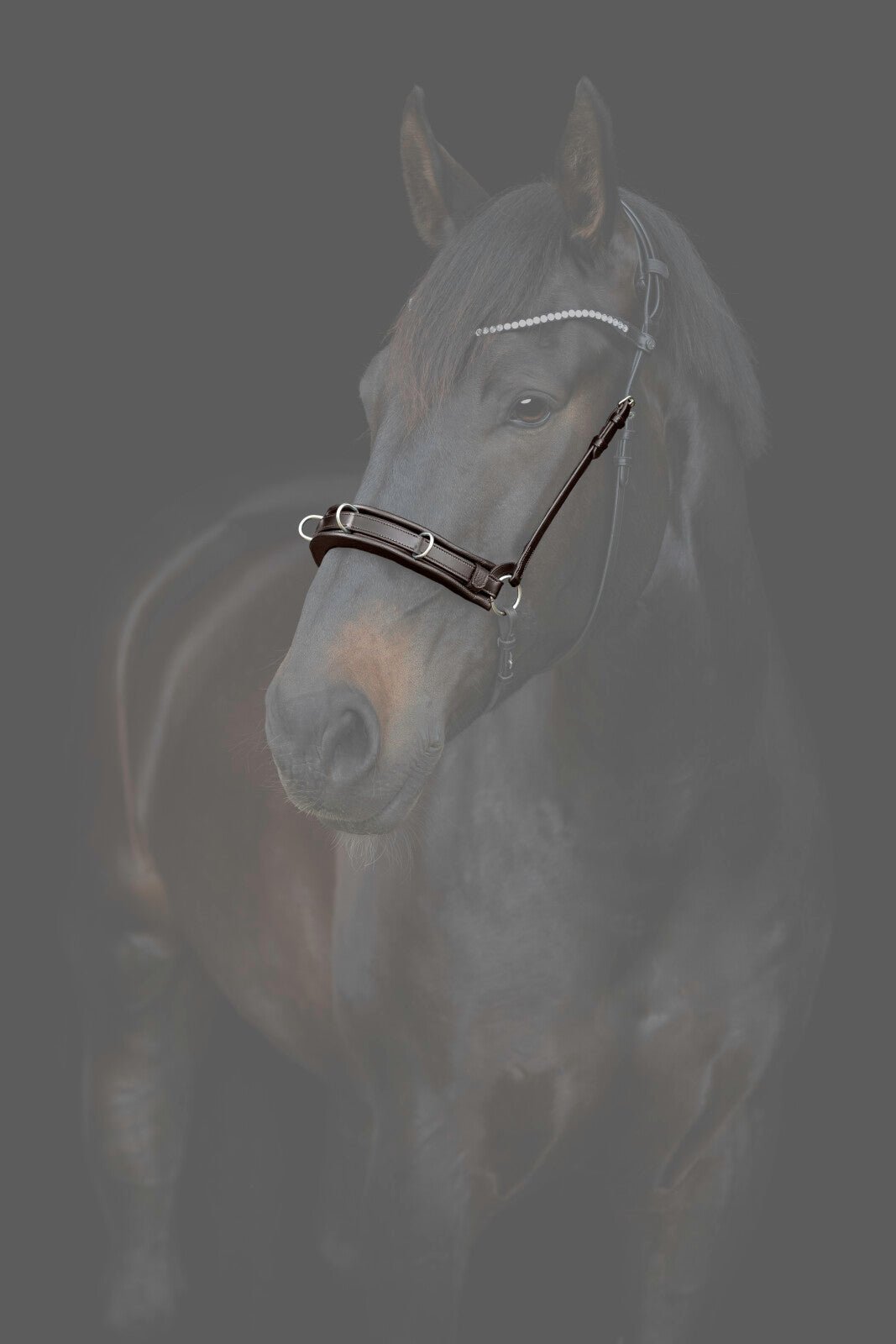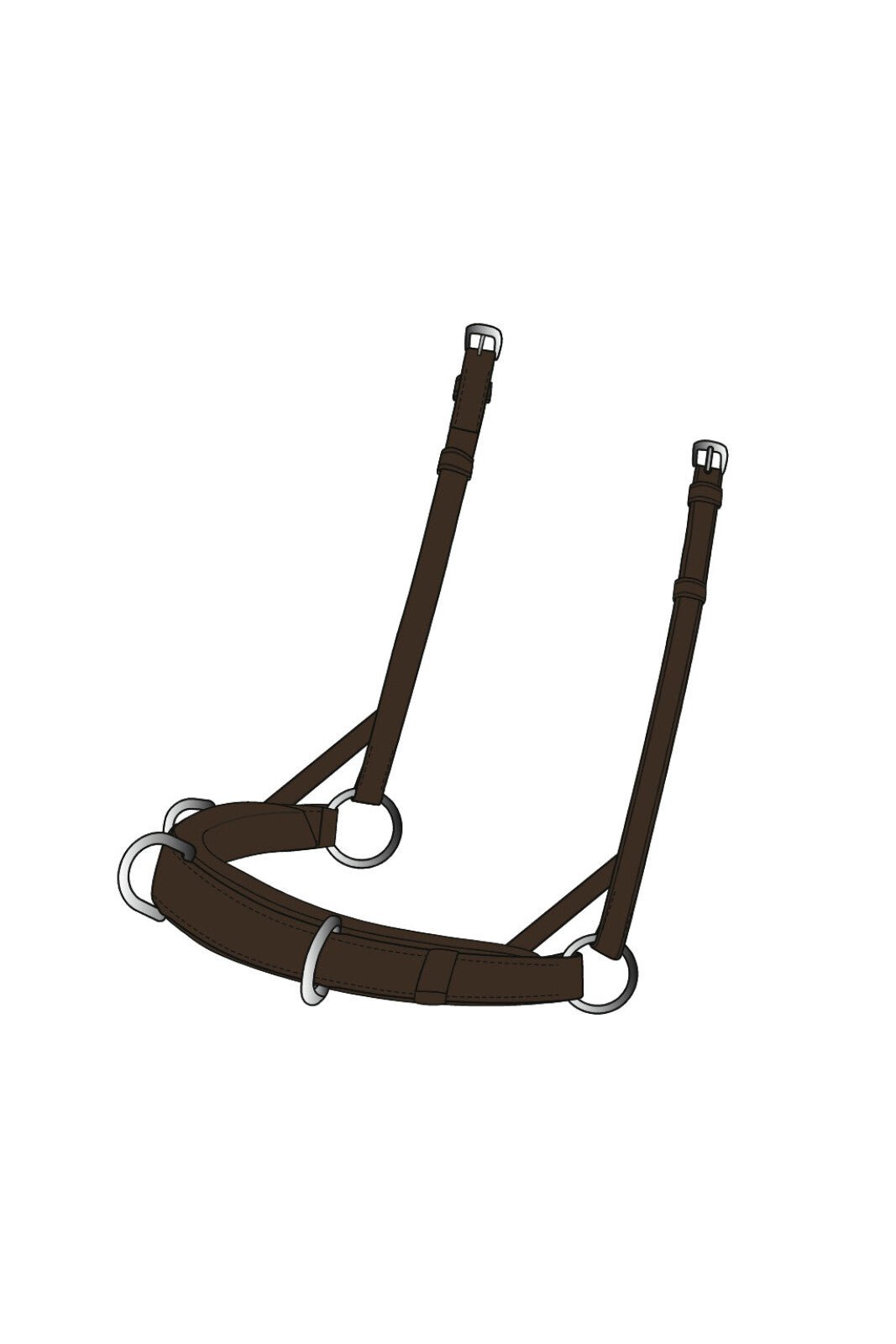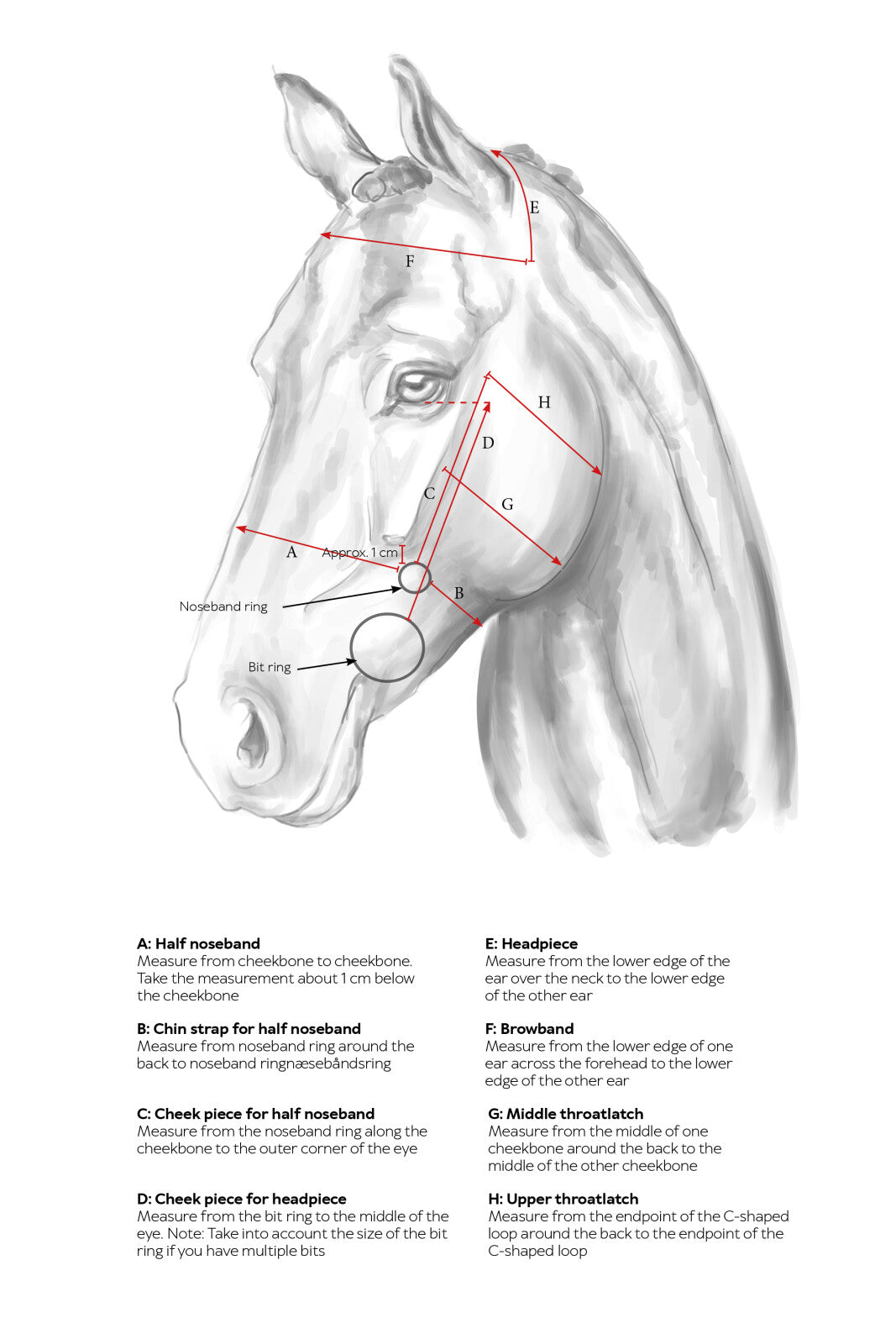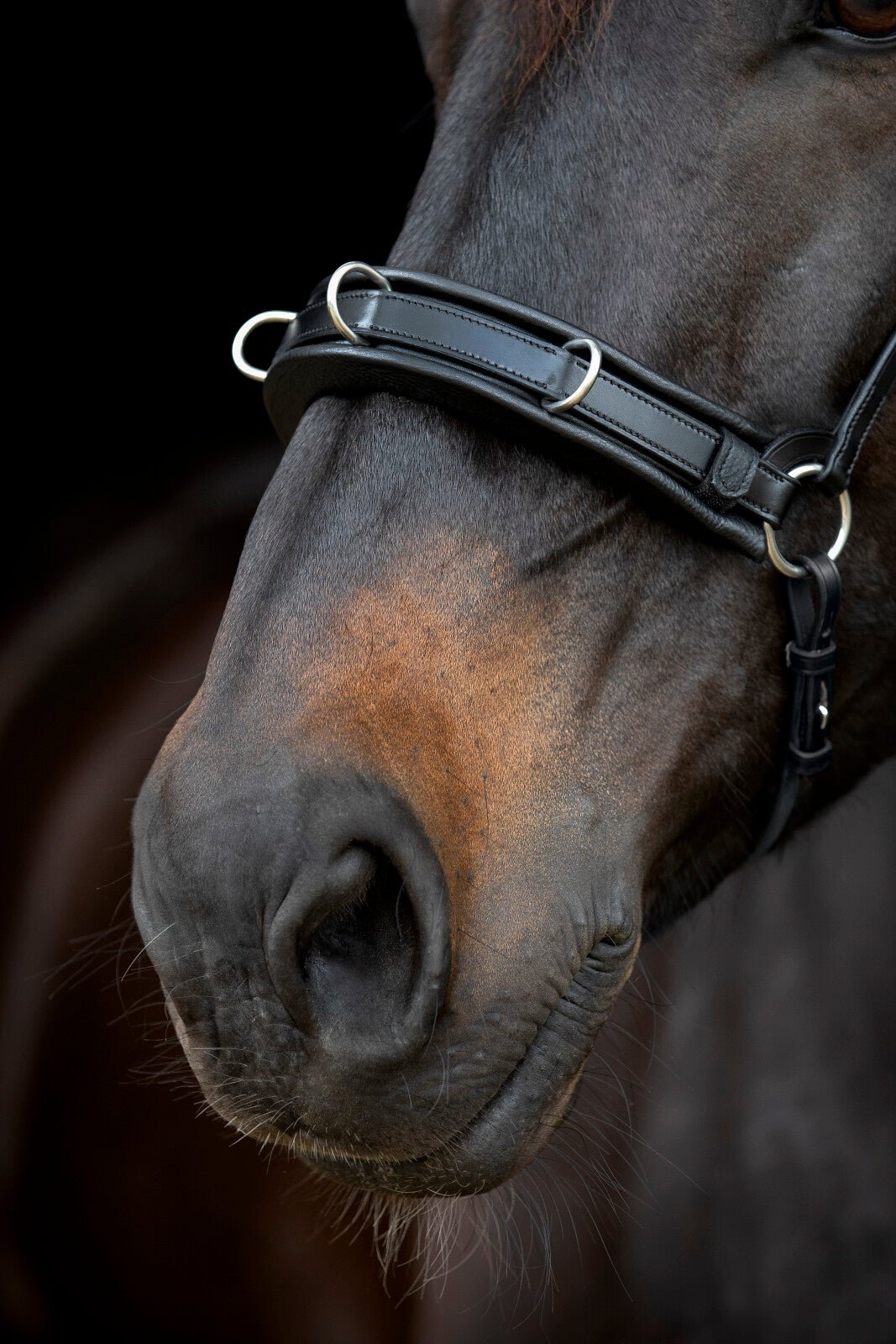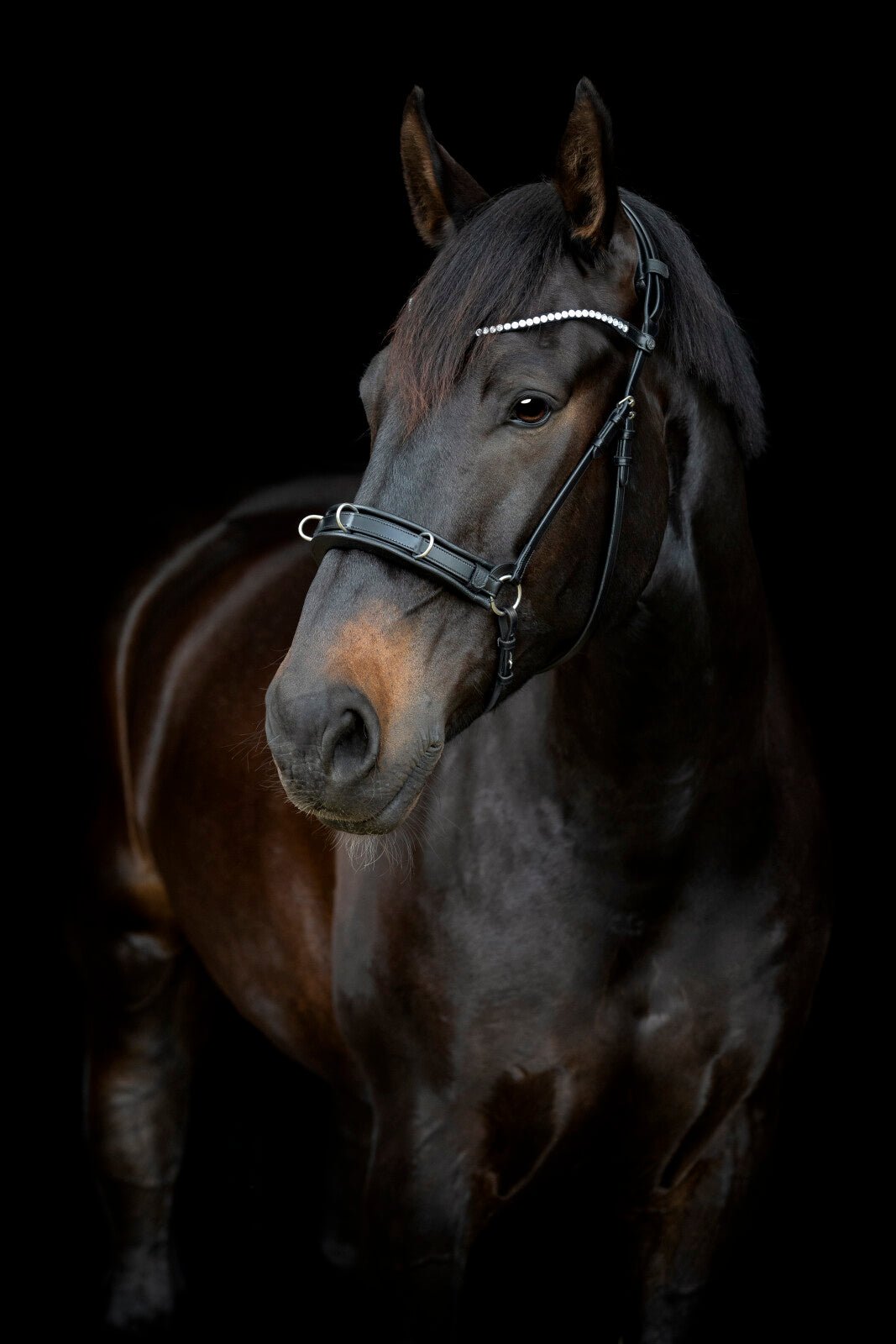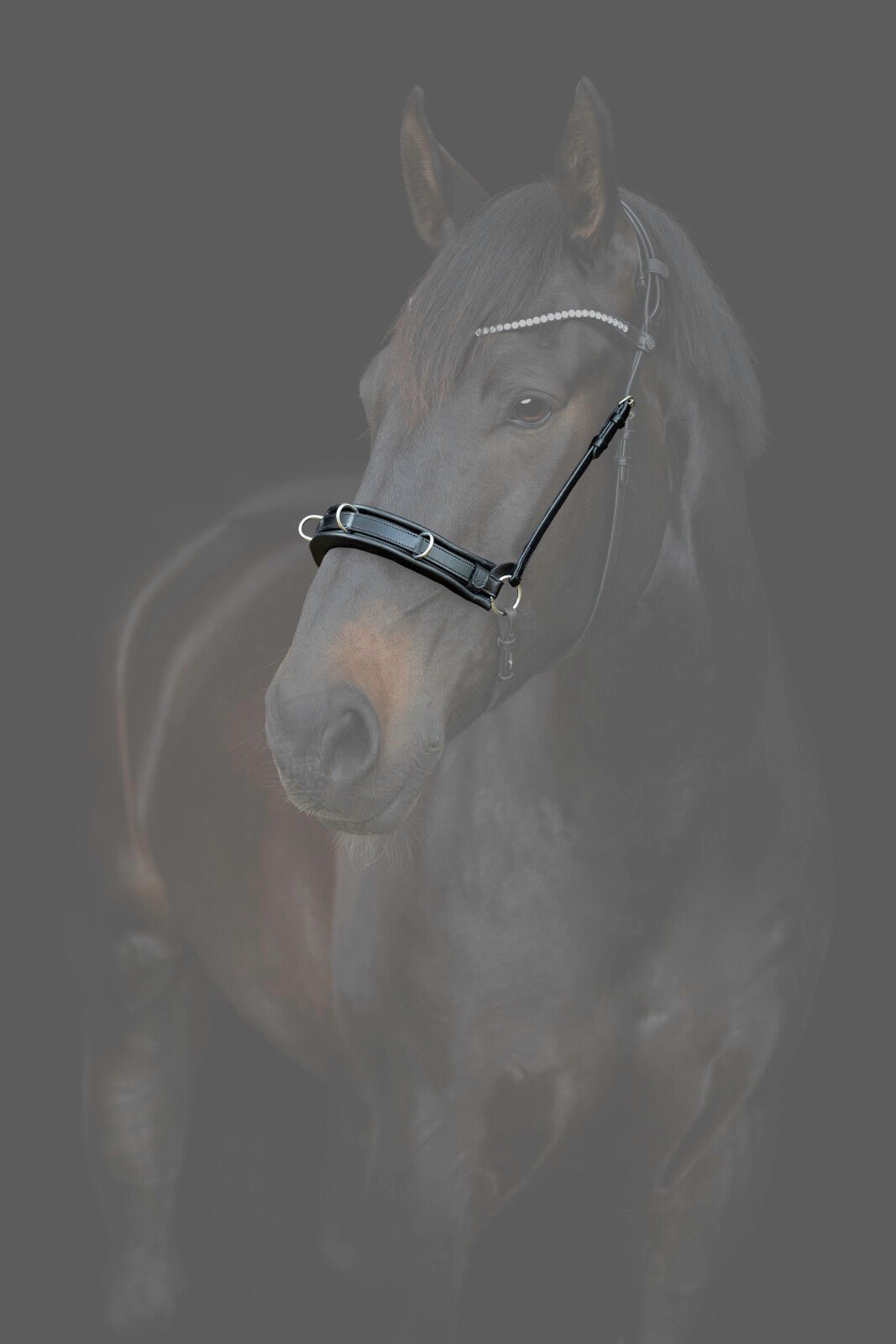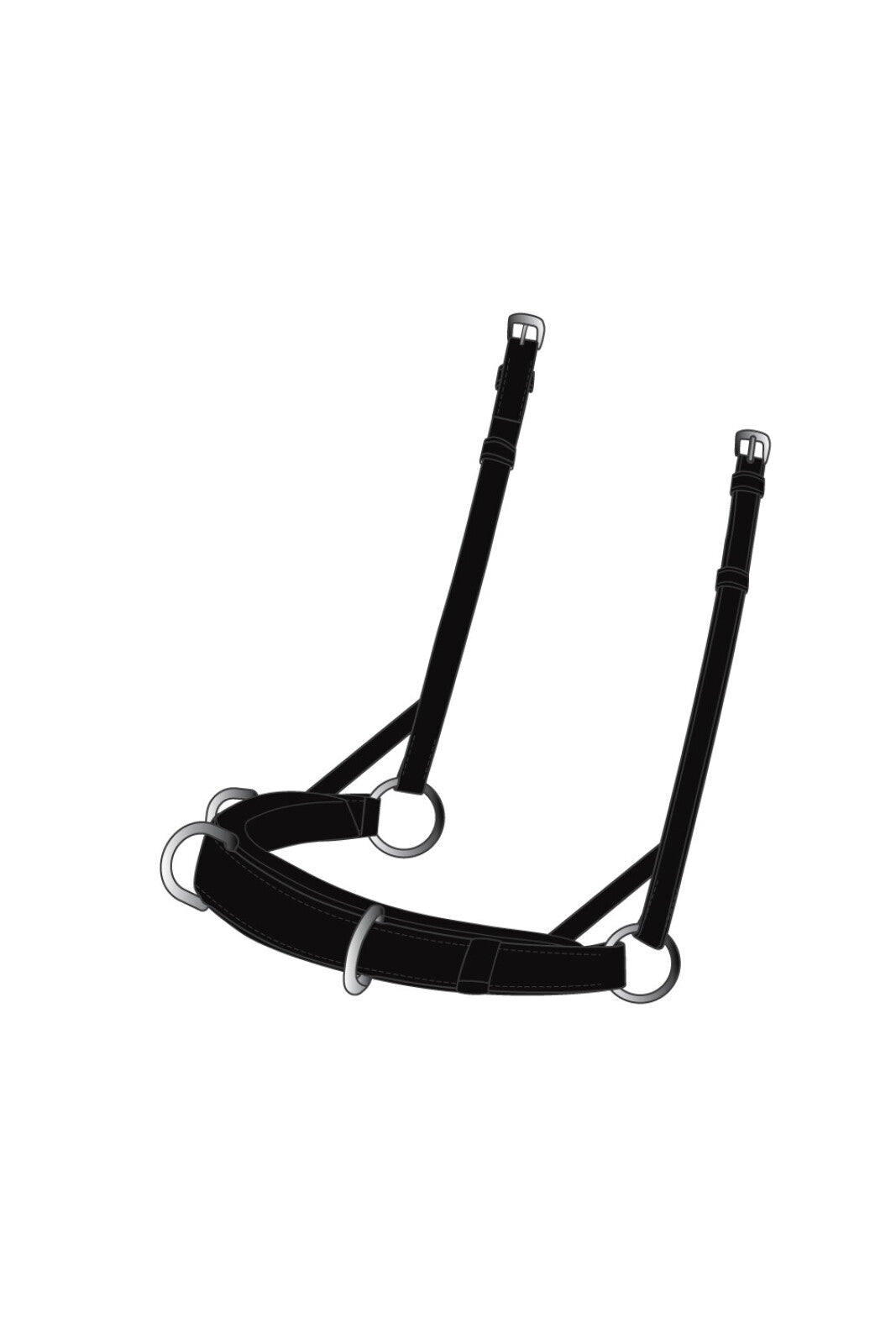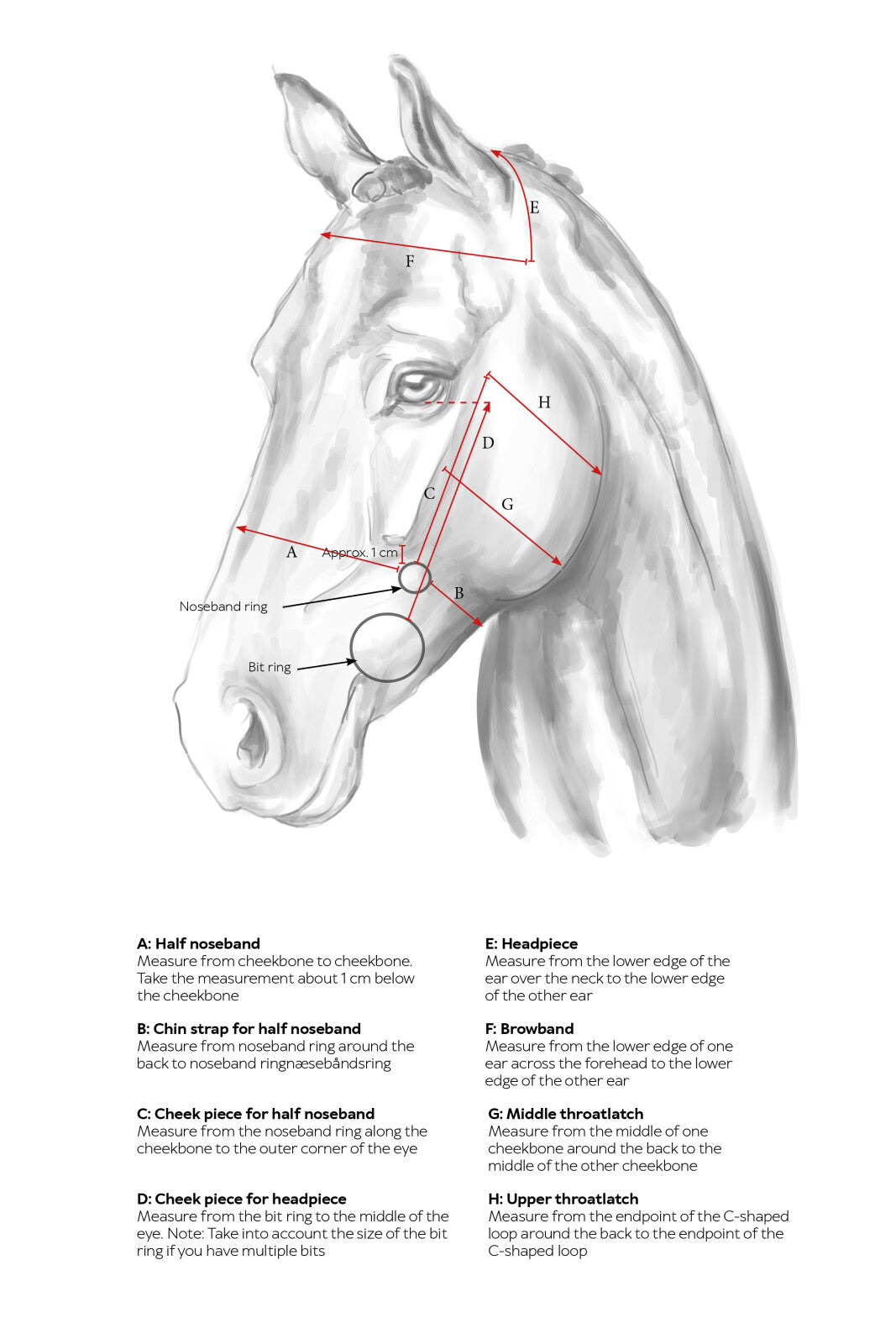Filter
18 Produkte
Stellen Sie sich ein Trensen vor, das der natürlichen Anatomie des Pferdes folgt und seine Bedürfnisse respektiert. Das ist die Idee hinter dem Catago Gentle Bridle - ein innovatives Zaumzeug, das mit tierärztlichem Wissen, praktischer Erfahrung und Respekt für das Wohlbefinden Ihres Pferdes entwickelt wurde.
Mit dem Gentle Bridle erhalten Sie ein Zaumzeug mit vielen Anpassungsmöglichkeiten. Das System bietet insgesamt sieben verschiedene Anpassungsmöglichkeiten, je nachdem, ob Sie mit oder ohne Gebiss, mit oder ohne Nasenriemen reiten möchten und vieles mehr.
Eine Trense, viele Funktionen
Die Catago Gentle Bridle ist ein modulares System, bei dem alle Teile separat gekauft werden. Das gibt Ihnen die Freiheit, den Trensen exakt auf die Anatomie und die Trainingsbedürfnisse Ihres Pferdes abzustimmen.
Vorteile des Catago Gentle Bridle:
- Kann als klassische Trense mit Gebiss
- Kann gebisslos oder ohne Nasenriemen verwendet werden
- Kann mit zwei Zügeln verwendet werden
- Geeignet für junge Pferde und empfindliche Pferde in der Eingewöhnungsphase
Anpassen des Trensens an die Bedürfnisse Ihres Pferdes
Alle Teile des Catago Gentle Bridle sind separat erhältlich (außer Genickstück und Genickpolster, die zusammen verkauft werden). Dies bietet eine Fülle von Anpassungsmöglichkeiten, so dass Sie die richtige Kombination für Ihr Pferd finden können.
Möchten Sie mit der Trense im Reithalfter reiten? Bevorzugen Sie eine Kandarenzäumung? Oder vielleicht möchten Sie gebisslos reiten? Die Möglichkeiten sind endlos.
Die Teile des Gentle Bridle:
- Das Genickstück und das Nackenpolster heben das Leder sanft vom Kiefergelenk weg und entlasten den Hals
- Das einzigartige halbe Reithalfter hat ein schützendes Polster in der Mitte, das das Leder von all den feinen Nerven und Blutgefäßen weghebt, die seitlich am Nasenrücken des Pferdes verlaufen. Das Reithalfter hebt auch die Backenstücke weiter von der Haut ab. Sie können die Zügel in den Reithalfter einlegen, um dem Pferdemaul eine Pause zu gönnen
- Das Kapsun Reithalfter ist in der gleichen Halbausführung wie das normale Reithalfter gefertigt, um das Kiefergelenk zu schützen. Das Kapsun-Nasenband ist mit einem Schutzpolster unterlegt
- Das Stirnband ist schlank und leicht mit einer sanften Biegung und einer Kurve gefertigt, die zusammen mit dem Genickstück das Leder vom Kiefergelenk des Pferdes wegführt.
Zusätzlich können Sie passend zum Trensenzaum auch Kieferriemen, Nasenriemen und Backenstücke kaufen.
Rücksicht auf Unterkiefer, Zähne und Haut des Pferdes
Was den Catago Gentle Bridle von anderen Trensen unterscheidet, ist vor allem der einzigartige halbe Reithalfter. Dieses Reithalfter nimmt unnötigen Druck von wichtigen Bereichen des Pferdekopfes.
Das Reithalfter hebt das Leder sowohl vom Nasenrücken als auch vom Kiefer weg, und das Reithalfter schützt auch die Zähne, die Zunge, den Stall und das Maul des Pferdes im Allgemeinen.
Gentle Bridle reduziert den Druck auf:
- Blutgefäße und Nerven
- Die Zähne und Gelenke
- Kiefergelenk
- Unterkiefer
- Nasenrücken
- Nasenlöcher
- Zunge
- Hals
- Ohren
Erhöht Mobilität des gesamten Pferdekörpers
Ein besonderer Schwerpunkt des Catago Gentle Bridle ist die Druckentlastung des Unterkiefers des Pferdes, der eng mit dem Kiefergelenk verbunden ist.
Diese Entlastung erhöht die Beweglichkeit im gesamten Körper des Pferdes, da das Bewegungsmuster des Pferdes im Kopf beginnt.
Durch die Berücksichtigung der wunden Punkte des Pferdes und die Wahl eines Trensens, der die Strukturen berücksichtigt, die den Kopf des Pferdes mit dem Rest des Körpers verbinden, wird ein entspannter, harmonischer Bewegungsablauf geschaffen.
Gebisslose Zäumung - es muss nicht entweder/oder sein
"Ich empfehle, abwechselnd gebisslos und mit Gebiss zu reiten. Das ist sowohl eine schöne Abwechslung für das Pferd als auch eine Möglichkeit, sein Reiten auf Herz und Nieren zu prüfen. Kann ich mein Pferd ohne Gebiss genauso gut gehen lassen wie mit? Wenn Sie das bejahen können, haben Sie wirklich etwas erreicht", sagt Heidi Nielsen, Tierärztin, Pferdezahnärztin und Mitentwicklerin des Gentle Bridle von Catago.
Wie reitet man mit einem gebisslosen Trensen?
Mit einem gebisslosen Trensen reitet man auf denselben Hilfen wie gewohnt, aber ohne Gebiss. Das bedeutet, dass die Hilfen, die Ihnen zur Verfügung stehen, direkter Zügelkontakt, indirekter Zügelkontakt am Hals des Pferdes, Stimmsignale, Shanks, Sitz und Gewicht sind.
In den letzten Jahren ist das Wohlbefinden des Pferdes immer mehr in den Vordergrund gerückt und die Frage gestellt worden, ob wir unsere Pferde sanfter reiten können.
Ein Schwerpunkt liegt dabei auf Zaumzeug und Gebiss, denn wir wissen inzwischen, dass beides unnötigen Druck auf die Nerven in Kopf und Maul des Pferdes ausüben kann.
Catago Gentle Bridle - für Turniere zugelassen
Das Gentle Bridle ist vom DRF für den Einsatz bei Dressurturnieren zugelassen, sofern das Zaumzeug korrekt verwendet wird.
Die folgenden Anforderungen müssen bei Dressurturnieren eingehalten werden:
- Die Trense muss am Gebiss befestigt sein
- Ein Kieferriemen muss angebracht und korrekt eingestellt sein
- Ein Kinnriemen muss angebracht und korrekt eingestellt sein
- Darf sich nicht zwischen Gebiss und Nasenriemen befinden
Wenn die Ausrüstung Teil des Wohlbefindens des Pferdes wird
Der Catago Gentle Bridle ist mehr als nur ein Trense - er ist eine Philosophie in Aktion. Ein Weg, dem Pferd Respekt zu erweisen, die Fürsorge zu erweitern und ein Zaumzeugdesign zu wählen, das den gesamten Pferdekörper berücksichtigt - von den Zähnen, der Zunge und dem Stall des Pferdes bis hin zur Beweglichkeit des Kiefergelenks.
Ihr Pferd verdient das Beste
Wenn Sie das Wohlbefinden Ihres Pferdes während und nach dem Reiten unterstützen wollen, werfen Sie einen Blick auf Catago FIR-Tech. Die gewebten Keramikfasern des fortschrittlichen Geräts geben Infrarotwärme ab, die die Blutzirkulation steigert und Schmerzen lindert - auf natürliche und sanfte Weise.
Sehen Sie unsere große Auswahl für Pferd und Reiter
Unamari hat die gesamte Ausstattung an Pferdausrüstung, um Ihnen das bestmögliche Reiterlebnis zu bieten. Wir sind stolz darauf, Qualitätsprodukte für Reiter und Pferd herzustellen, denn wir sind selbst Pferde- und Reitbegeisterte. Wir wissen, was der Reiter braucht und was das Pferd braucht - und wir sind stolz darauf, unser Wissen und unsere Erfahrung zu teilen.


